Crystal Downs Country Club
Frankort, Michigan, USA
Architects: Dr. Alister Mackenzie and Perry Maxwell (1929)
Par 70, 6,518 Yards
Rating/Slope: 72.3/138
My Quick Review: 5-8 may be the best stretch of golf in the world.
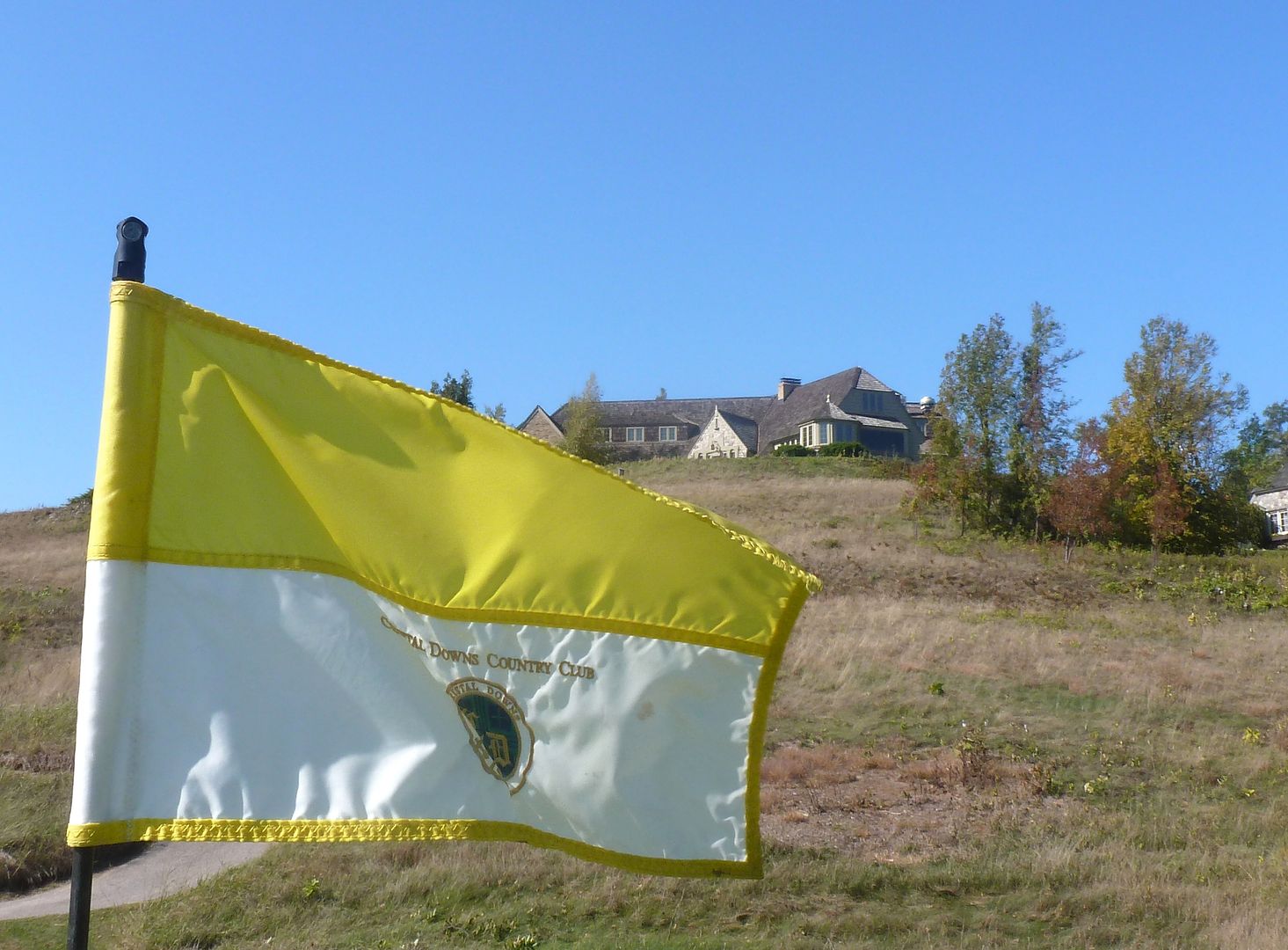 |
| Flag on 18th Green -- Member's Clubhouse in backround |
First, a couple of teaser photos, the first an overview of the front 9 from the first tee, the second from the 9th green.
The understated entrance at Crystal Downs
Scorecard Information
Routing
My Thoughts
Based on my one and only play, here are a few things that I noted:
1) Crystal Downs may be the longest 6500 yard golf course in the world. I believe this is because many of the landing areas are sloped back towards the tee, minimizing roll.
2) The greens are among the best set I have ever seen. While several are amazingly wild and undulating (7 and 13), it is their variety in size, shape and slope that make them so interesting.
3) Local knowledge is extremely important. There are places off the tee, on the approach and on the green that one simply cannot hit the ball at Crystal Downs.
4) The bunkering at CD is unlike any I have ever seen. In many cases bunkers seem to flow naturally out of the base of trees (hole 15) or from the woods (hole 3, 4) or in the fescue (hole 12).
5) False-fronts. There are a few of them and they are nasty. The false-front on 8 can have the ball roll back 50 yards into the fairway. The false-front on 10 has the ball roll not straight back, but back and to the right dead behind the front-right bunker. The false-front on 17 leaves an unbelievably difficult pitch.
6) The stretch of holes from 5-8 may be the best I have ever played. Also, individual holes like 1, 13, 15 and 17 are exceptional. I was underwhelmed by holes 2, 10, 12, 16 and 18. I am certain that my one play failed to reveal their greatness and this is part of the reason I started this thread.
7) This is not about the golf course, but as been mentioned many times before, once inside the gates one is treated like a member. Truly exceptional staff and a wonderful atmosphere.
Hole 1: Par 4, 460 Yards
As a first-time visitor, standing on the first tee at Crystal Downs is both exhilarating and nerve-wracking. The entire front-nine is clearly laid out in front of you.
Playing your first round, you probably know two things. First, stay below the hole. Second, to stay below the hole, keep it in the short grass. With that knowledge in mind, you must know hit your first shot of the day into the prevailing wind, to a narrowish fairway some 50 feet below the teeing ground. This is truly a half-par hole to the plus side.
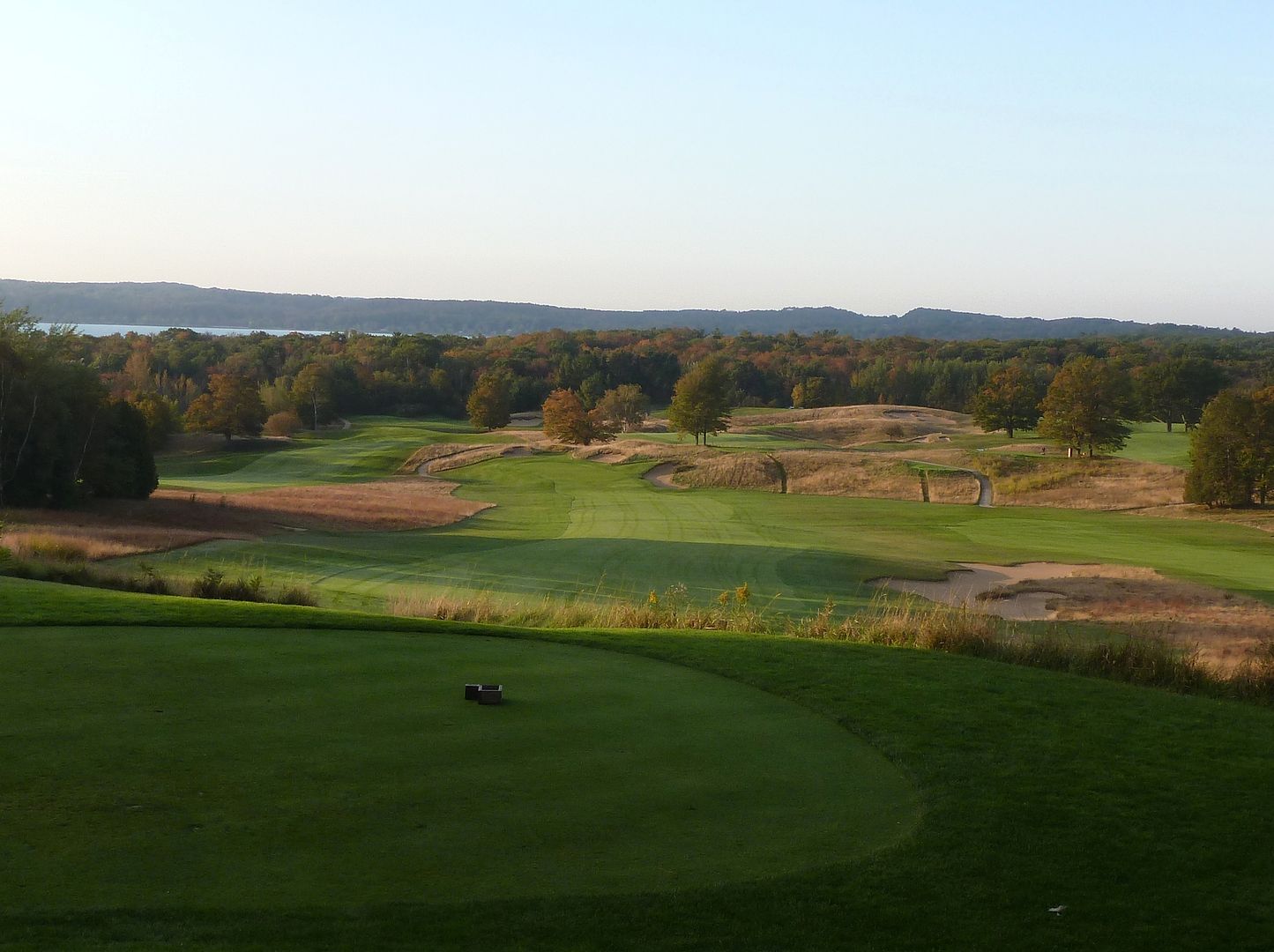 |
| 1 Tee |
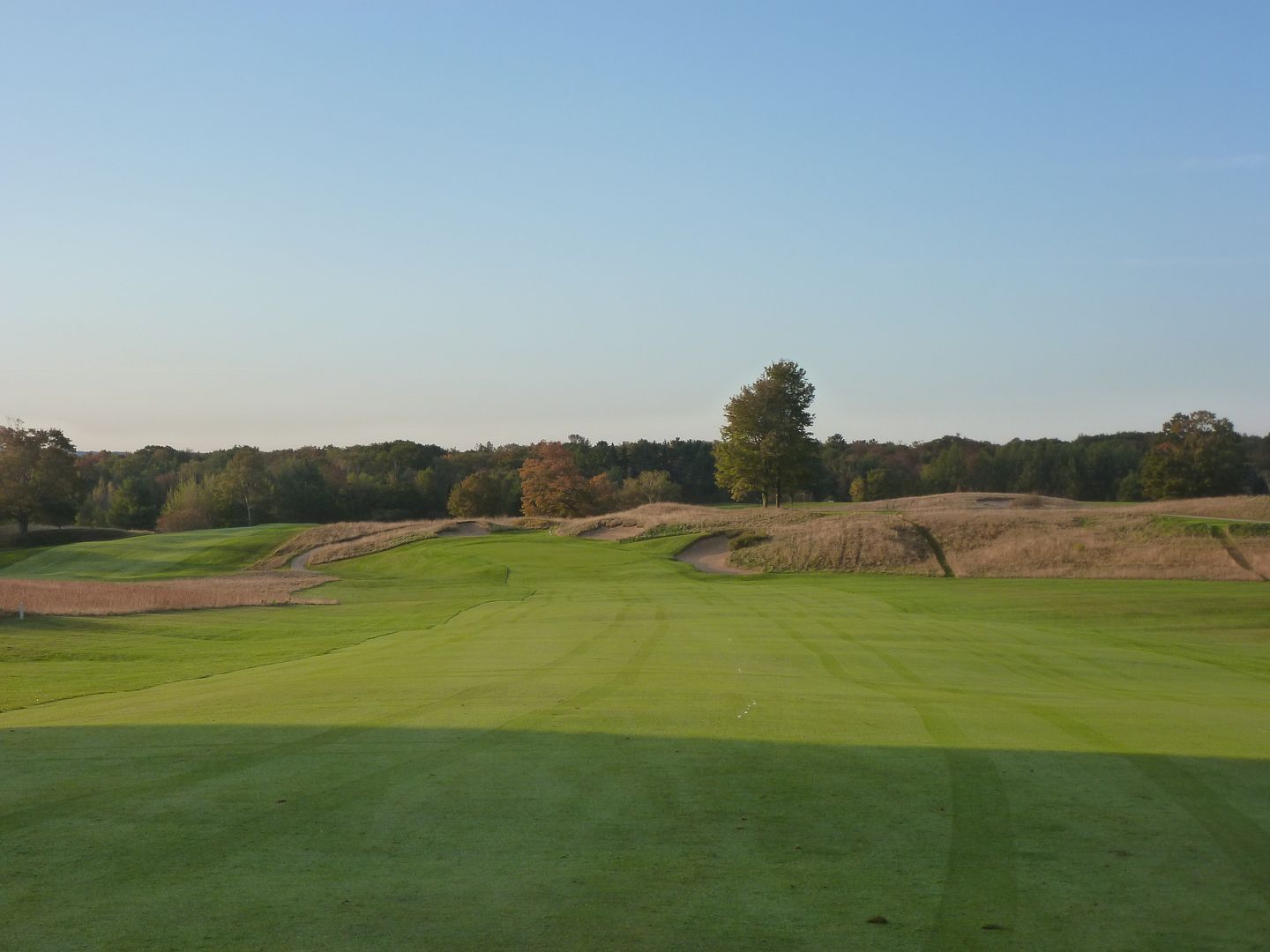 |
| A gently rippling fairway |
 |
| A difficult approach to the first -- Three bunkers benched flawlessly into the hill right of the green |
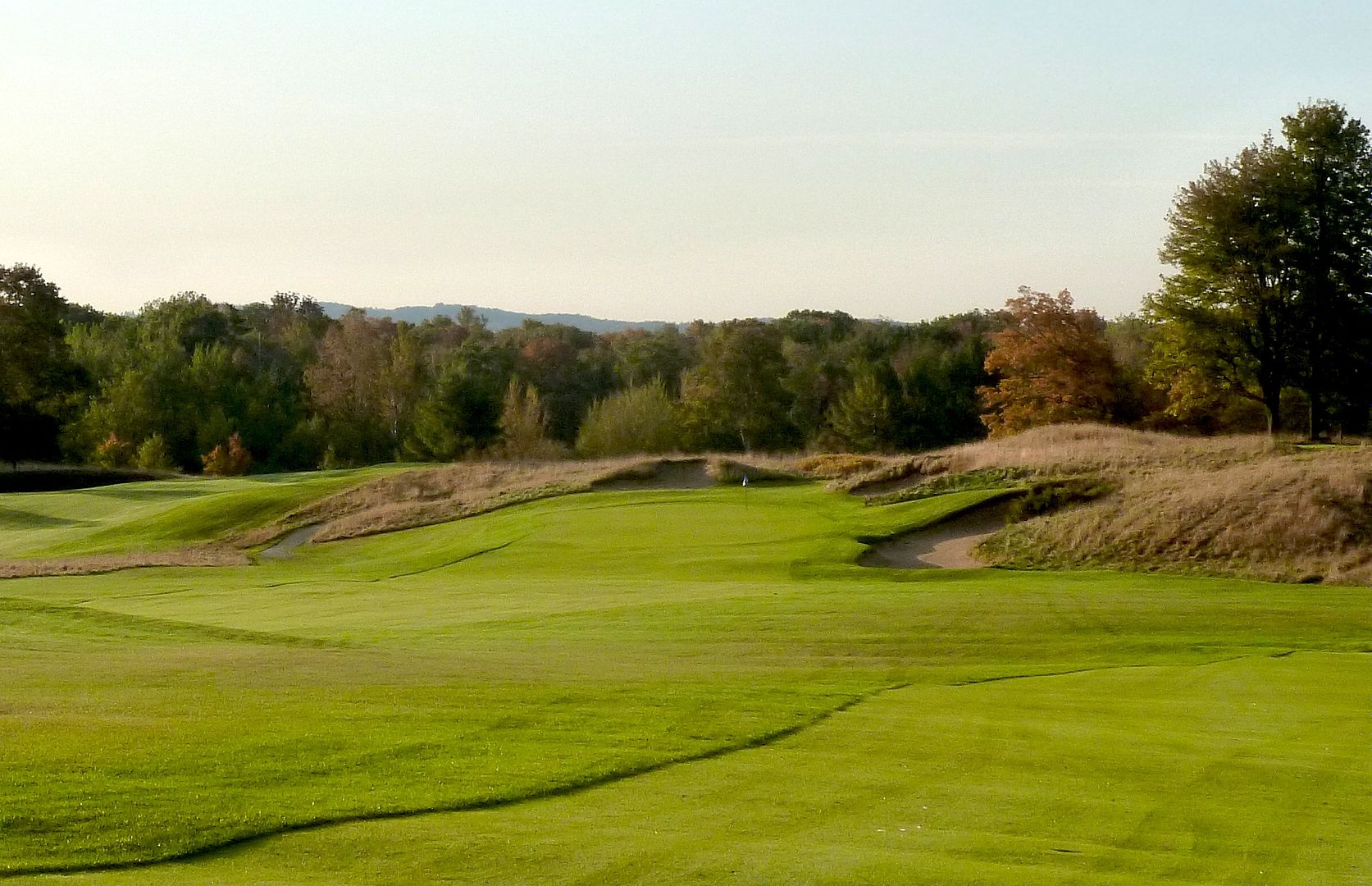 |
| 1 Green from 2 Fairway |
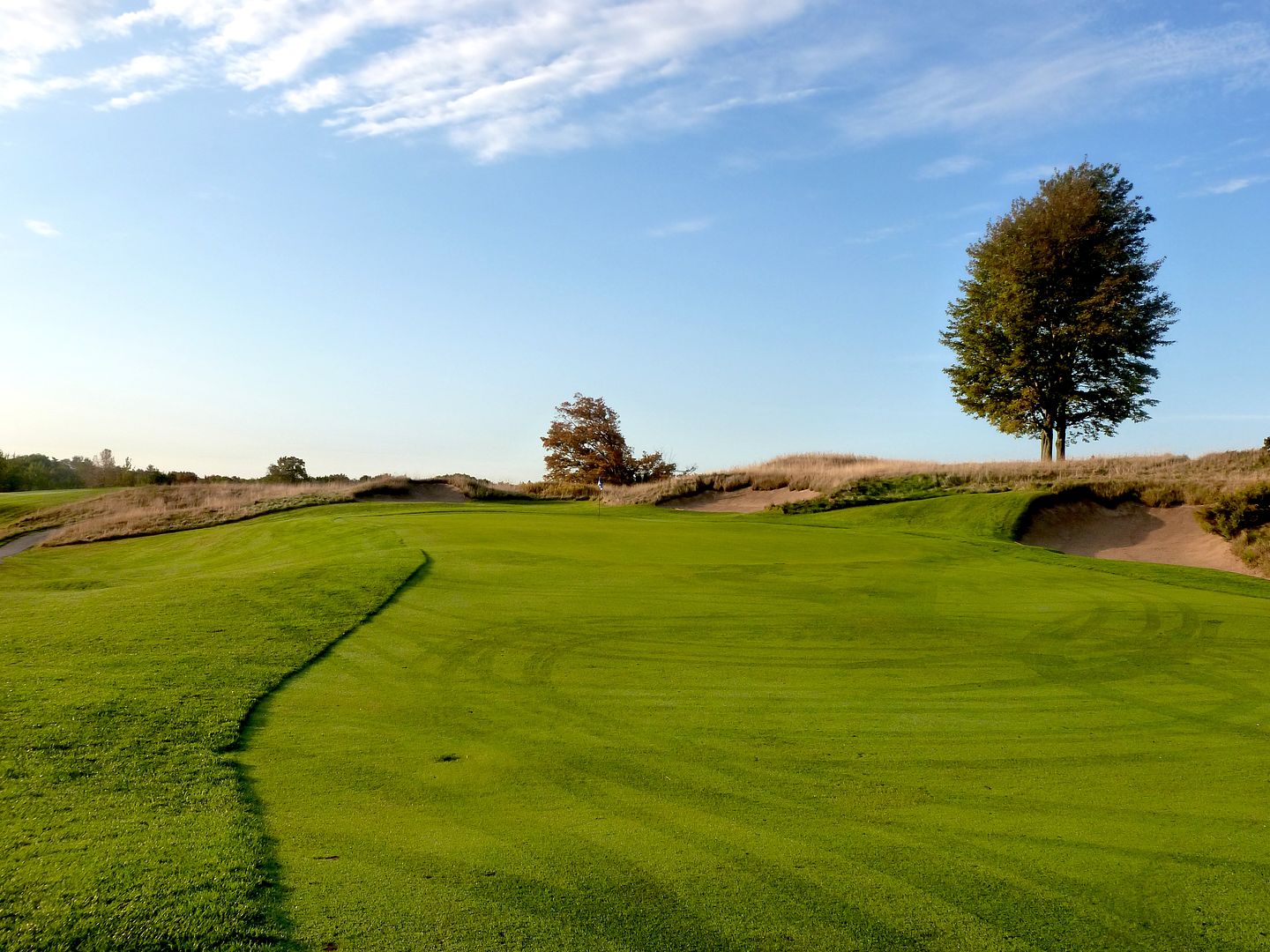 |
| From just short-left of the green the drastically back-to-front nature of the green is obvious |
 |
| The 1st green from the 8th fairway shows the drop-off to the left of the first green |
 |
| Shots missed to the right deal not only with bunkering, but more importantly with a green that slopes severely away |
 |
| Mr. Muller, Head Golf Professional at Crystal Downs notes, "a miss to the left is a bogie, a miss to the right is a disaster." (!!) |
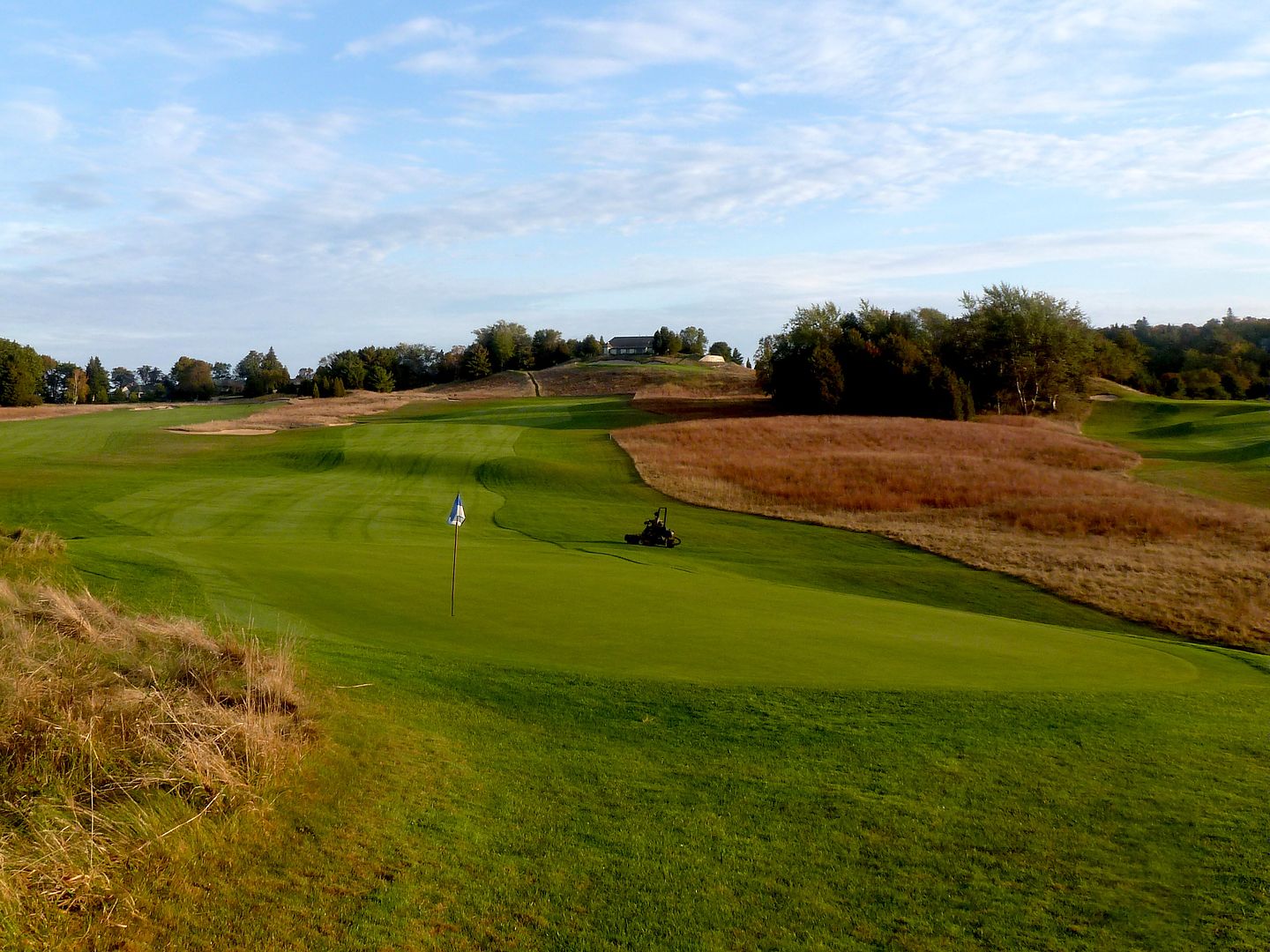 |
| A look back down the first hole |
Hole 2: Par 4, 425 Yards
The second hole at Crystal Downs plays parallel to the first. The first plays downhill and into the wind, the second uphill and downwind.
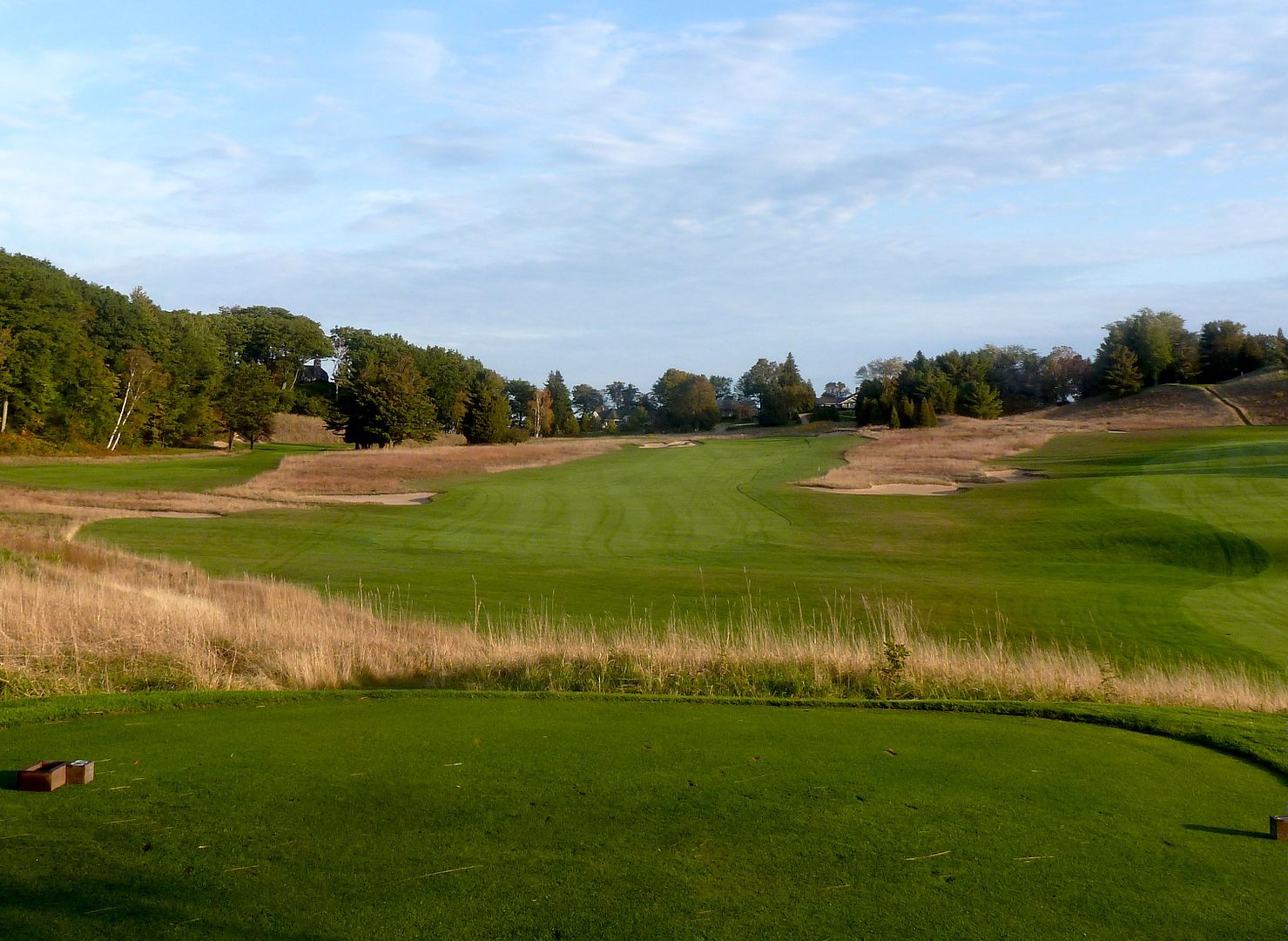 |
| A straightforward tee shot at the 2nd |
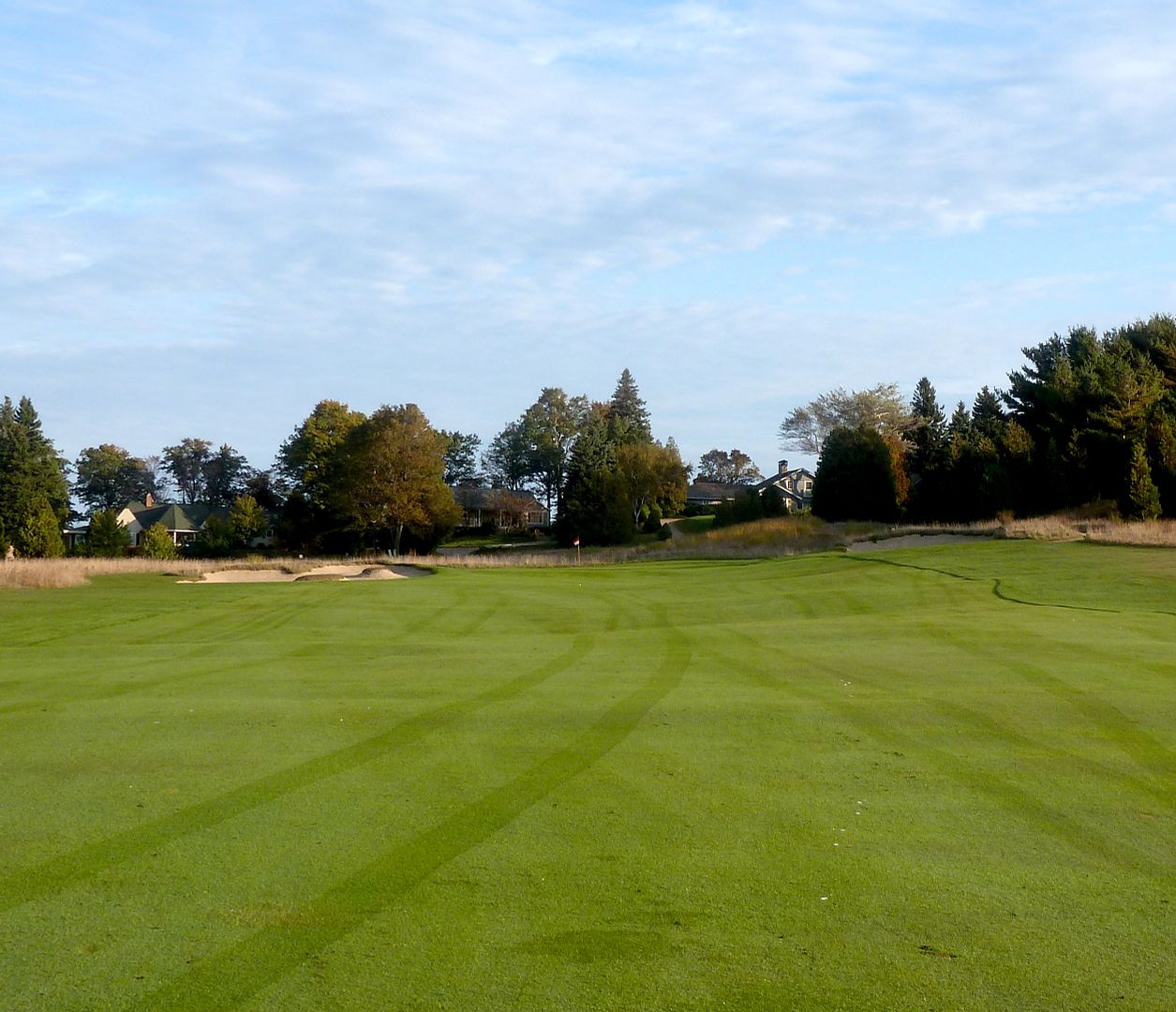 |
| The approach plays uphill as well. The green is open in front and protected by bunkering left and right |
Approaching the green there is some obvious ground movement that was not so easily discernible from the fairway. Short-right of the green there is a large mound that will kick the ball left and forward. This will help keep the ball away from the right rough/bunkers, which helps, but may also send the ball sailing to the back of the green. Putts from above the hole are trouble.
 |
| Significant back-to-front tilt on the 2nd green |
 |
| A look back down the second |
Hole 3: Par 3, 191 Yards
There is a short trek from the second green up to the back tee on number 3, which is located just steps from the Club's grass parking lot.
The shot is played downhill to a green that sits on an angle to the tee. What makes the hole particularly tricky is that it plays with a left-to-right wind that is largely blocked-out by the trees surrounding the tee. The combination of downhill, angled green and a difficult to feel crosswind make the third green a very elusive target.
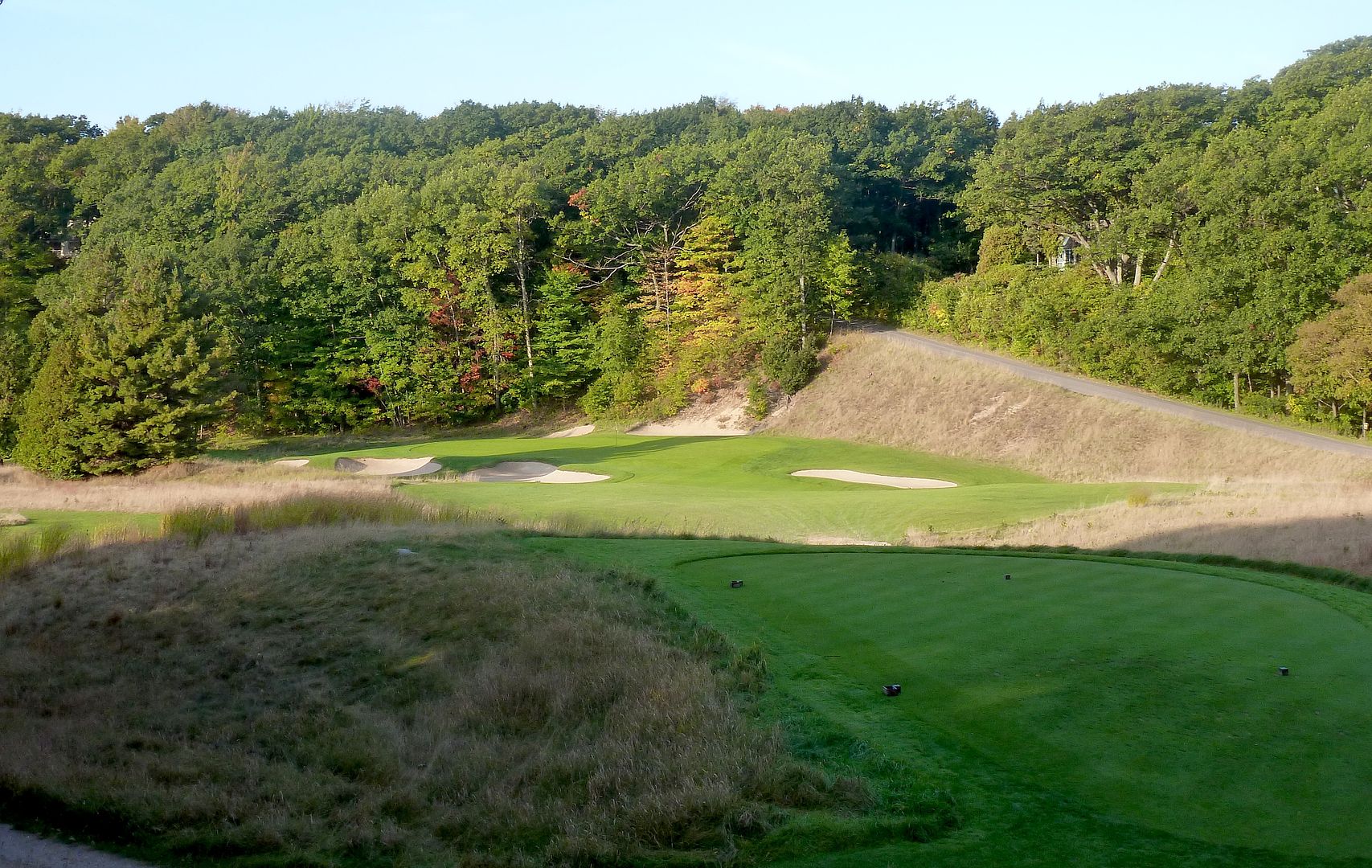 |
| Back tee view |
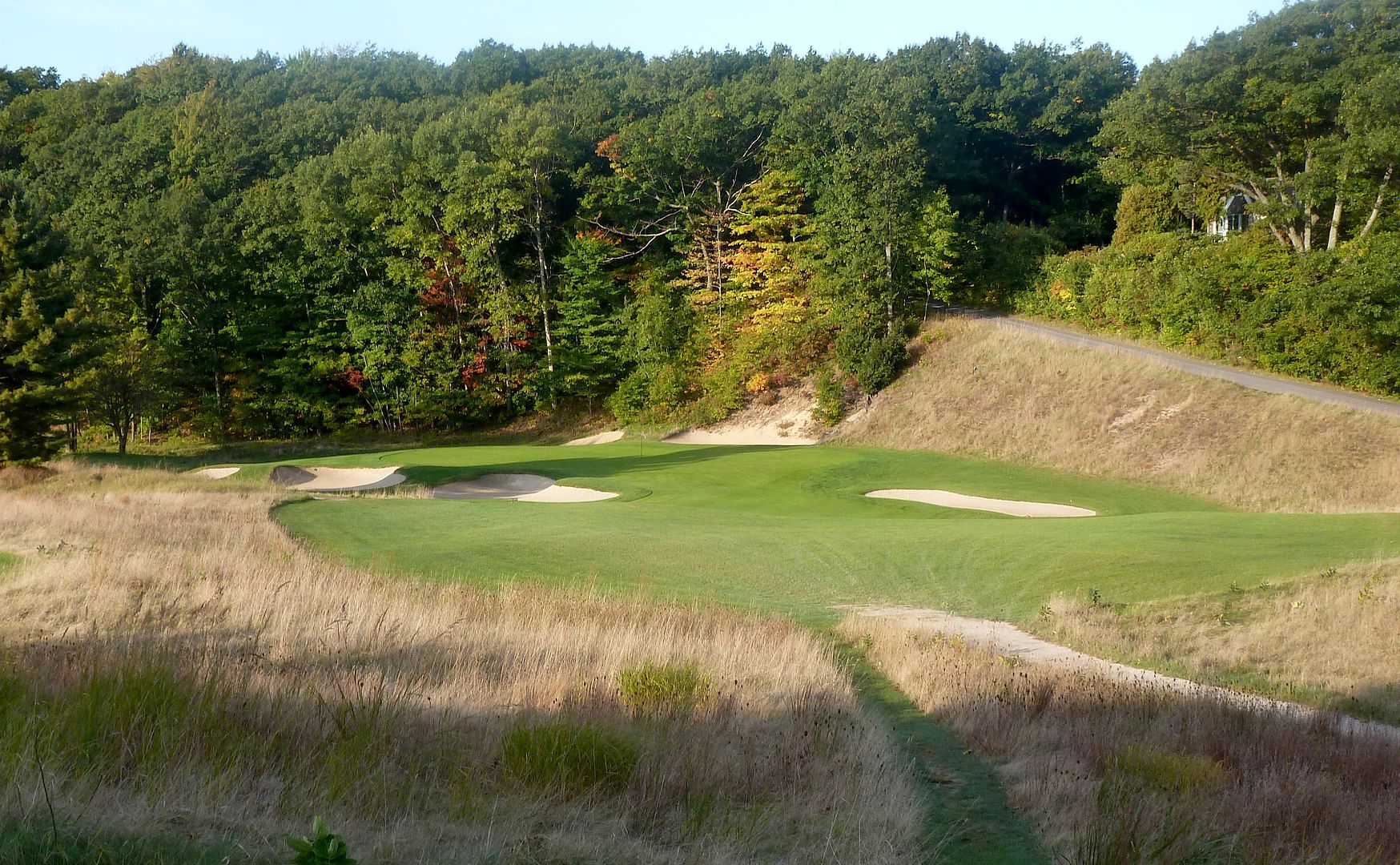 |
| Middle tee view |
Of note are the back bunkers. They are among the most interesting I have seen as they seem to mesh perfectly with the hill/trees over the green.
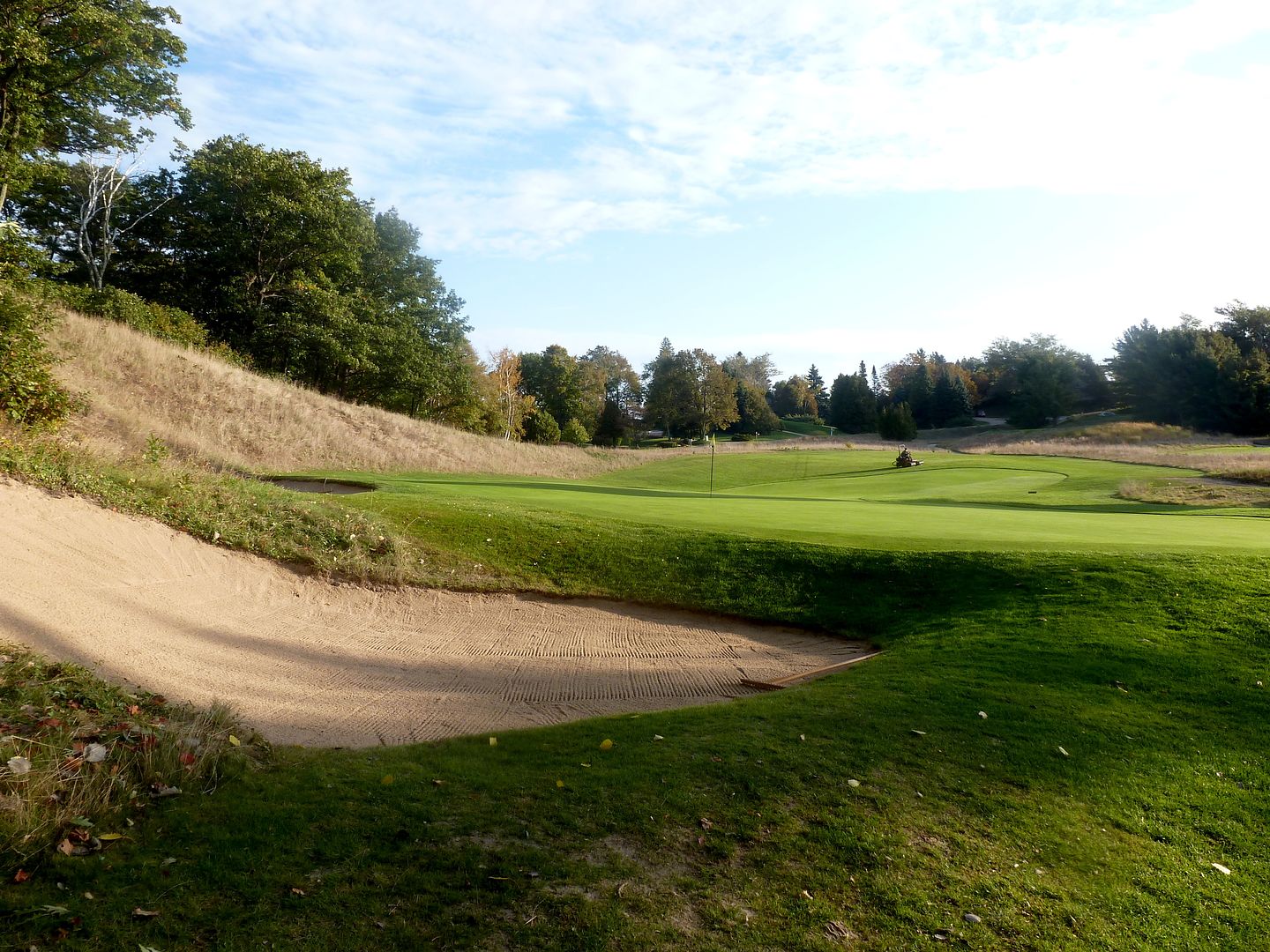 |
| The back bunkers |
The green slopes generally from back-right to front-left making a miss in the first back bunker very bad, while misses in the front bunkers can be recovered from.
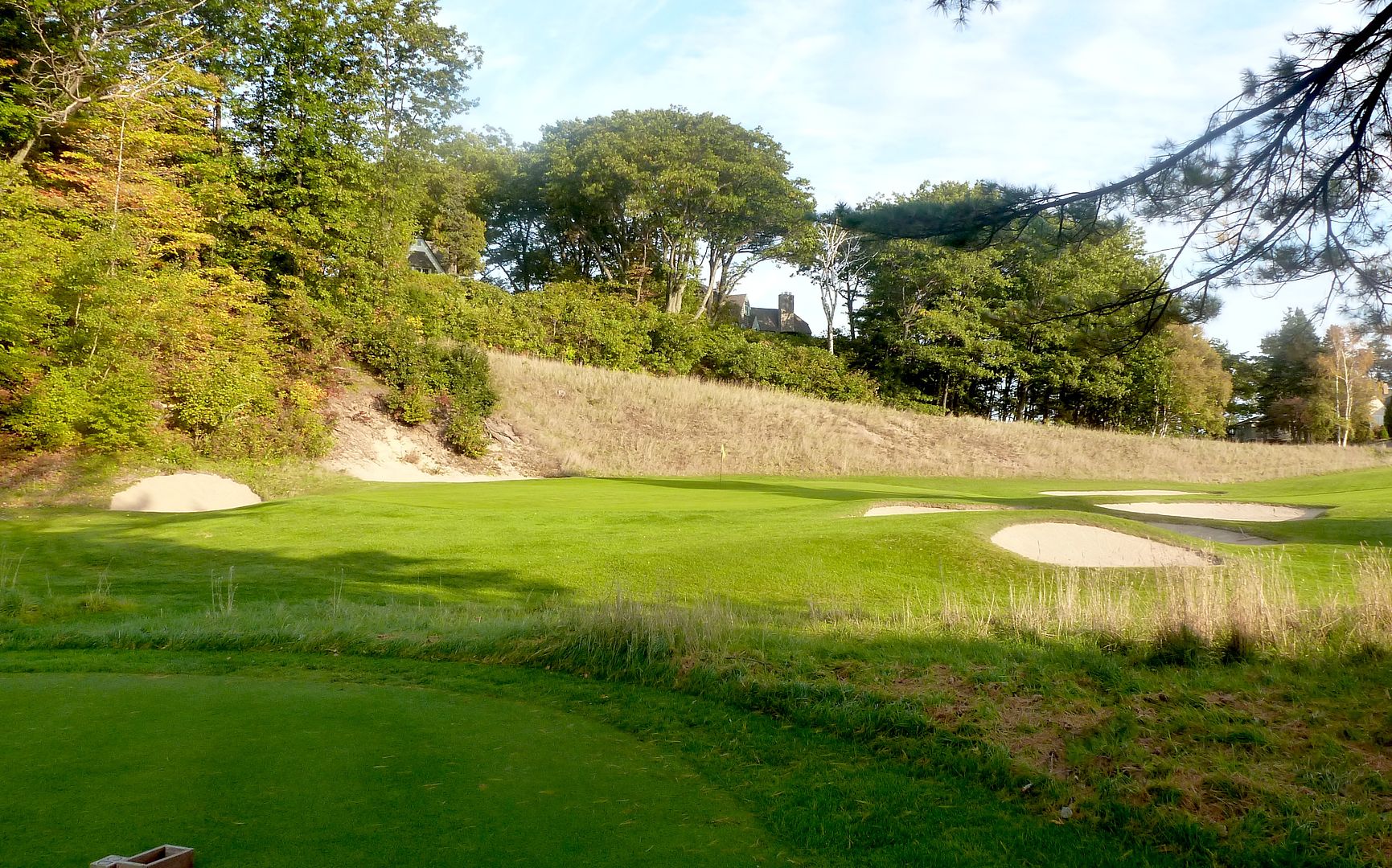 |
| Green as seen from 4th tee |
Hole 4: Par 4, 409 Yards
The tee shot at the 4th is best played over the bunker, skirting the tree line. Tee shots that appear to be down the centre may run into the left rough depending on the length of the tee ball and the kick off the fairway which slopes from right-to-left.
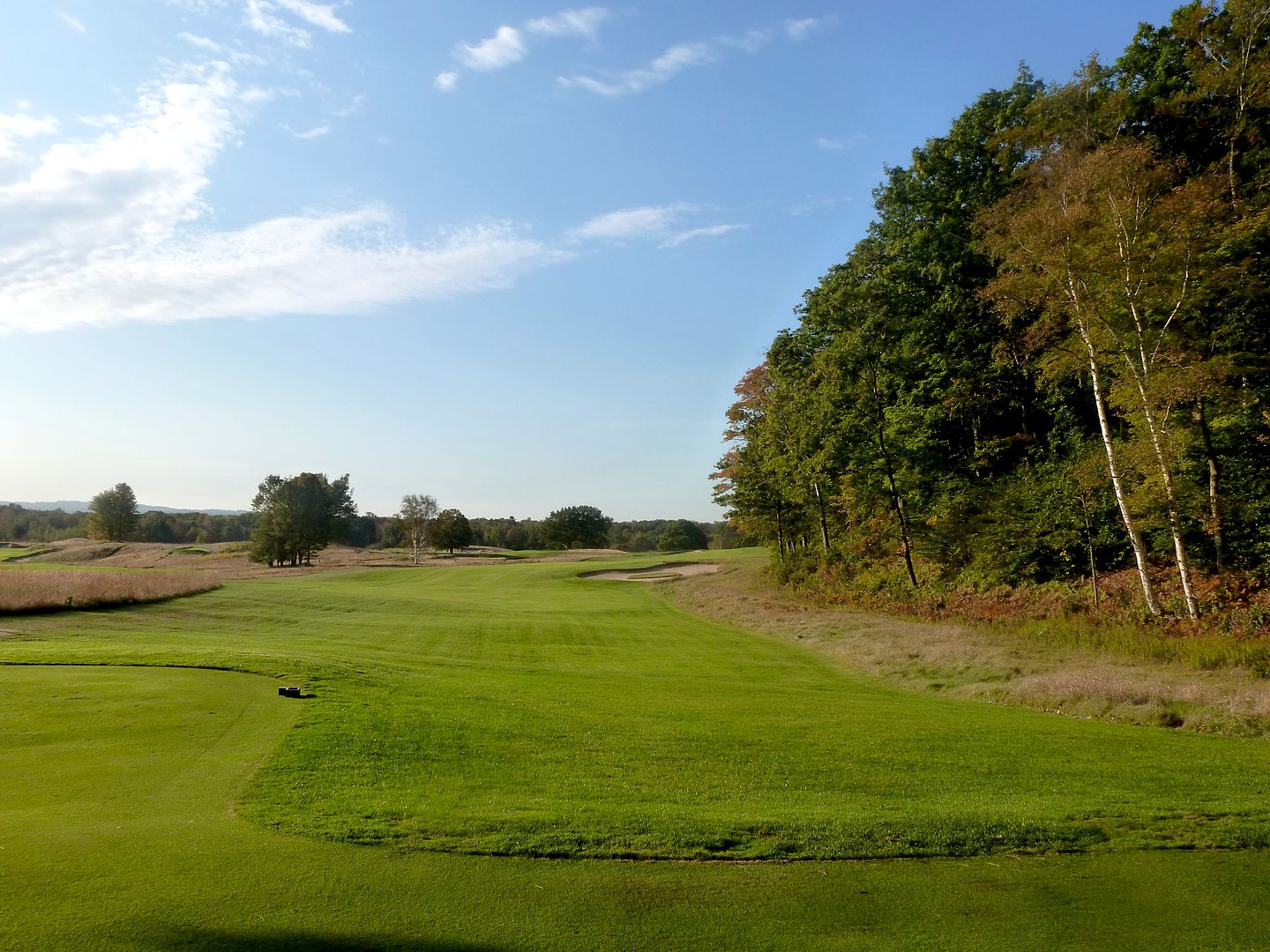 |
| 4th Tee |
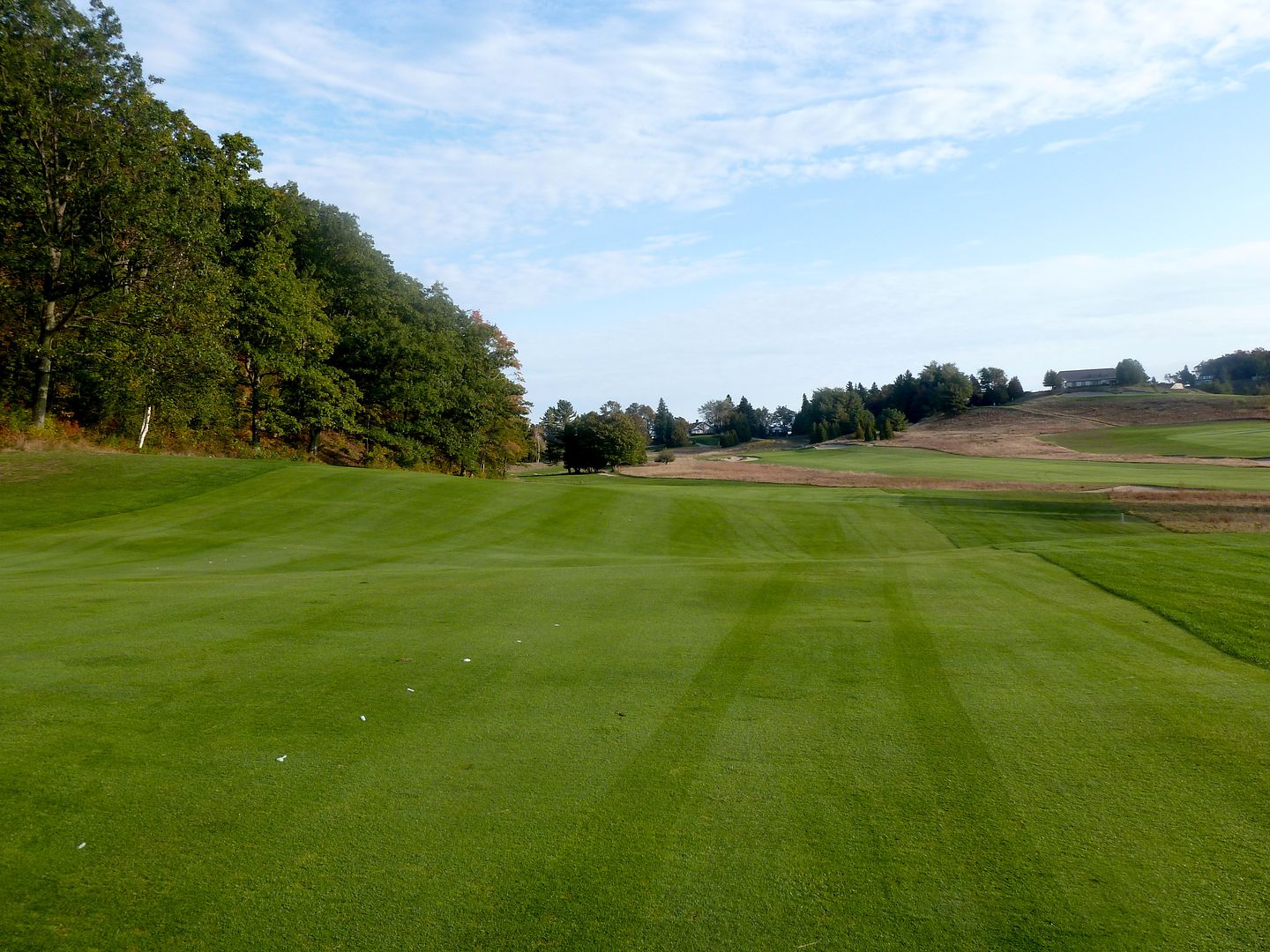 |
| The severely canted fairway at the 4th |
 |
| The Approach |
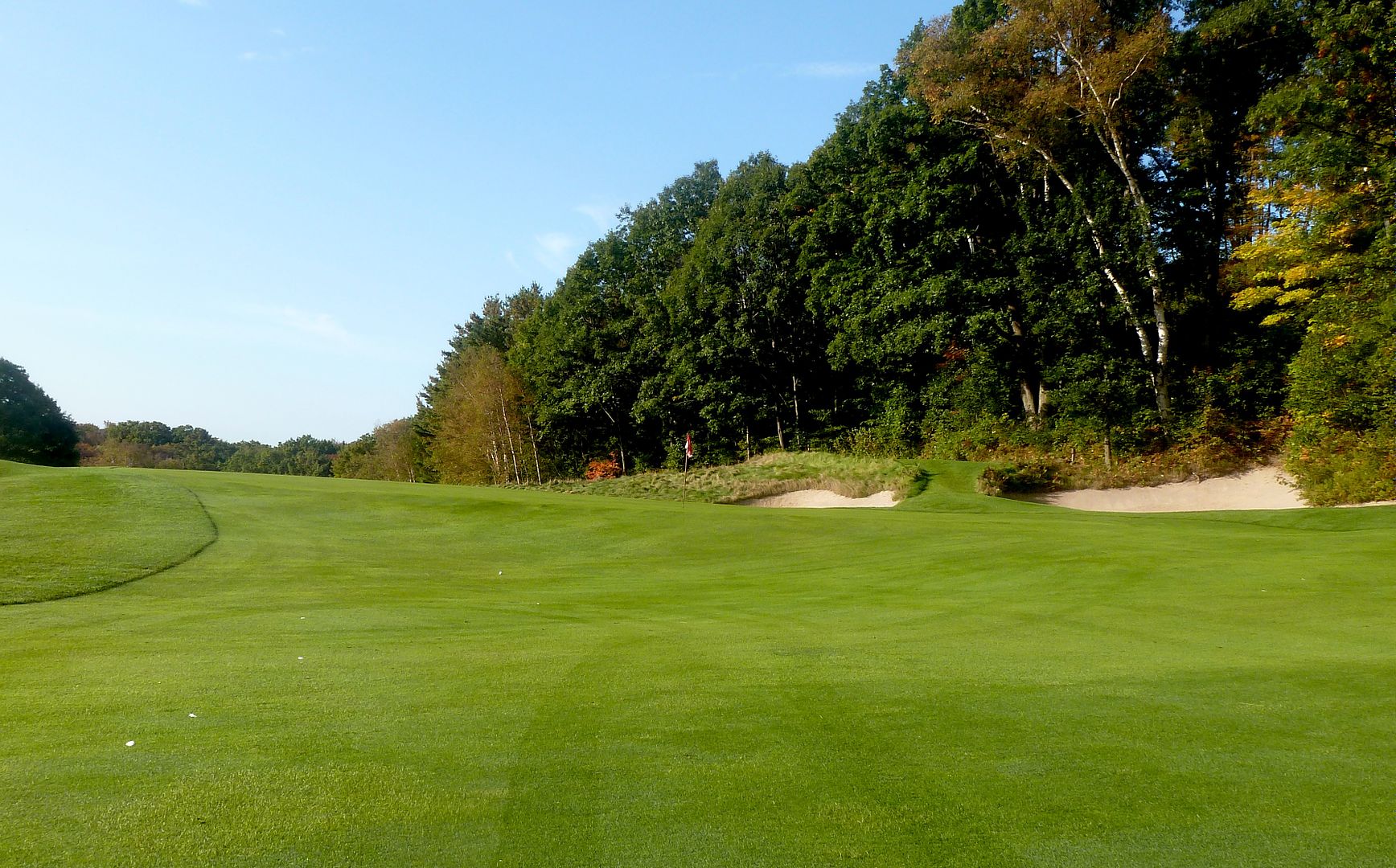 |
| A valley catches shots that come-up short of the green |
 |
| 4th Green as seen from 6 |
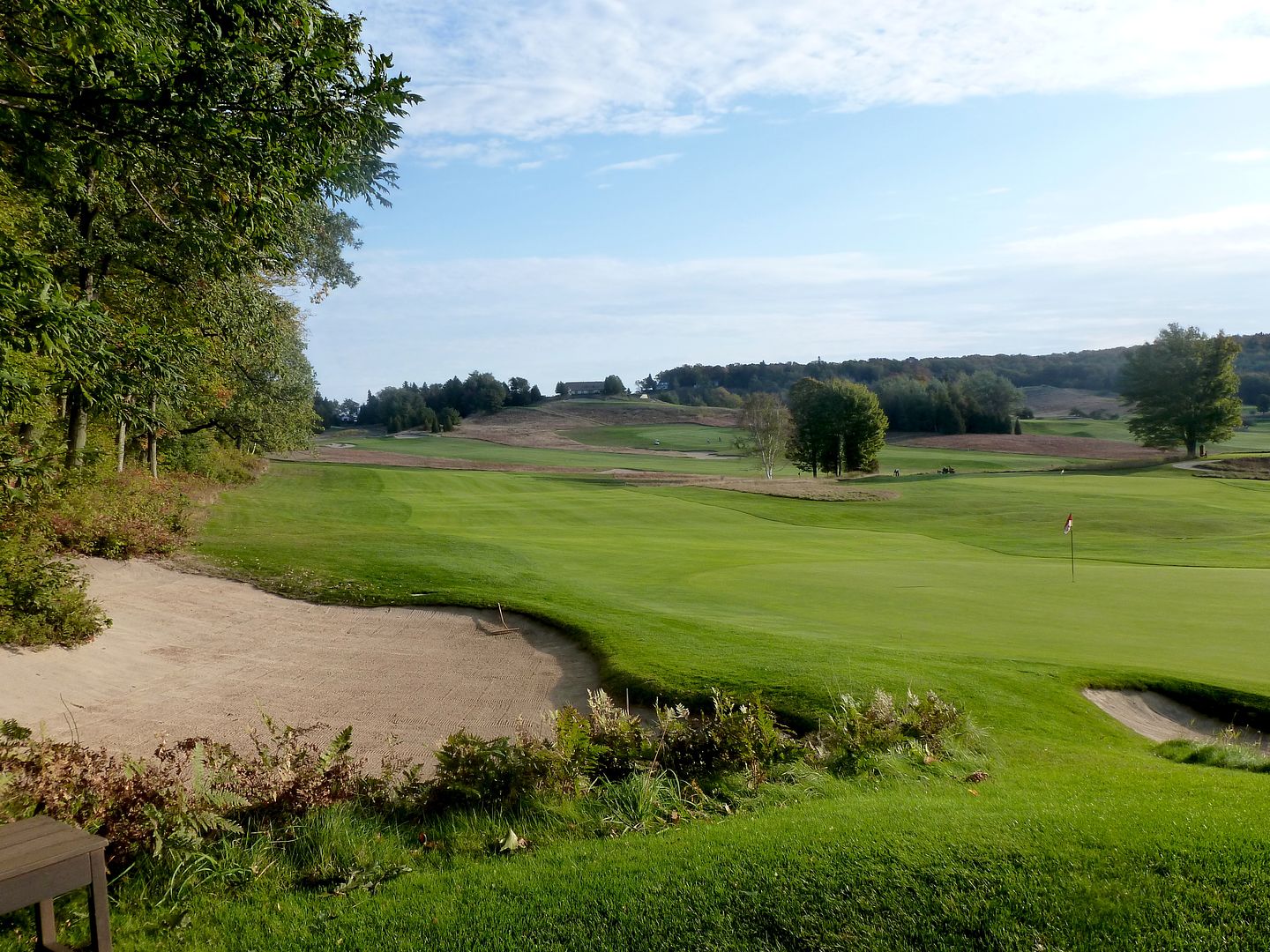 |
| Back down the 4th from the 5th tee |
Hole 5: Par 4, 353 Yards
The 5th hole at Crystal Downs is probably the most photographed and well-known hole on the course. As you approach the 4th green and see the 5th hole, it is impossible not to think, "wow, I'm actually here!". But, for all of the pictures I had seen of the 5th, I had no idea what the hole looked like beyond the tee shot. I actually believed the hole dog-legged right (it doesn't!).
The tee shot is to a split-fairway which is divided by the 'Three Sisters' bunkers. The route left of the bunkers will only be taken by those that are unable to carry the tree to reach the right fairway. The ideal line for most will be over the left edge of the tree, though longer-hitters will want to play farther to the left, almost directly over the centreline bunkers.
 |
| 5th Tee |
 |
| 5th Tee Zoomed |
The green is located over the bunker that is benched into the hill. As the pictures show, this is not a good spot to approach the green from. I suspect that most that play from here do so by accident.
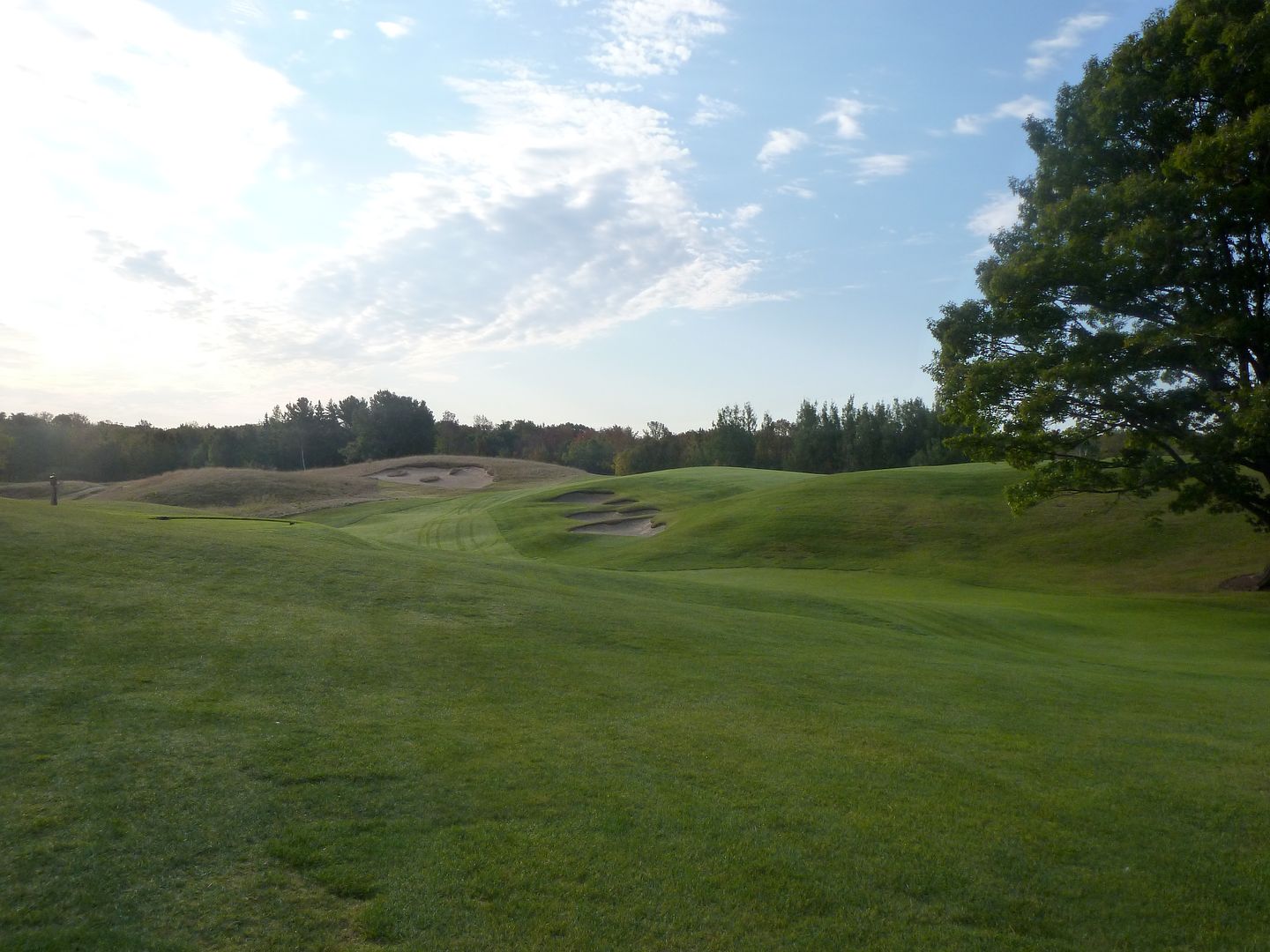 |
| The Lower Fairway |
Once past the tree on the right, one can see the slope of the hogback fairway.
 |
| A Hogback Fairway on the 5th |
Beyond the hogback portion of the fairway, the fairway slopes significantly from left-to-right. Looking back toward the tee one can see not only the significant cant, but also the wild undulations. I suspect many balls end-up where mine did, just a few feet into the right rough.
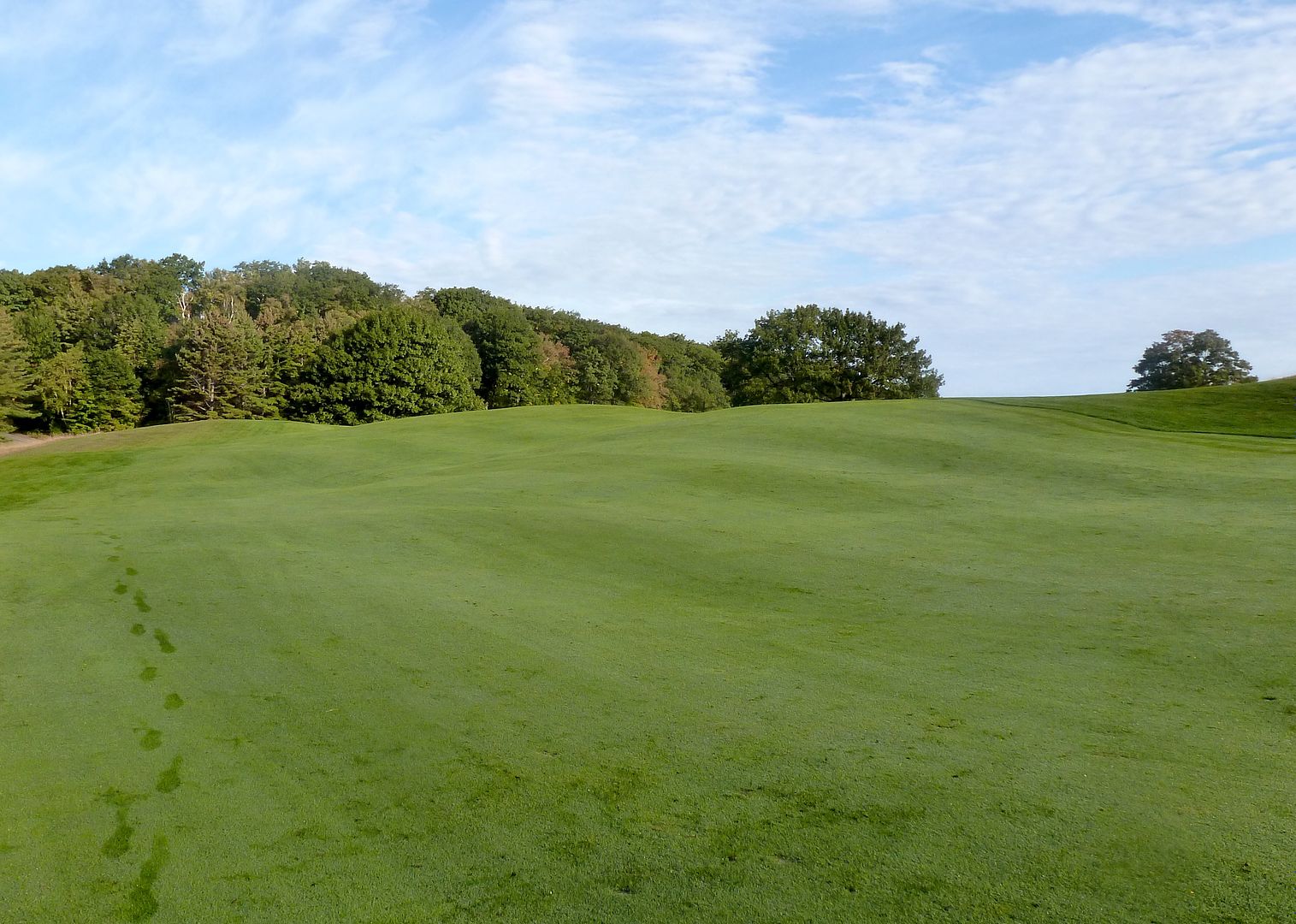 |
| 5th Fairway Looking Back Toward the Tee |
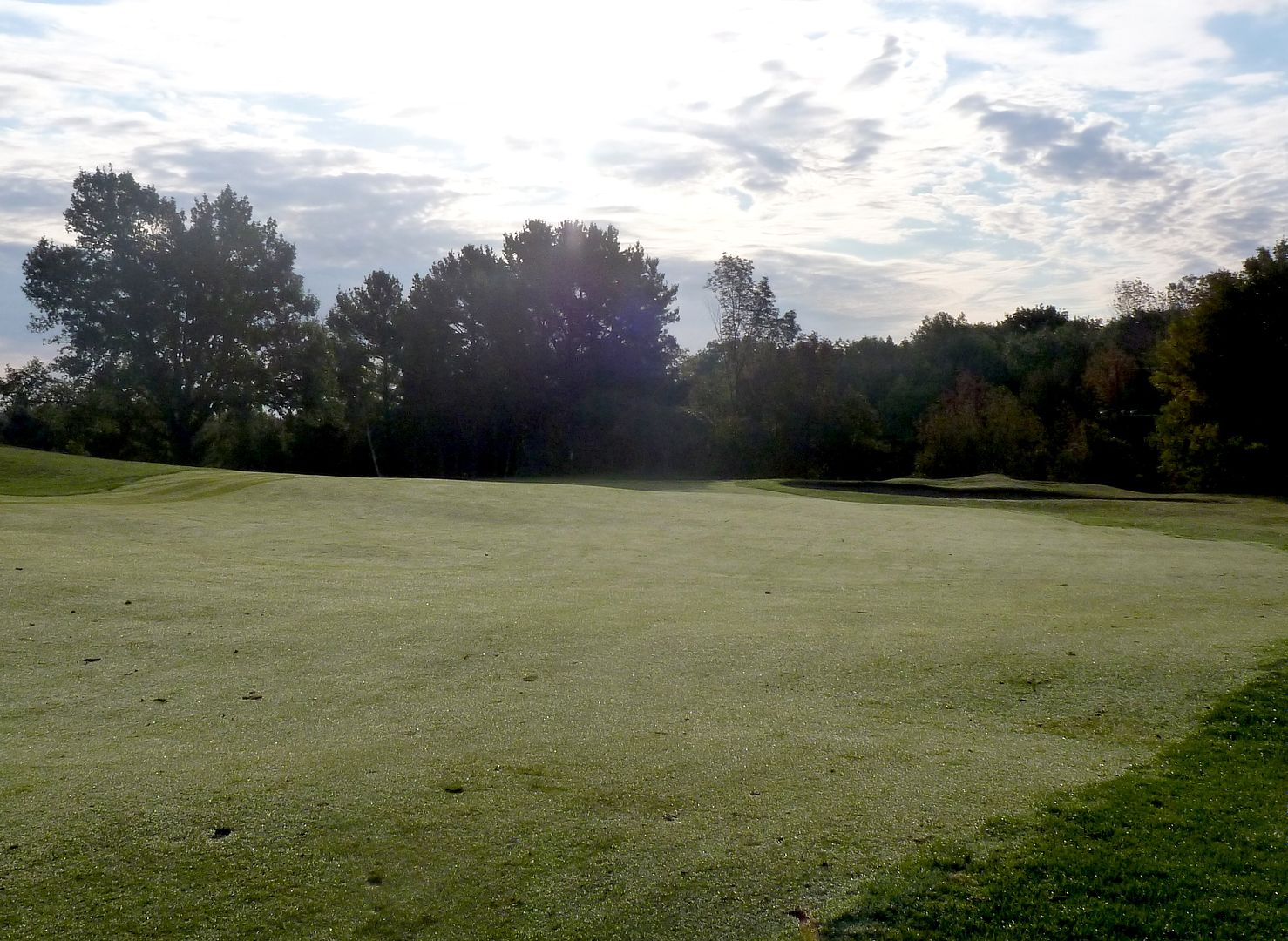 |
| Approach from 125 Yards Out |
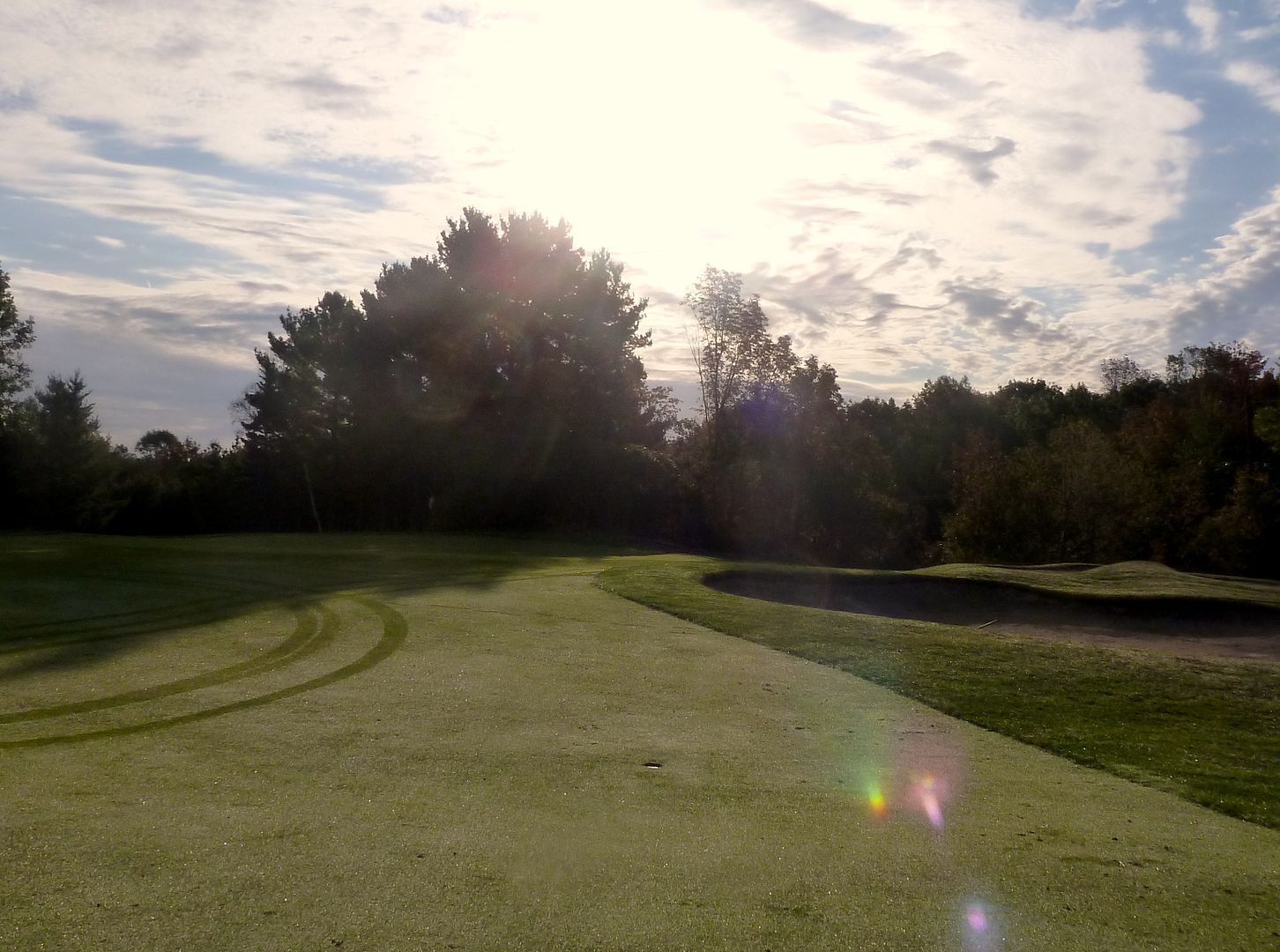 |
| 50 Yards Short of Green |
The green slopes significantly from back-to-front and left-to-right. Shots landing on the green have been known to trickle back and right into the grass by the bunkers, or on occasion, all the way into the bunkers. Yet another difficult green at Crystal Downs.
There is also a small ridge near the back of the green making shots that are just a bit long that much more difficult.
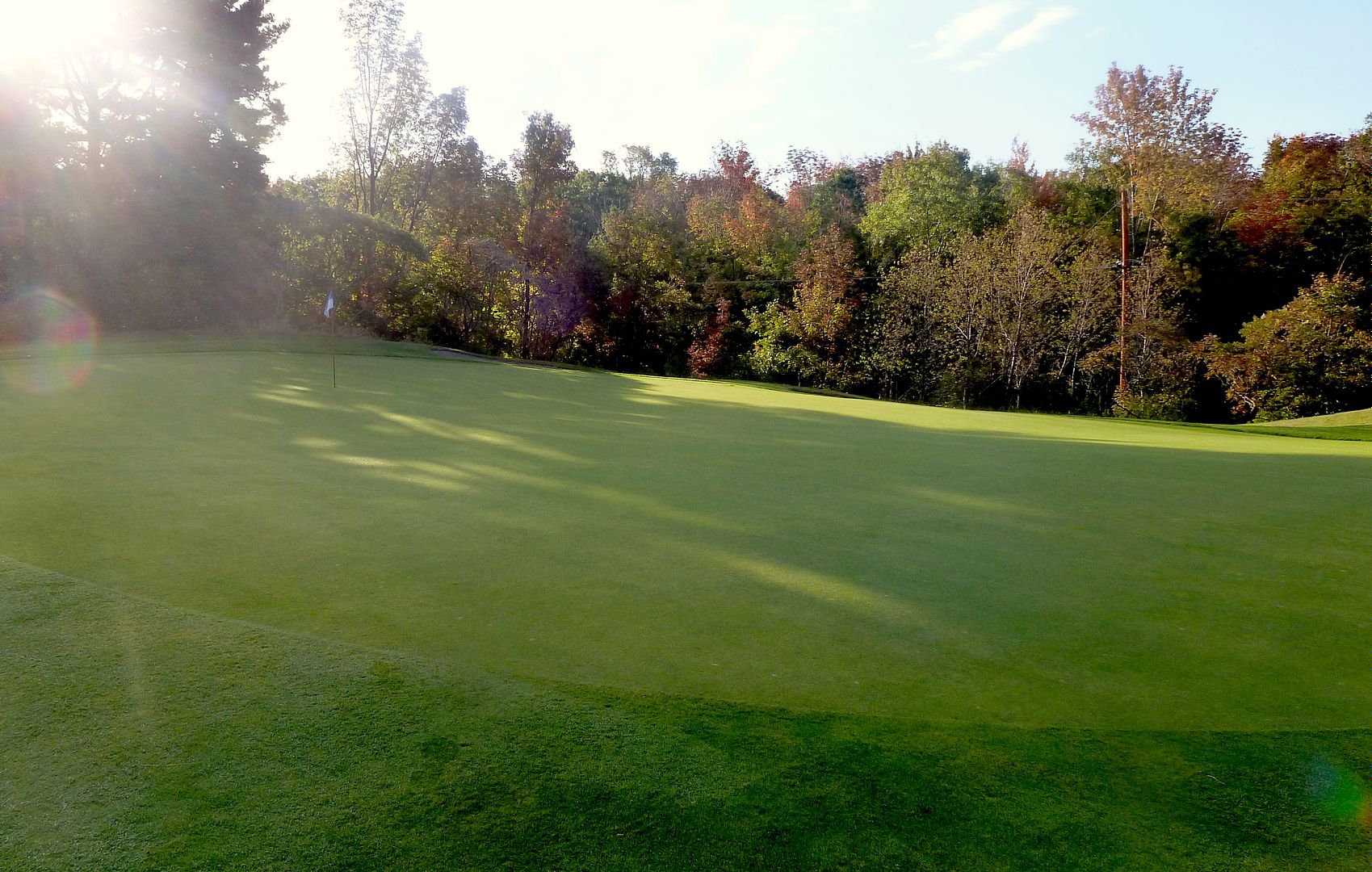 |
| Green from Left |
What's that? Hidden greenside bunkers! The green is protected by three bunkers, not one. Recovery from these bunkers should not be so difficult as they are played into the slope of the green.
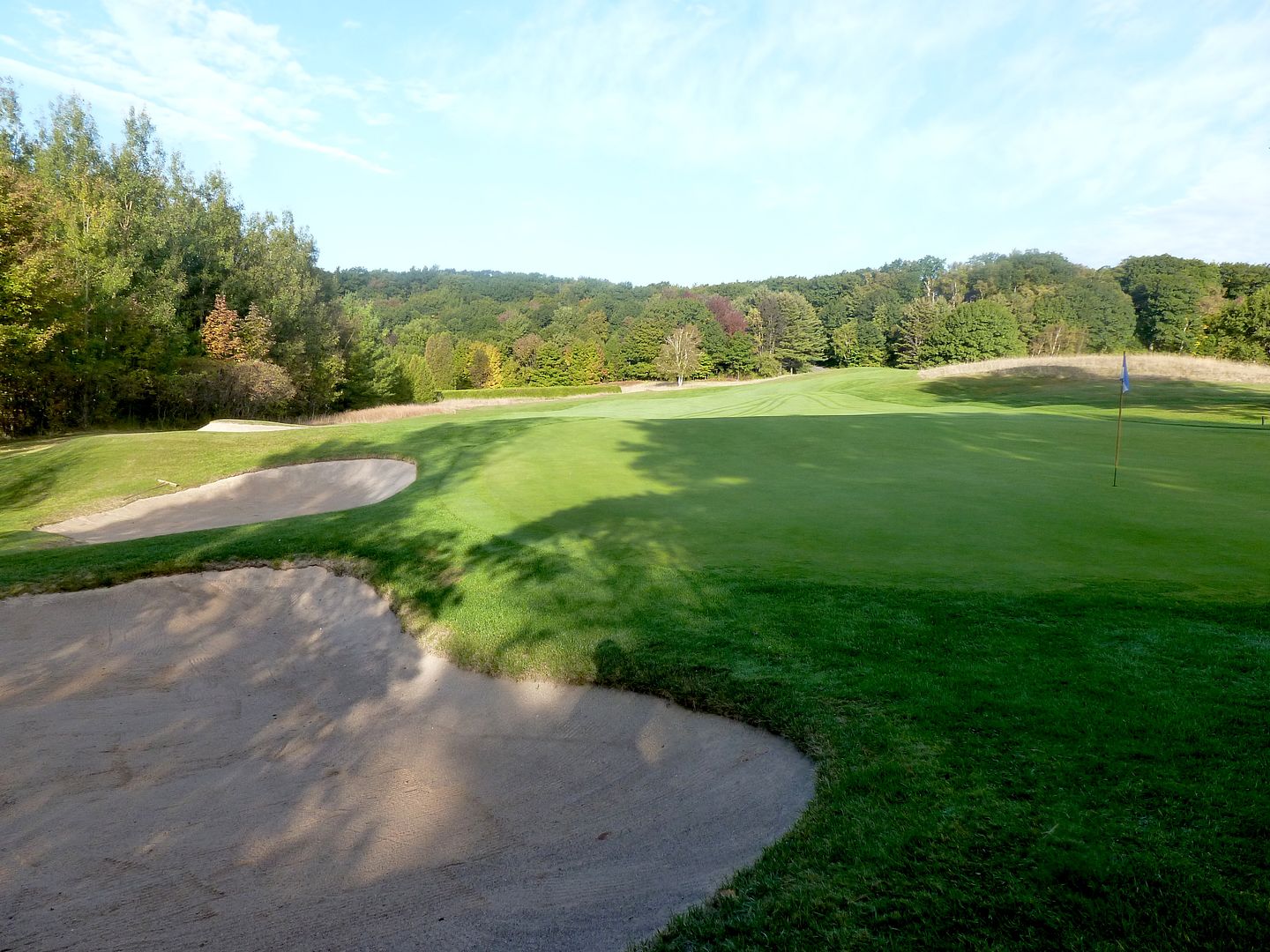 |
| Green from Back-Right |
Hole 6: Par 4, 384 Yards
The 6th at Crystal Downs would be a standout on almost any other golf course. But, stand on the 6th tee and you have the all-world fifth on your left and a sneak-peek at the kidney-shaped green at the 7th. The fact that the sixth receives recognition with such exceptional holes on either side of it speaks to its own quality.
The tee shot at the 6th requires a carry to crest a hill that will leave a clear view of the green. The carry is some 220 yards from the back tees and 190 yards from the members tees. In clear view beyond the 'Scabs' on the right the green lay tempting the golfer to play farther to the right off the tee than is prudent. The Line of Charm is in effect and the player wants to aim either over the Scabs or over the large tree guarding the fairway, but as the visitor guide emphatically warns, "don't even think about that route."
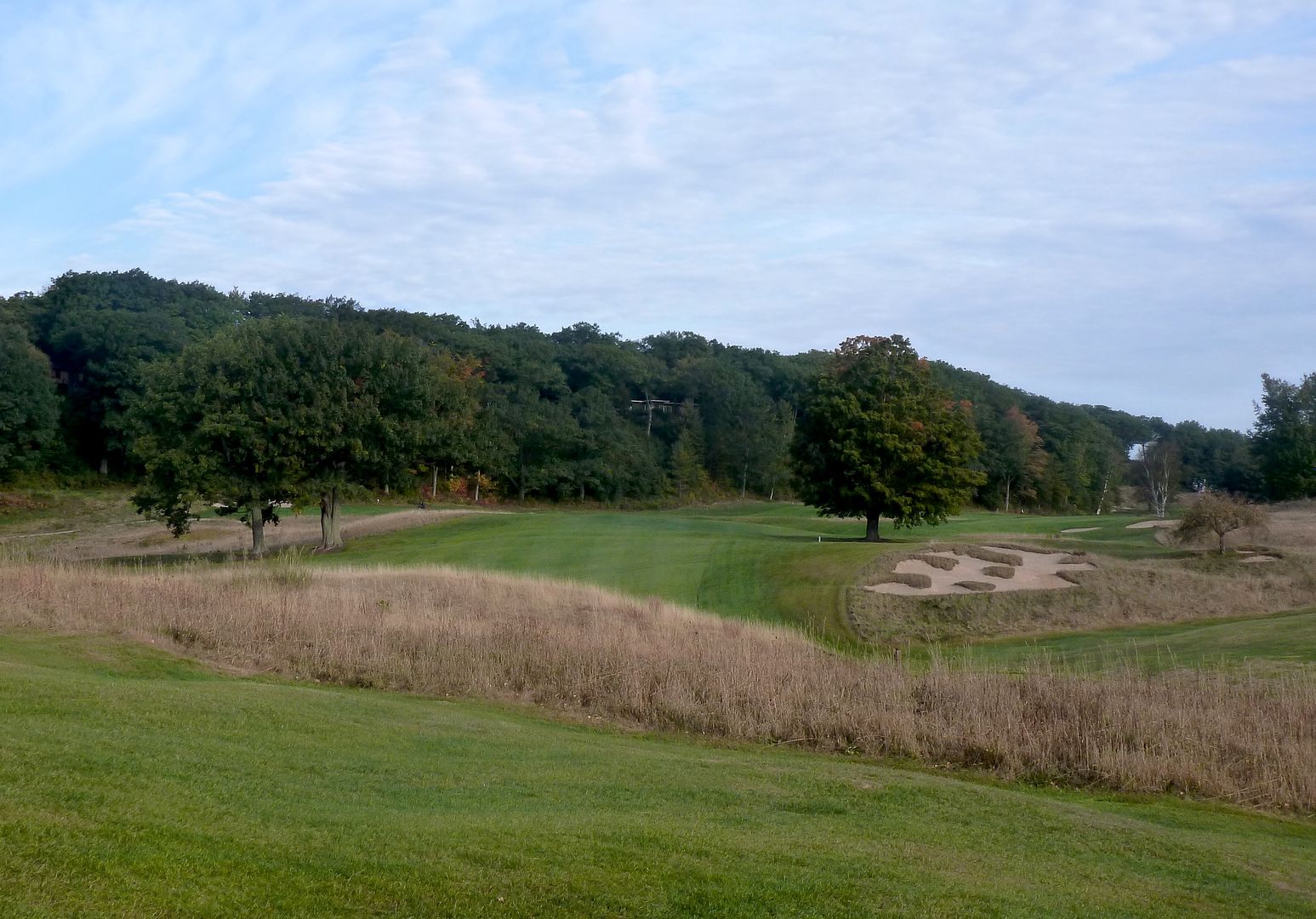 |
| 6th Tee |
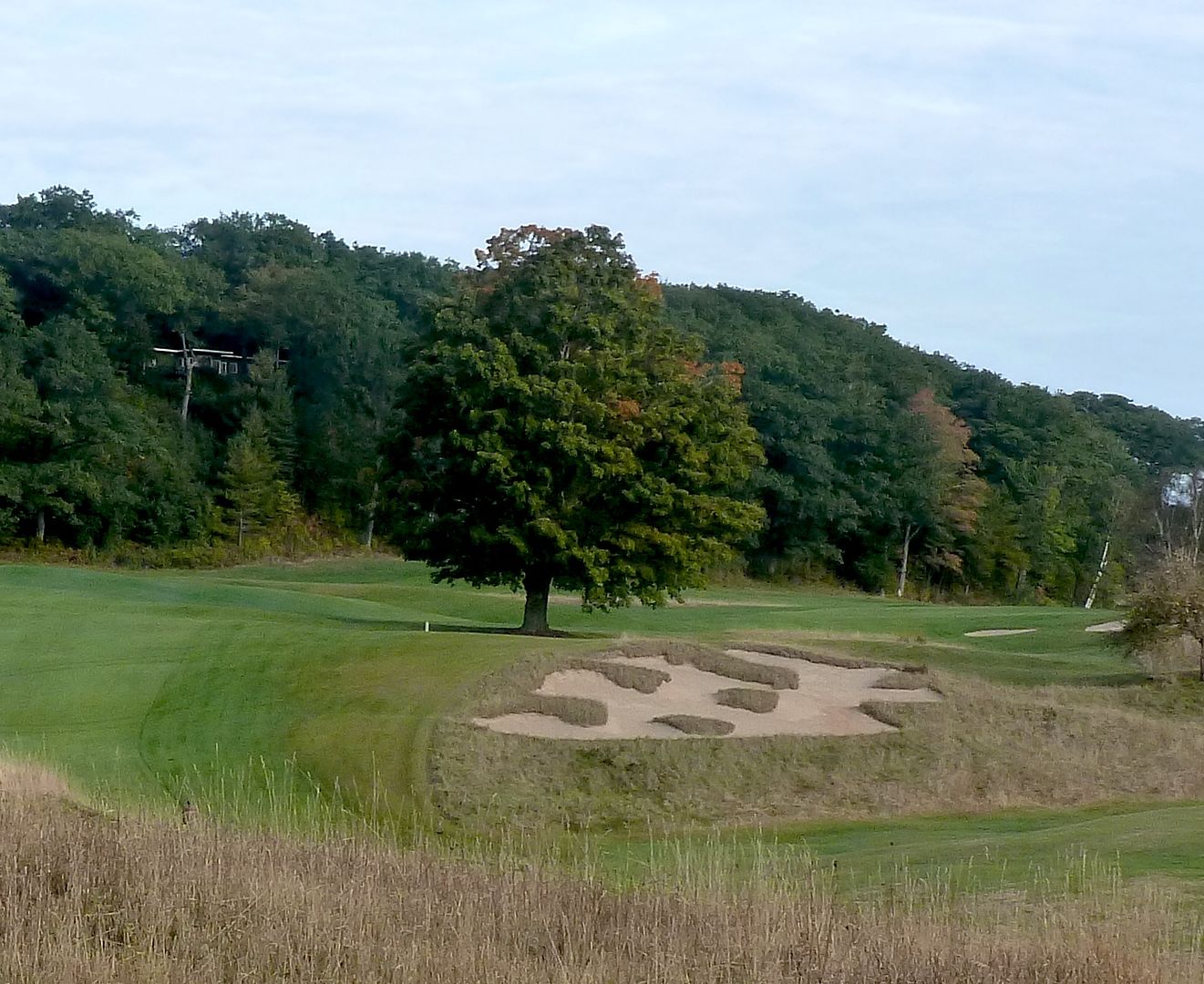 |
| The Line of Charm |
 |
| The Scabs as seen from the 7th Fairway |
The view from the bottom of the hill should a player fail to make the carry. The fact that there are very few divots in this area suggests that either (1) the carry is not a problem for most golfers who play at Crystal Downs, or (2) there are just very few rounds played at Crystal Downs.
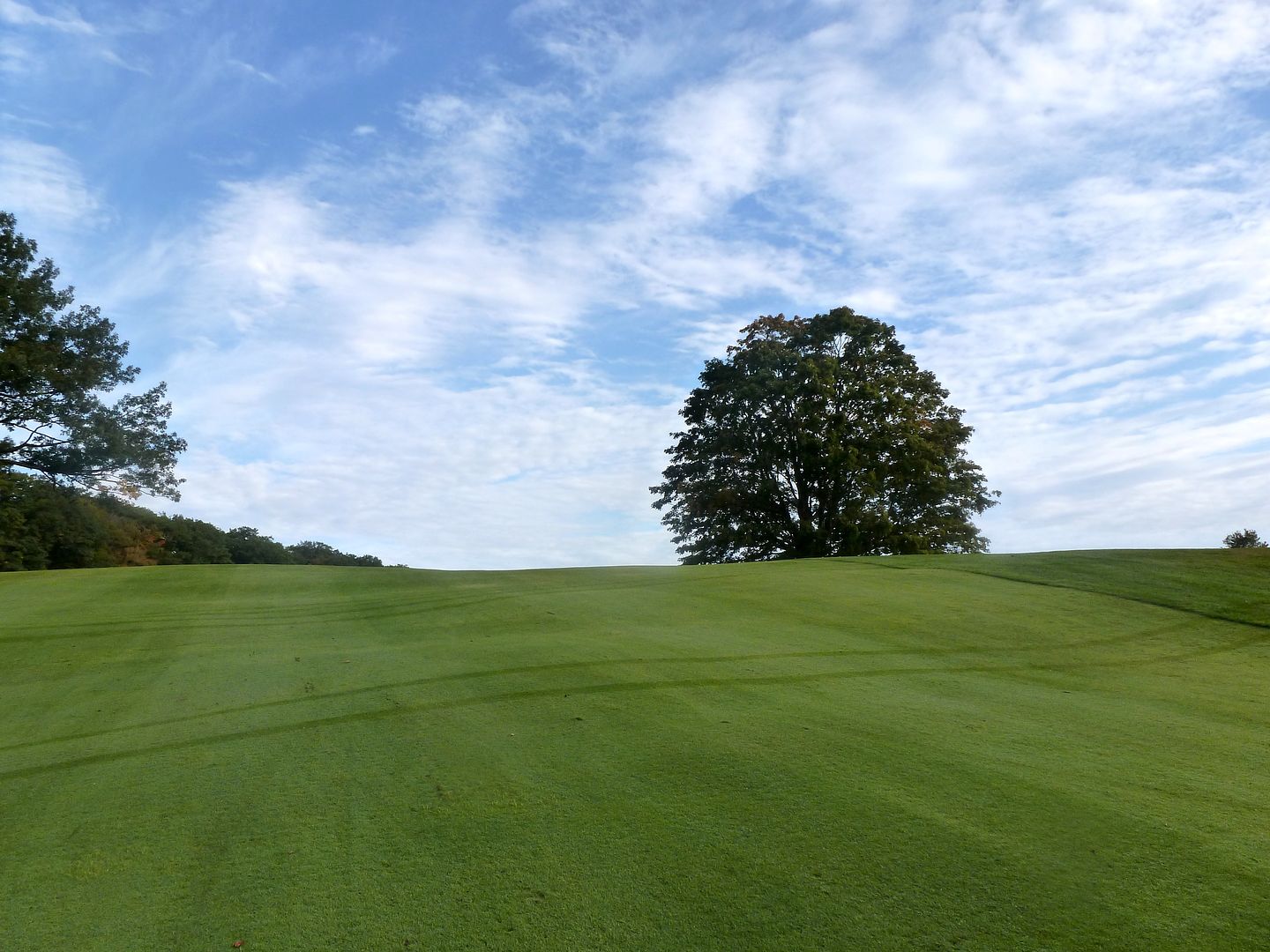 |
| View from Bottom of Hill |
The approach to the green is fairly straightforward. The approach will often be played from a hanging lie over the mound that is seen on the left. This view is from 150 yards out from the right side of the fairway. It is where you will end up if you try to carry the tree and fail (I know from experience.).
 |
| Approach from Right |
Shots successfully played down the centre of the fairway should collect to this area.
 |
| Approach from 120 Yards |
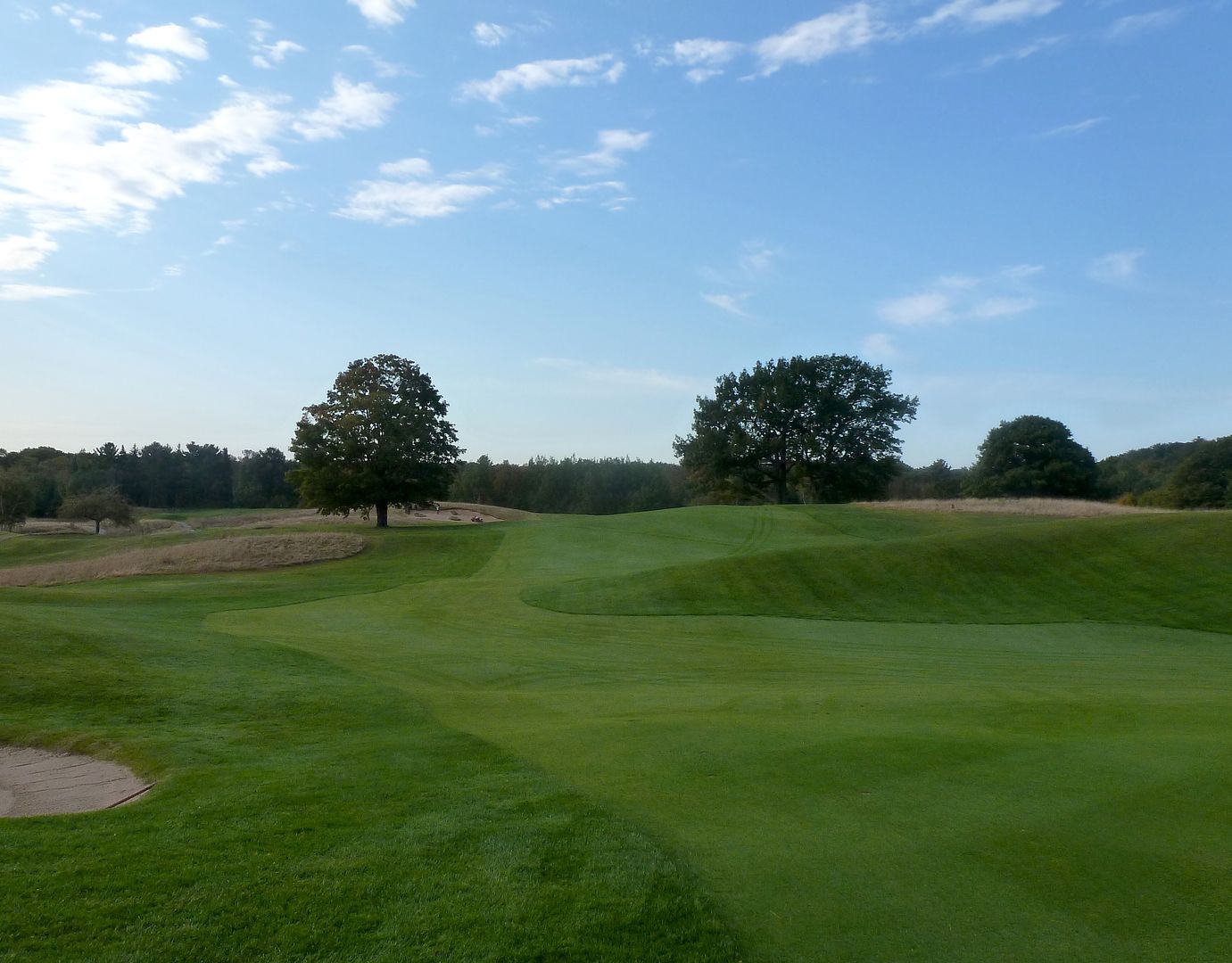 |
| Looking Back Down the Fairway |
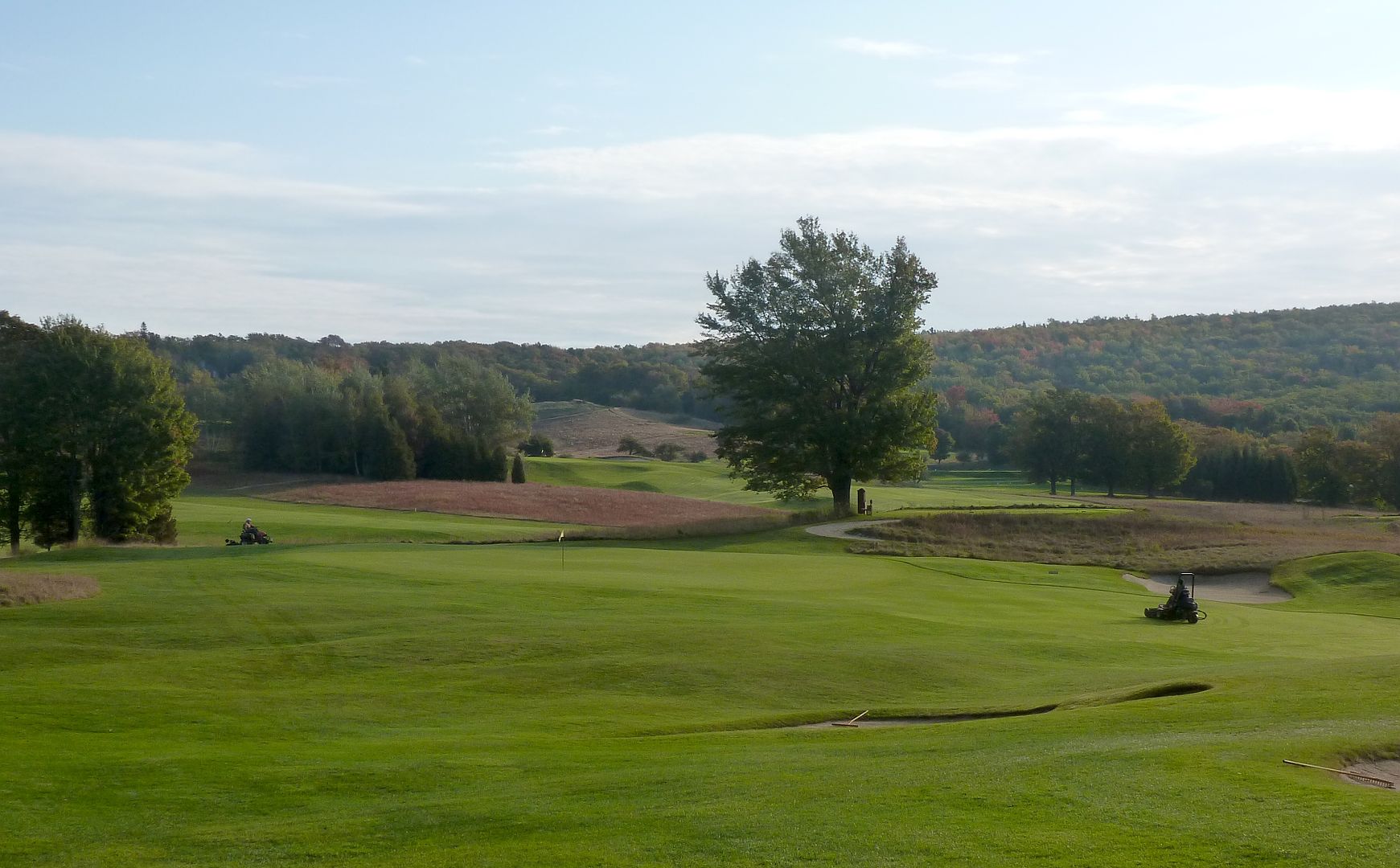 |
| 6th Green as seen from 4th Fairway |
The green is another very interesting one. Two separate bowls are formed in the green. Hit your approach shot in the bowl and you have a great chance at 3. From outside the bowl, a 2-putt is very difficult.
 |
| Short of Green |
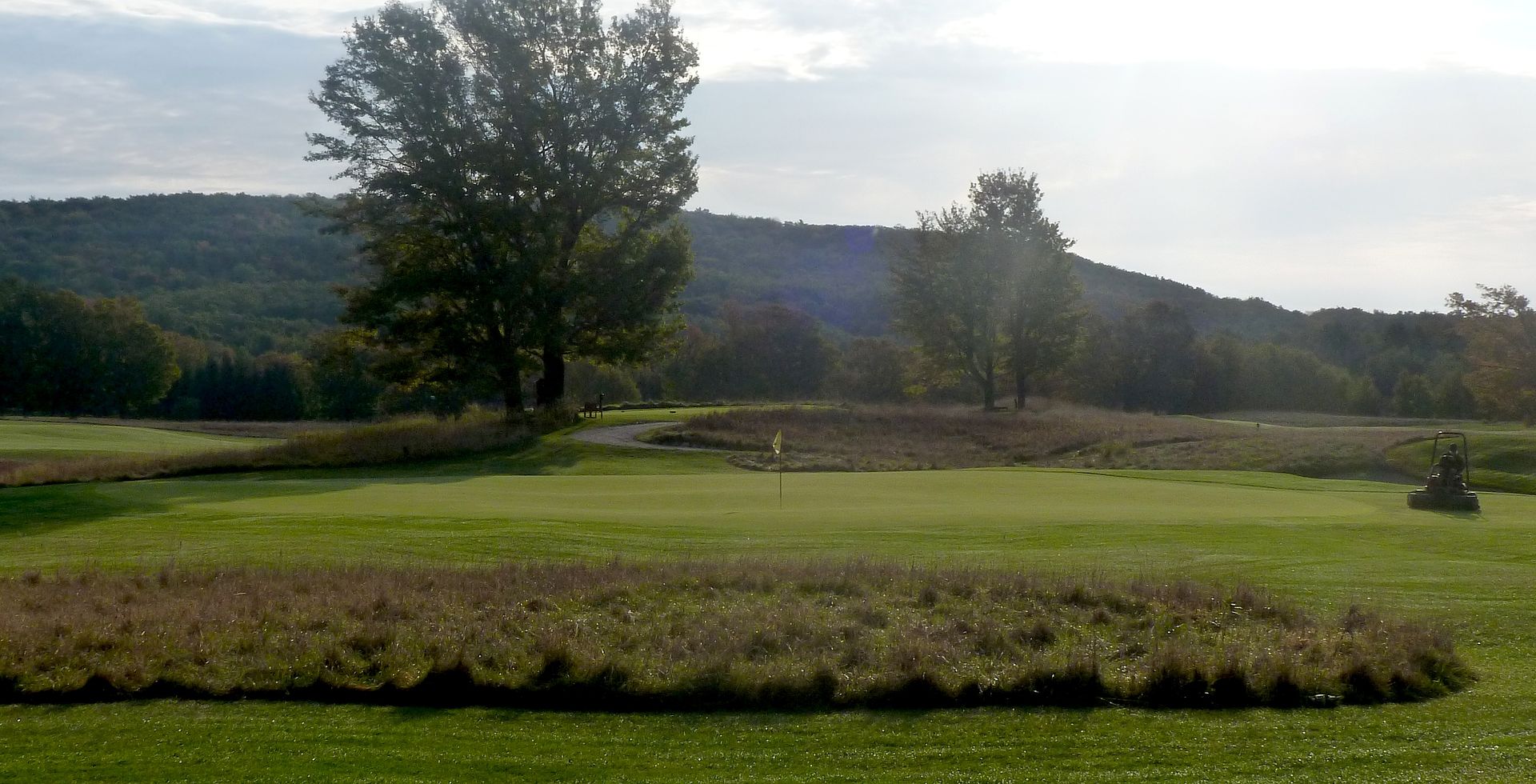 |
| Green from Left |
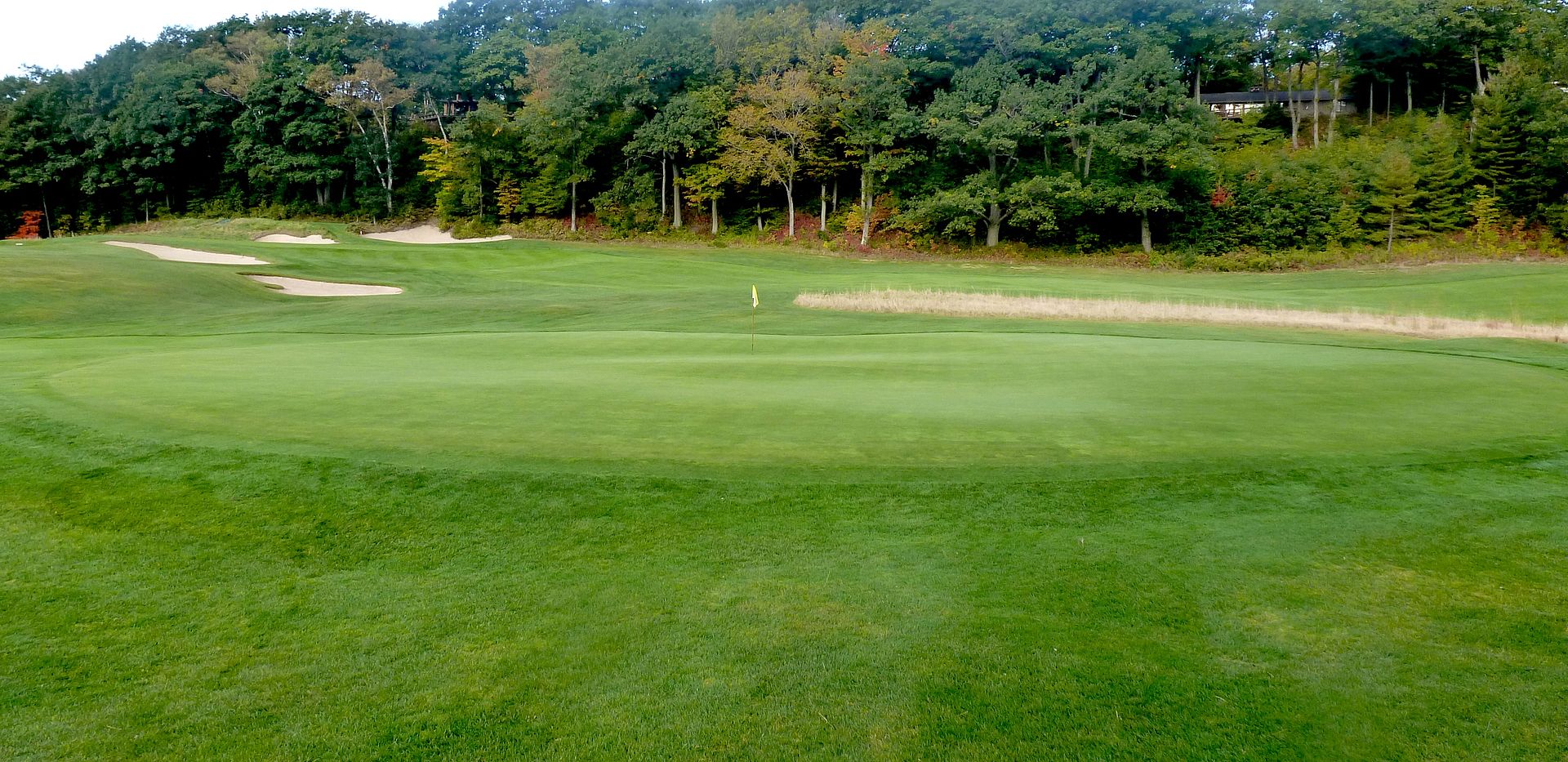 |
| Green from Right |
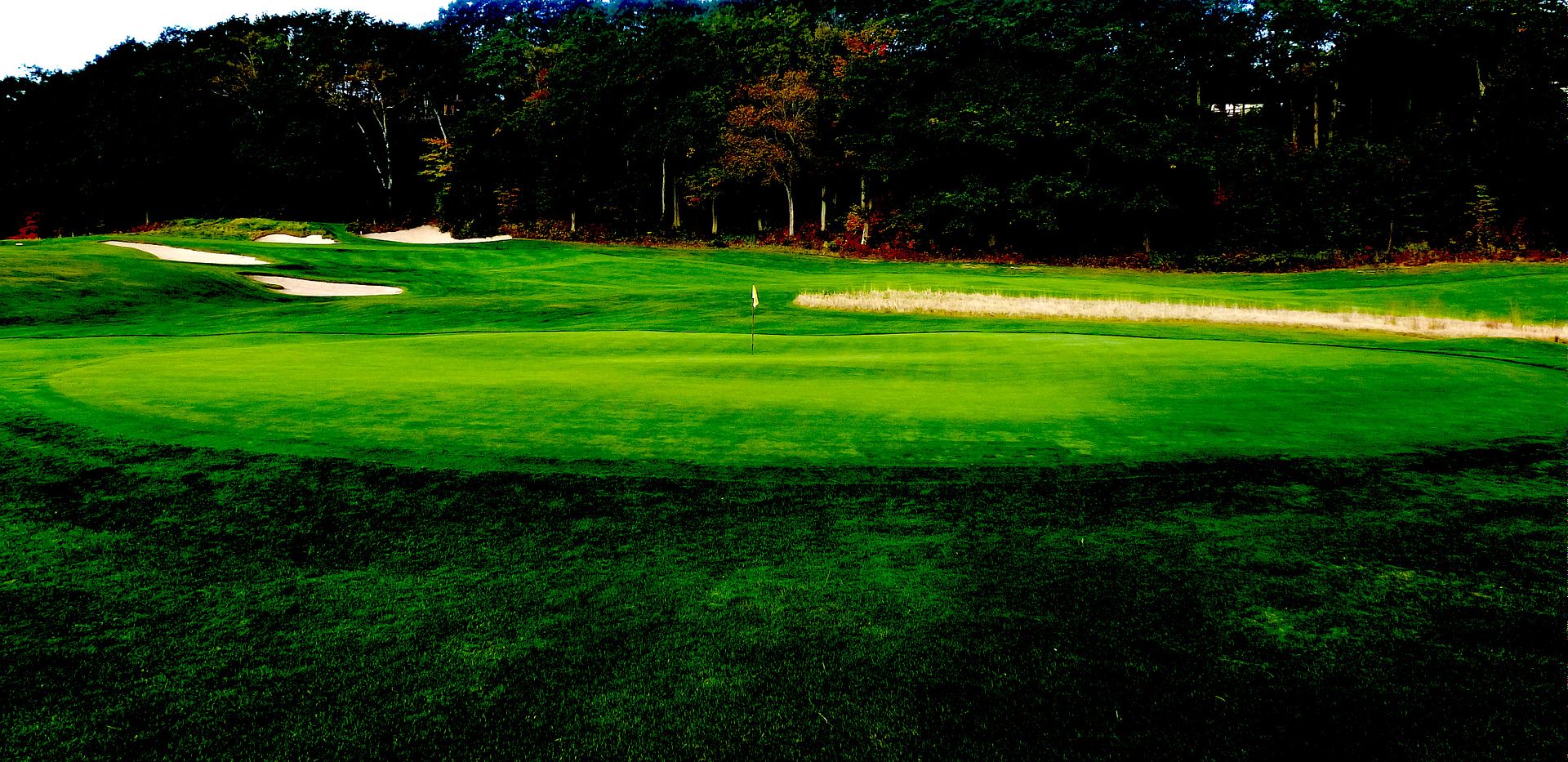 |
| Green from Right with Increased Contrast |
Hole 7: Par 4, 335 Yards
Much like hole 5 where I knew what the tee shot looked like but not the approach, I knew what the green at the the 7th looked like, but knew nothing about the rest of the hole.
The tee offers two options. The first is to lay-up to the upper fairway hitting a tee shot of no more than 210 yards. From there the green is in full-view. The other option is to drive over the crest of the hill to a lower fairway leaving nothing more than a 100 yard shot, but from here the view to the green is blind. Pick your poison.
I found the tee shot misleading because of the severe depression to the right of the fairway (which is a really bad place to miss) and the hint of a curve in the fairway itself. I thought the ideal line was at the right edge of the visible fairway, challenging the depression. It's not, there is nothing but rough and a really tough angle into the green there.
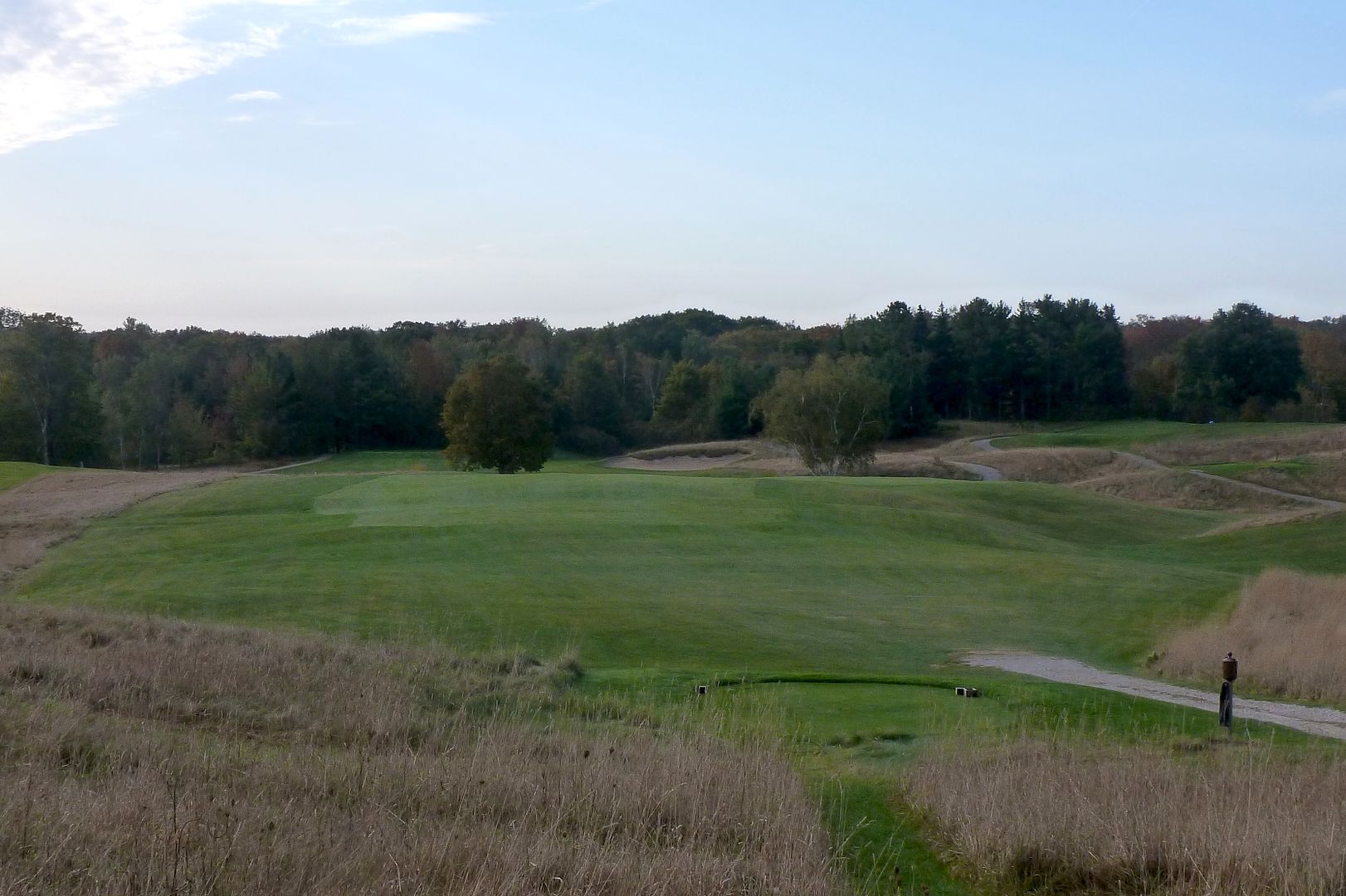 |
| 7th Tee |
 |
| 7th Tee Zoomed |
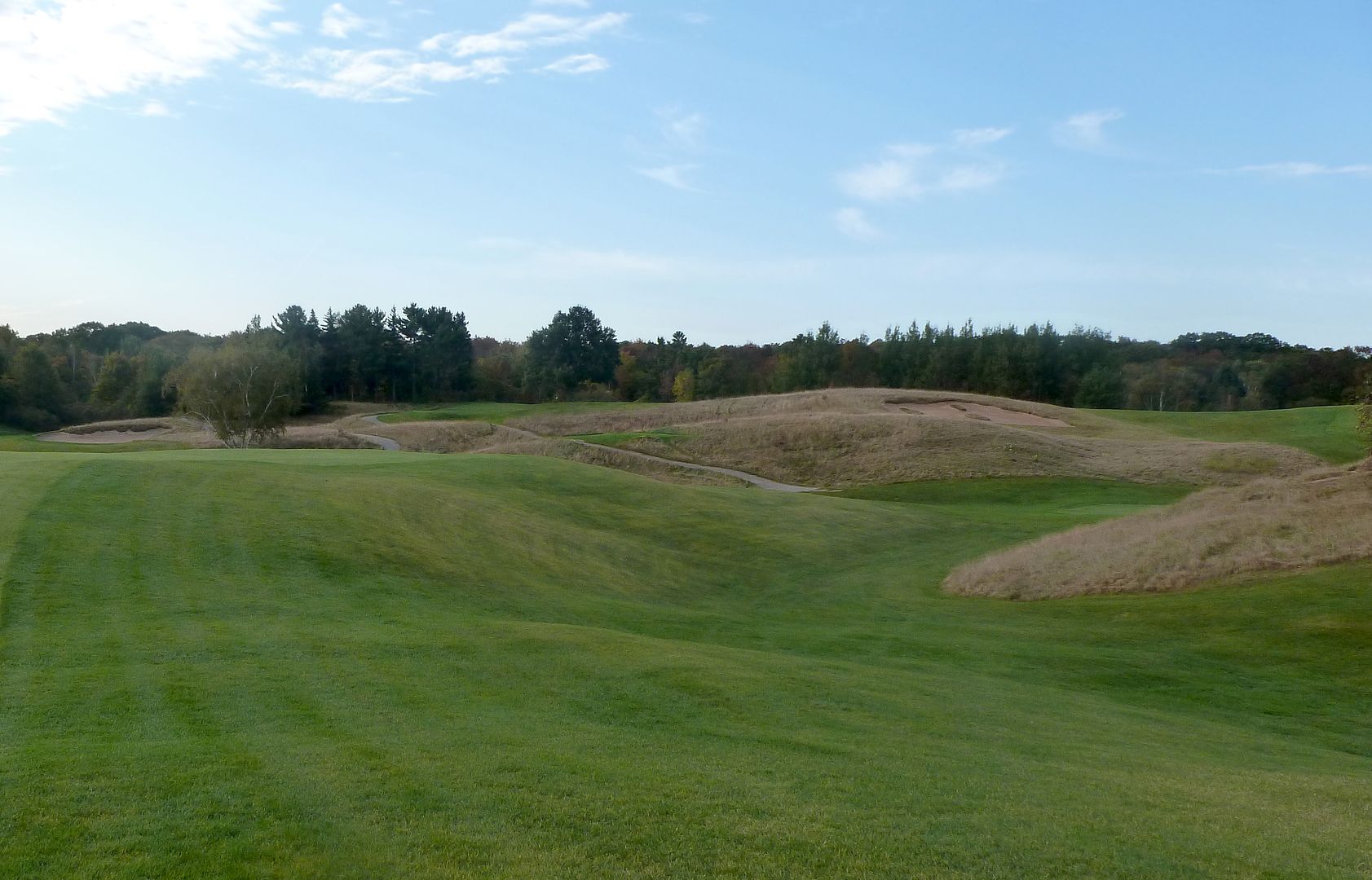 |
| A Deep Depression Guards the Right-Side of the Fairway |
The approach from the upper fairway is from a hanging lie to one of the most unique greens in the world. The bunkers benched into the hill are curious to me. What purpose do they serve? My guess is to penalize the player that overshoots the lower fairway.
Be sure to get your approach shot in the proper lobe of the green or you will have a rather interesting putt ahead of you.
 |
| Approach from Upper Fairway |
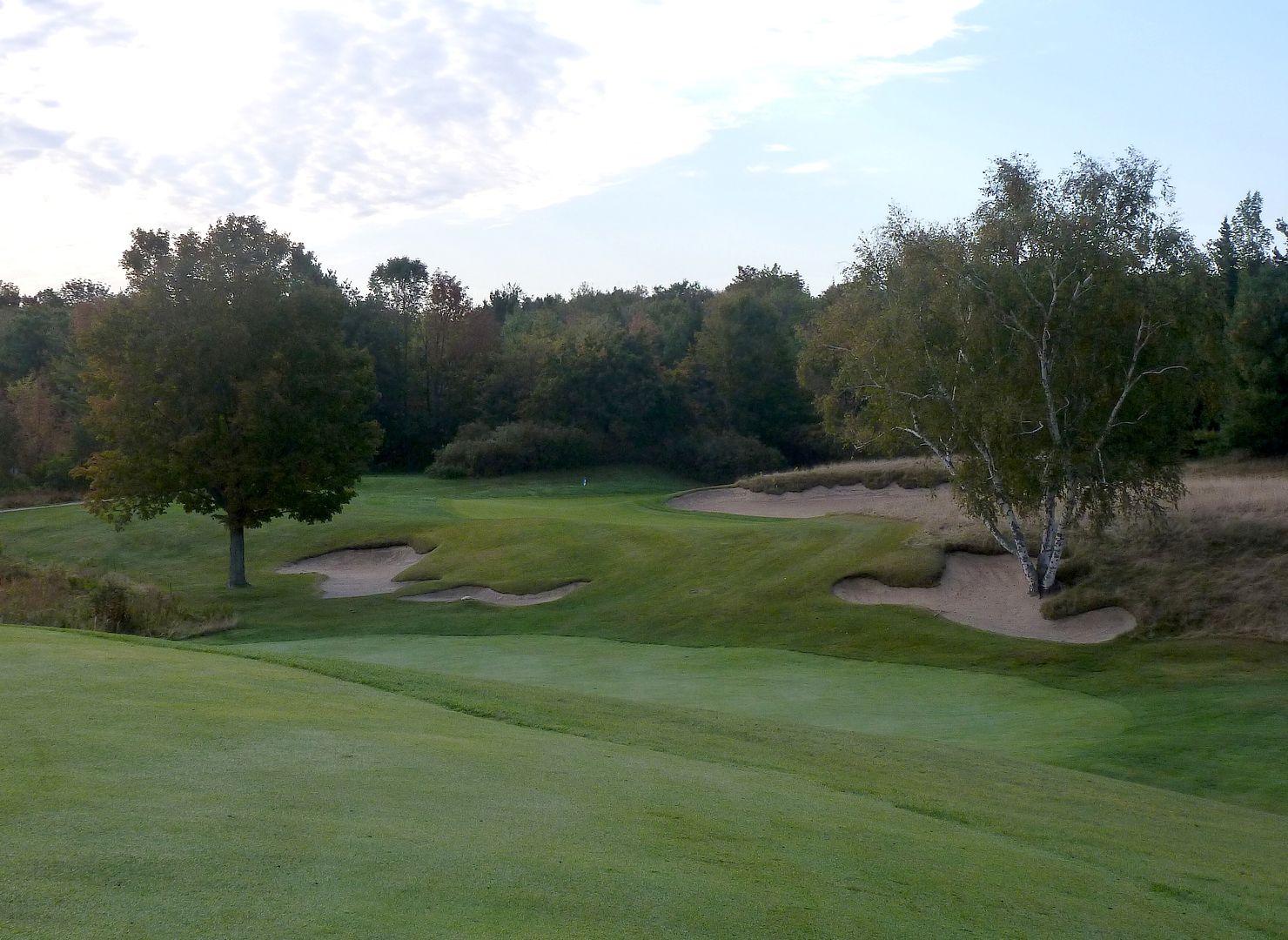 |
| Approach from Upper Fairway Zoomed |
 |
| The Approach from the Lower Fairway is Completely Blind |
One of the most interesting and most fun greens you will ever see is the kidney-shaped 7th green at Crystal Downs. Yes, it is possible to get a ball from the front of the green to the back using the slopes. I'll bet I'm not the only person who spent 15 minutes messing around on this green before moving on to the 8th tee. It's like a playground for golf nerds.
 |
| Green from Front |
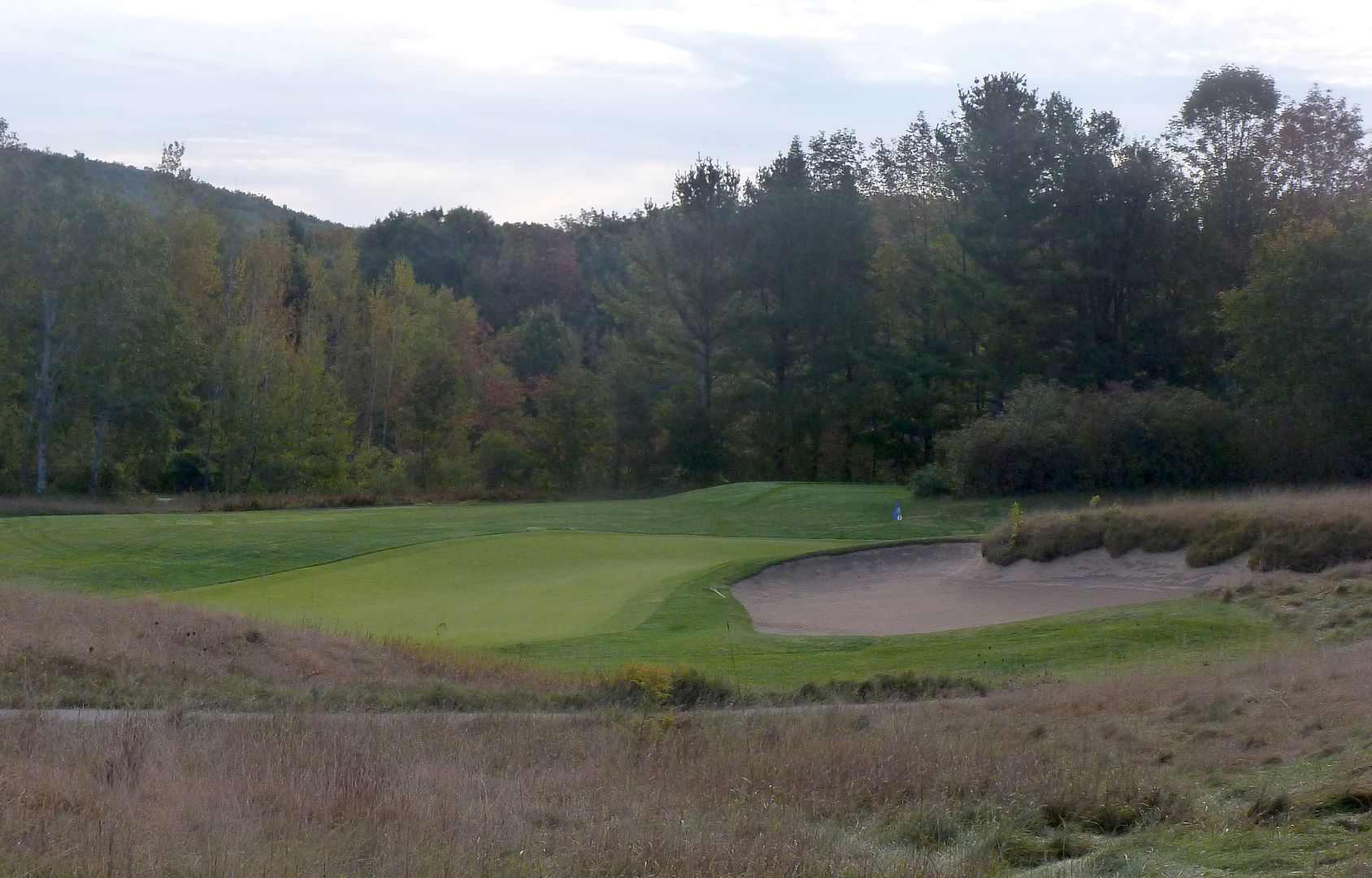 |
| Green from 6th Tee |
I noticed a small hump in the centre of the back portion of the green. This little hump makes the back portion extremely difficult, almost like a little plateau. I was told, however, that the very back pin position is rarely used.
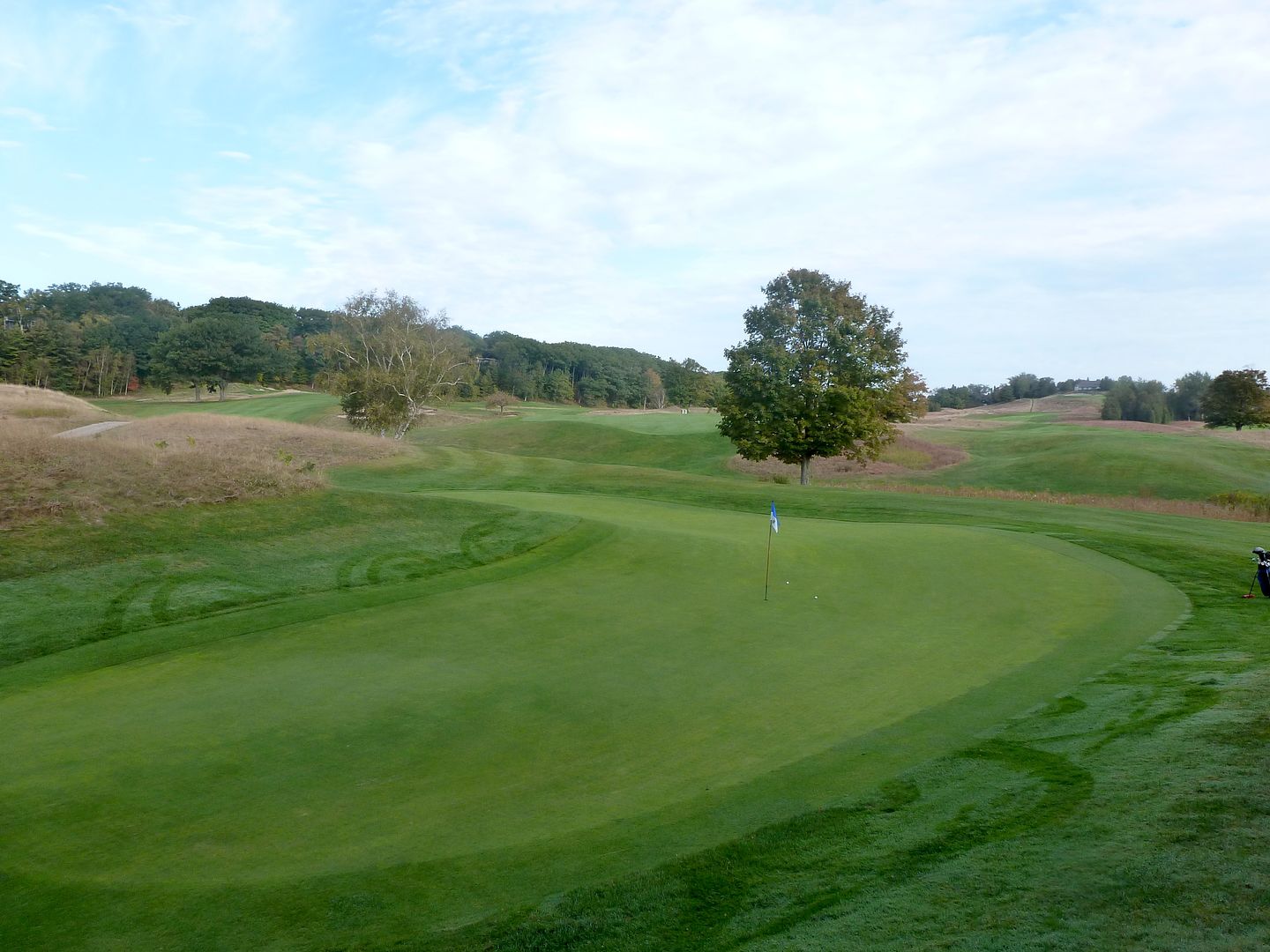 |
| Green from Behind |
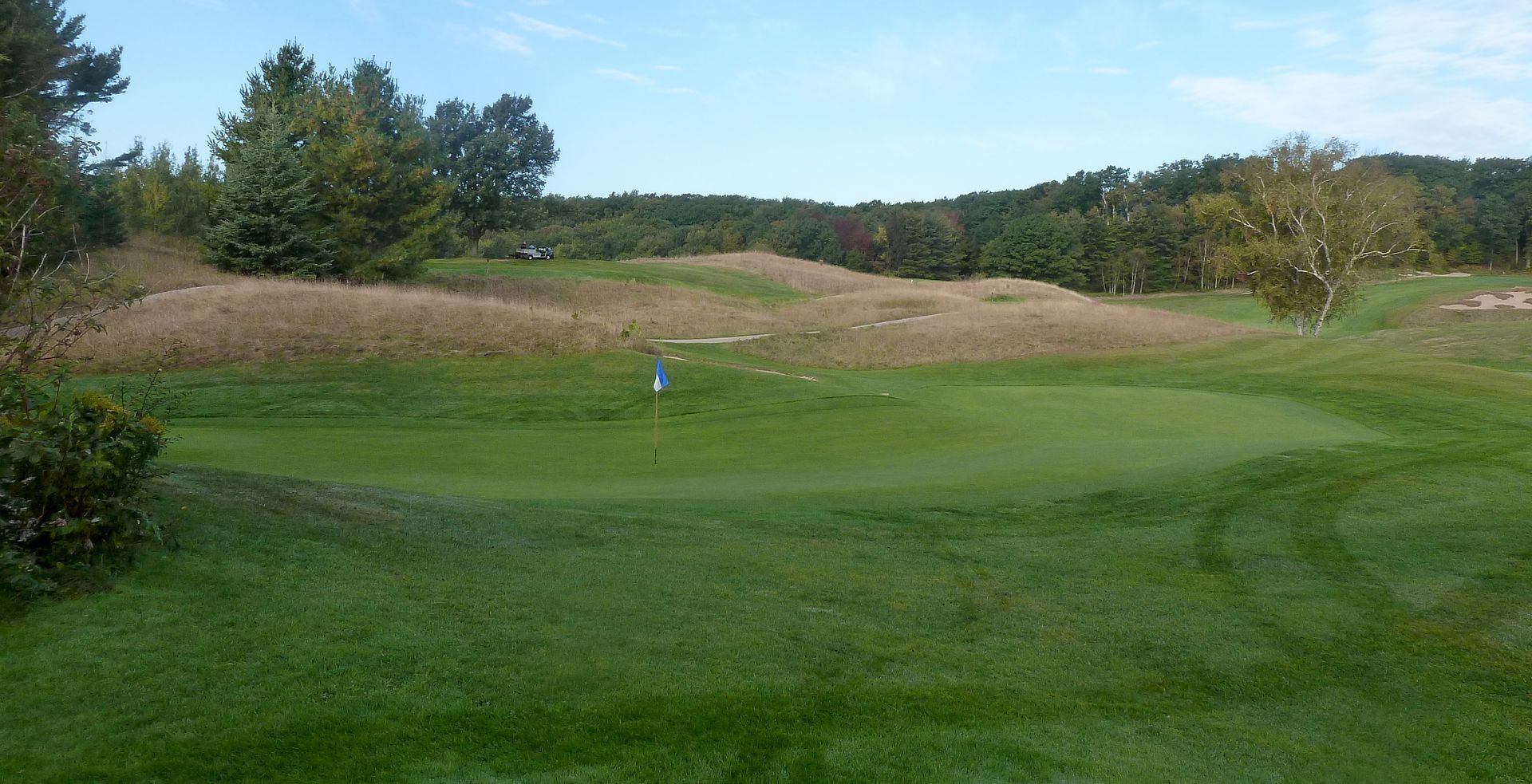 |
| Green from 8th Tee |
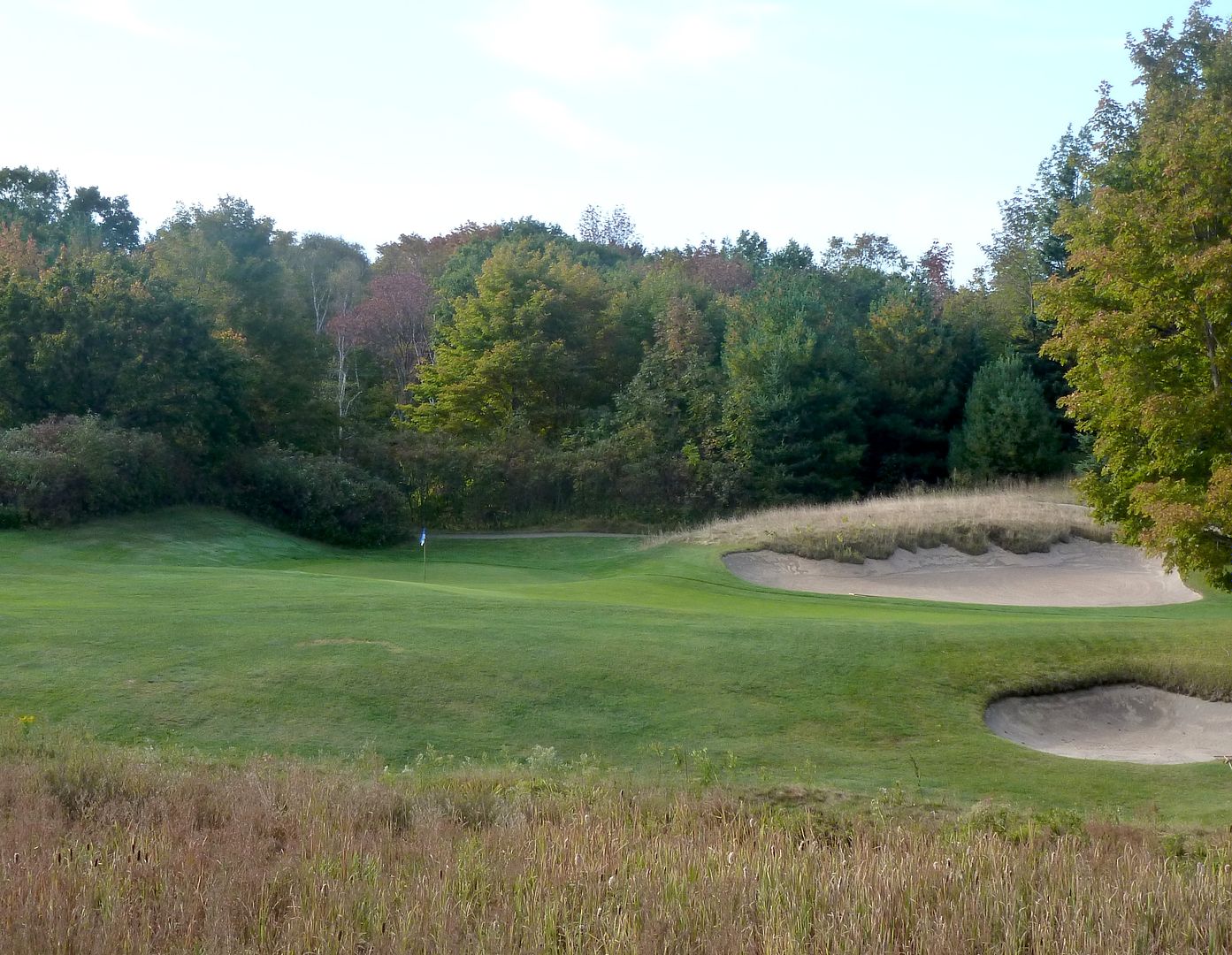 |
| Greensite from 8th Fairway |
Hole 8: Par 5, 550 Yards
Peter Pallotta's earlier thread dedicated to this hole:
The Greatest Par-5 I've Played
The 8th at Crystal Downs is a very difficult golf hole. But, it's not overly long... There is no water, no out-of-bounds, plenty of width... yet every shot is very demanding.
The tee shot is not difficult, but the golfer desperately wants as short a club as possible into the green, adding pressure to hitting a good and solid drive on the correct line. The line is dependant on the player's length off the tee. The 'bail-out' is left, leaving a longer approach, but the bomber cannot play this way as he will run through the fairway. Aggressive players will play slightly left of the tree, knowing that a pushed tee shot behind the tree will likely mean bogey at best. Can real bombers hit it over the tree?
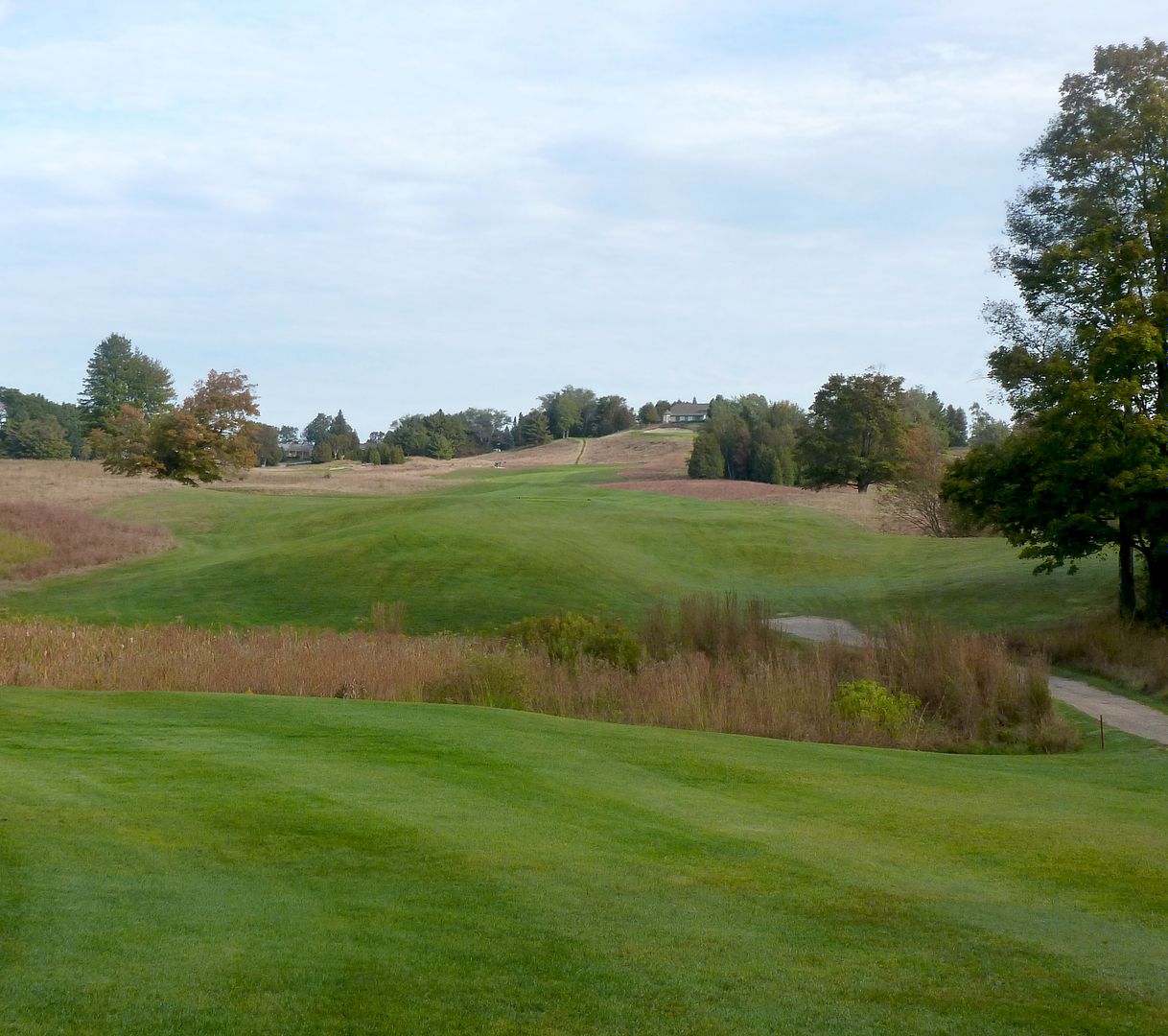 |
| 8th Tee |
The DZ - one of the most undulating I have ever seen. Like many of the other holes at Crystal Downs, the DZ slopes gently back toward the tee, making the hole play longer.
 |
| 8th Fairway |
Looking back from the DZ to the tee - the slope back toward the tee is obvious, but it is also clear that the tee shot played uphill (more length). I did not get that sense on the tee.
 |
| 8th Fairway Looking Back Toward Tee |
From the crest of the hill, the second shot plays downhill to another part of the fairway that is very undulating and sloped toward the player. From here, the astute player will notice the severe depression short-left of the green and will attempt to play his second shot to the right portion of the fairway. The fairway, however, cants significantly to the left and placing a shot on the right-side of the fairway requires a high level of precision.
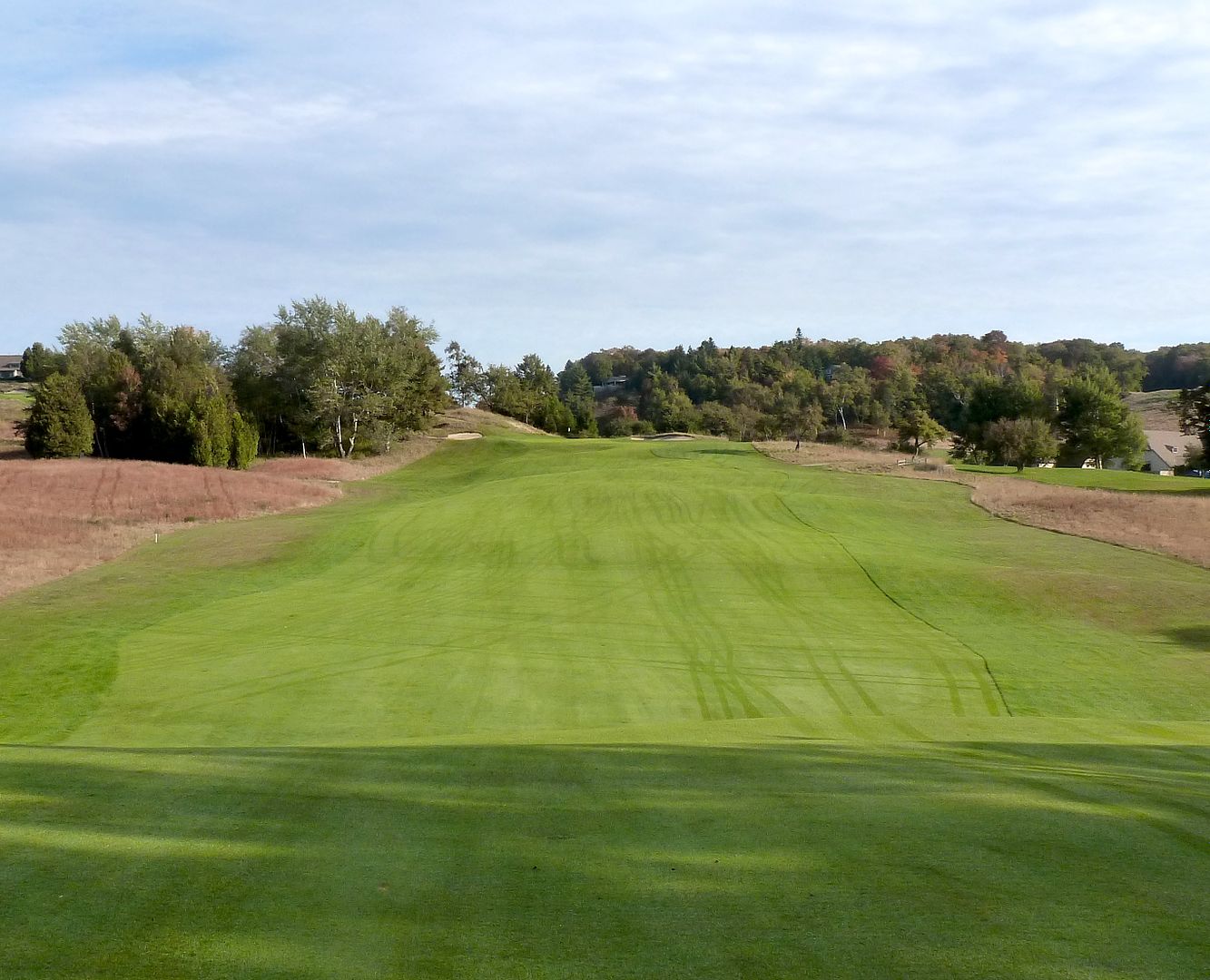 |
| 8th from Top of Hill |
The 8th fairway from the 2nd tee - the undulation and cant of the fairway are obvious in this picture.
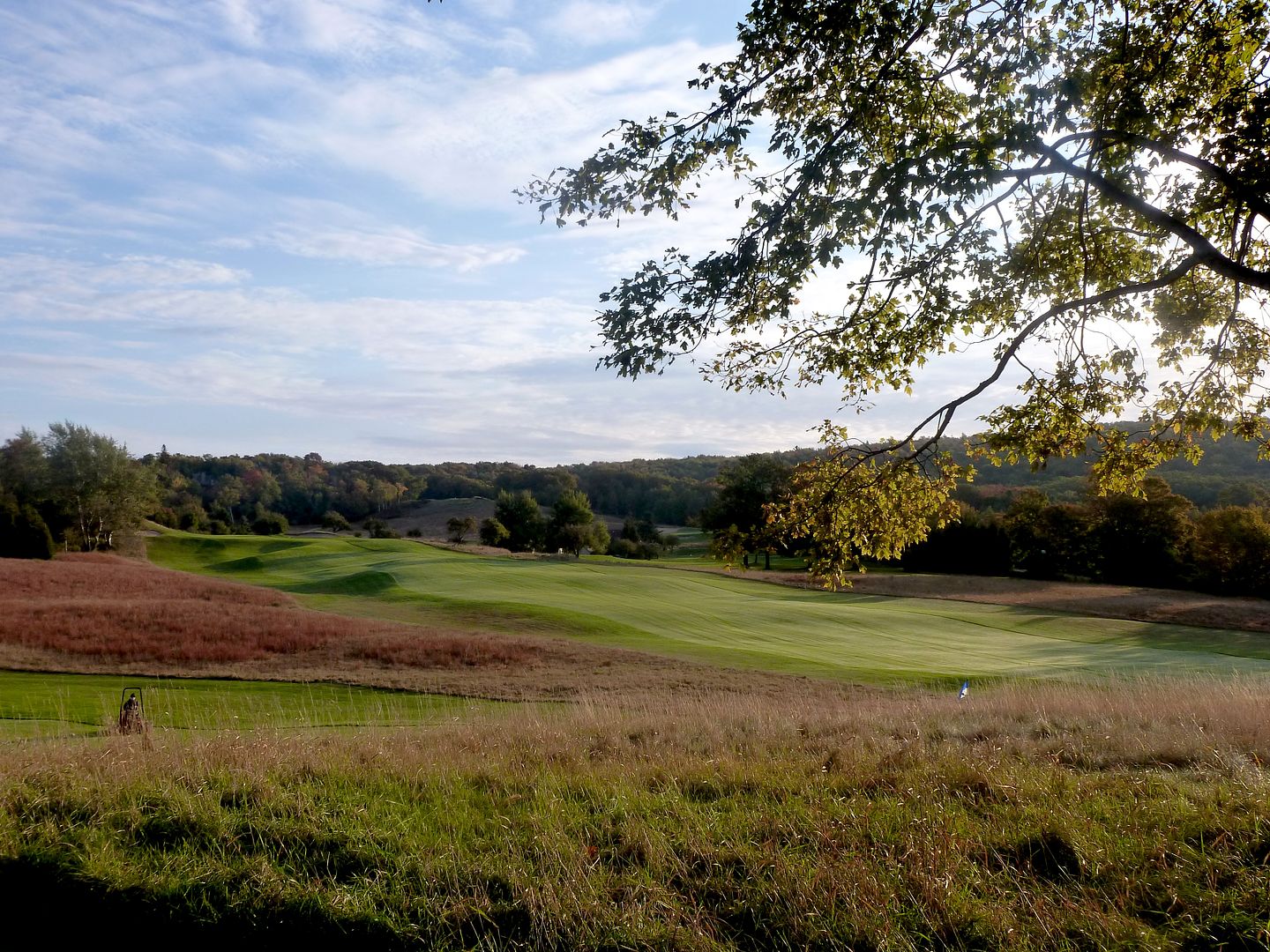 |
| 8th Fairway from 2nd Tee |
The approach to the 8th green requires nothing less than perfection. Two very well-struck shots will leave a player with a wedge in hand. A miss on either of the first two shots leaves a mid-iron into the green and nearly an impossible shot.
The approach is straight uphill, making the approach from the 150 yard mark "one of the longest in golf" - Mr. Mueller.
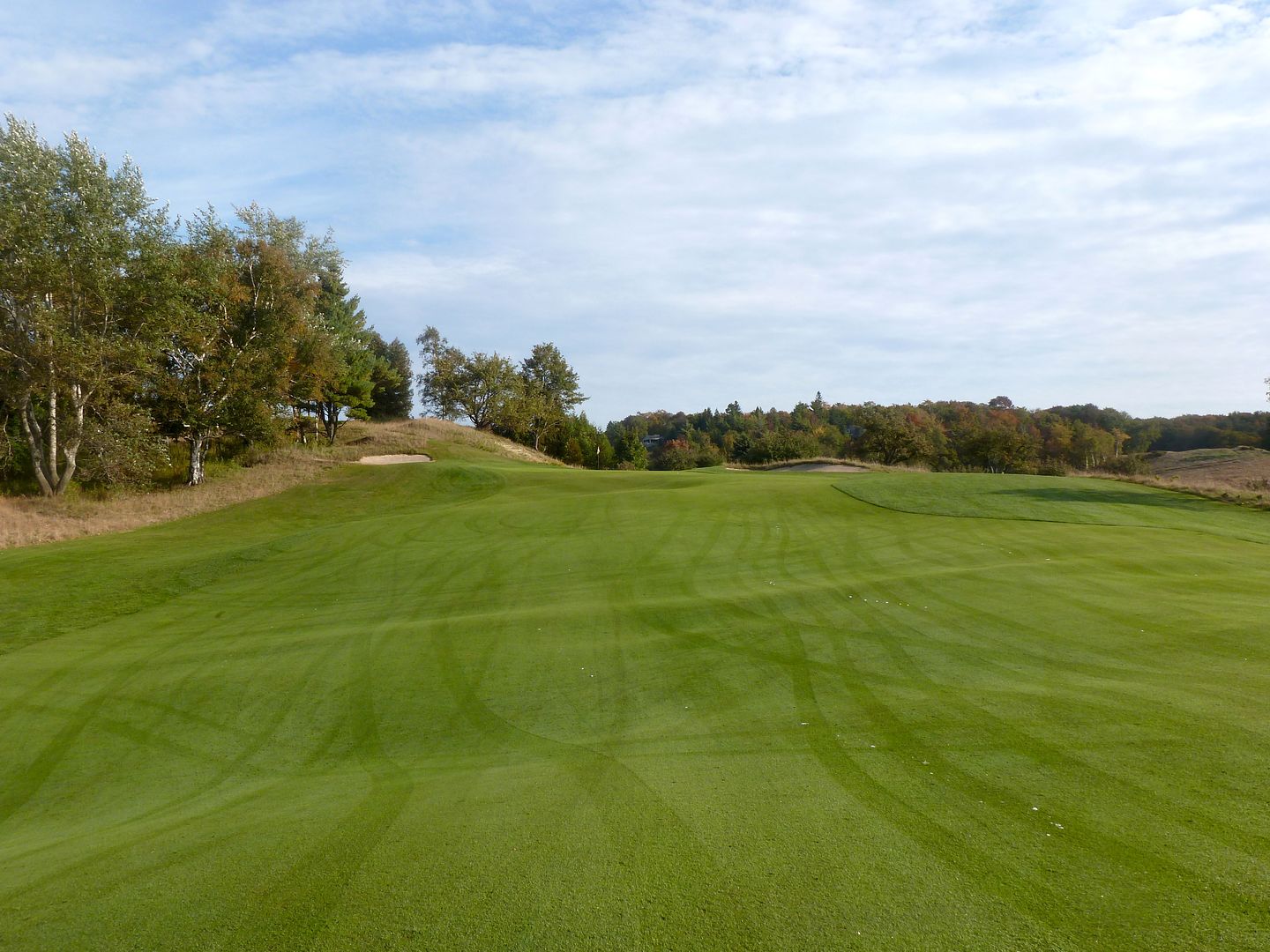 |
| Approach from 150 Yards |
A very significant swale short of the green may be the feature that makes the hole. Everything that is done on this hole is done so that one can have as short a club as possible into the green so that they can fly this swale and stay on the green.
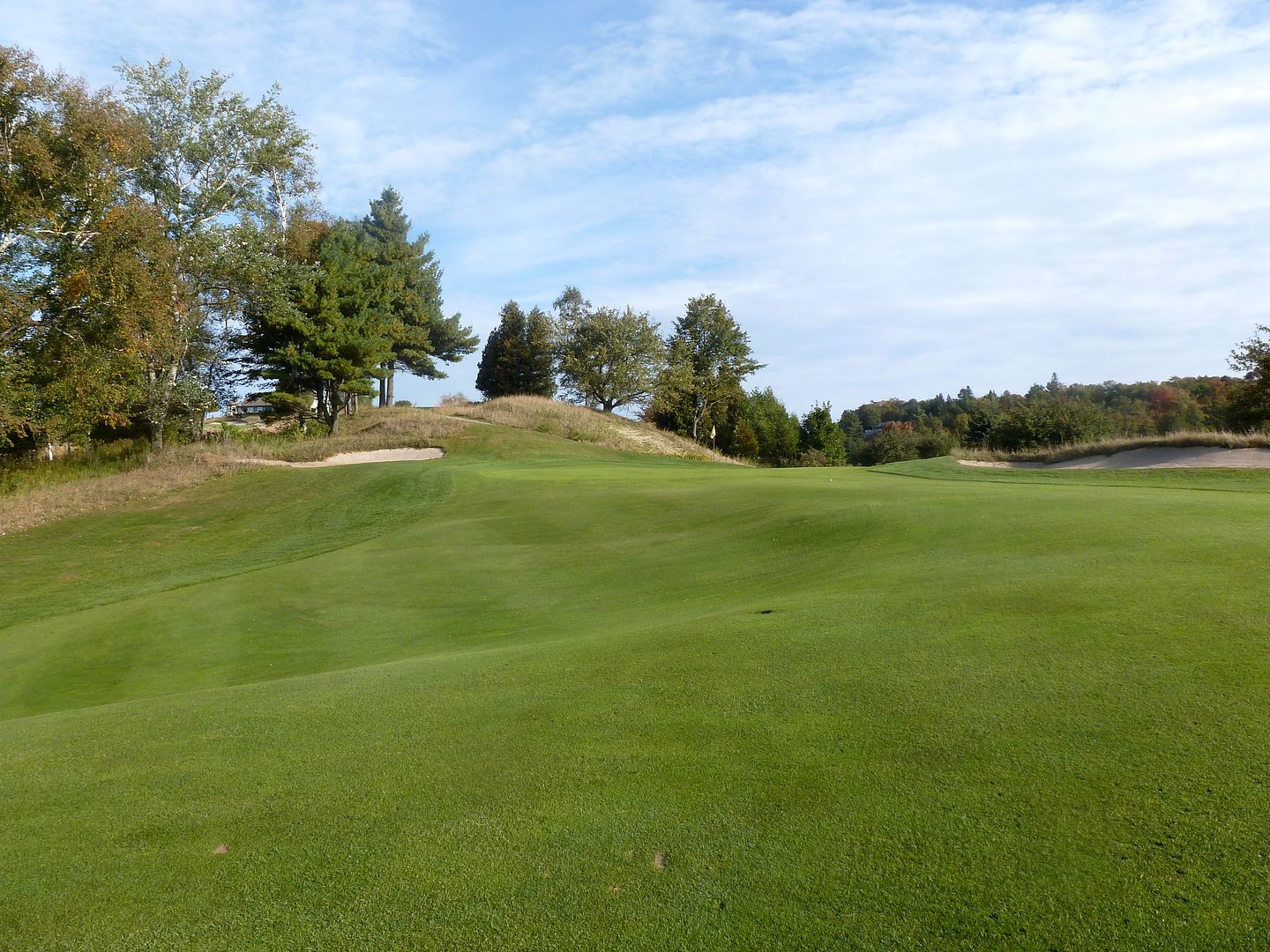 |
| Short of Green |
The green is very small with little internal contouring and a general tilt from back-to-front and left-to-right.
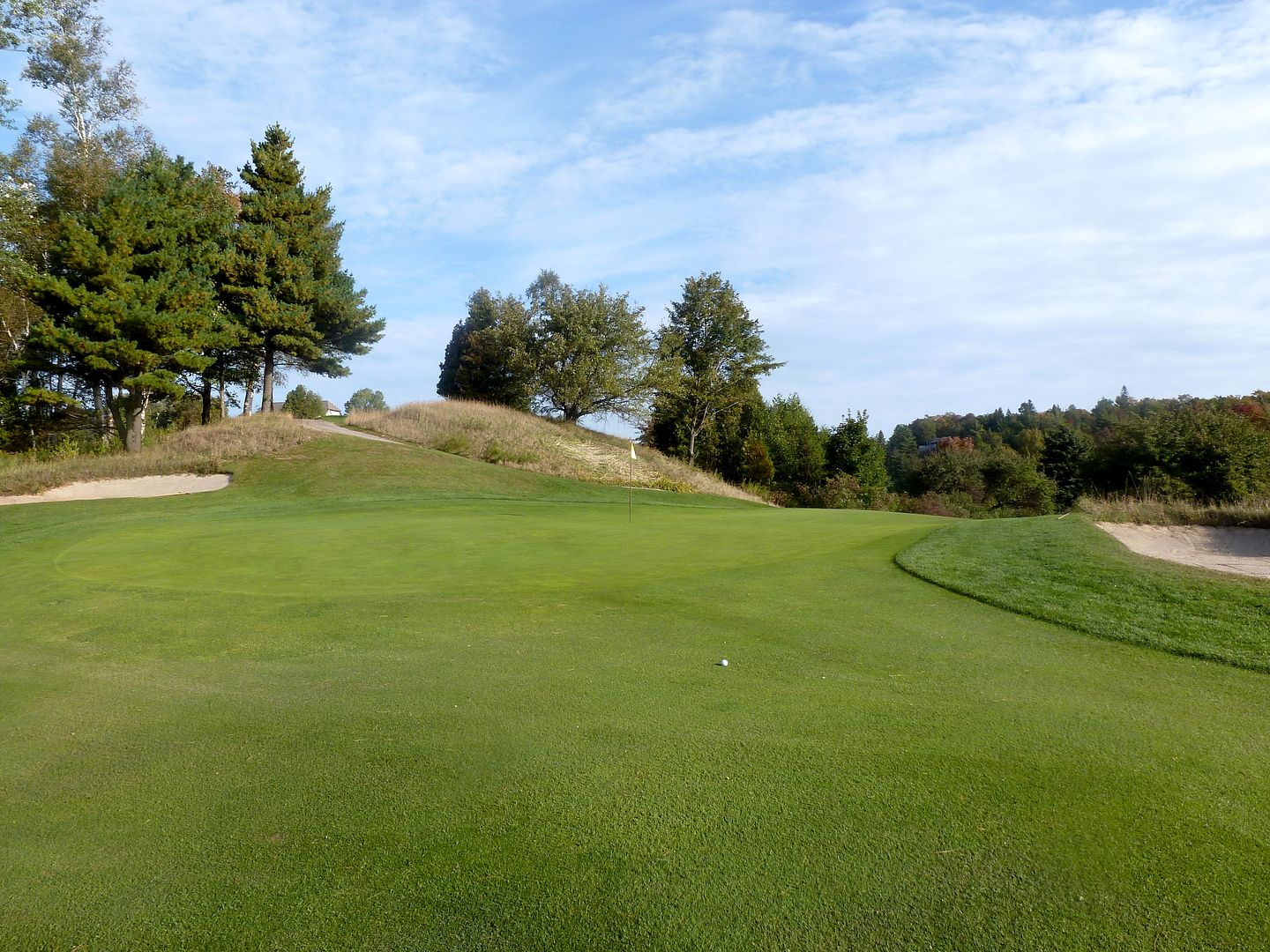 |
| Green from Front |
The safe player that bails-out long of the green is left not only with a shot that is straight downhill, but it is a shot from a significant falloff from the back portion of the green.
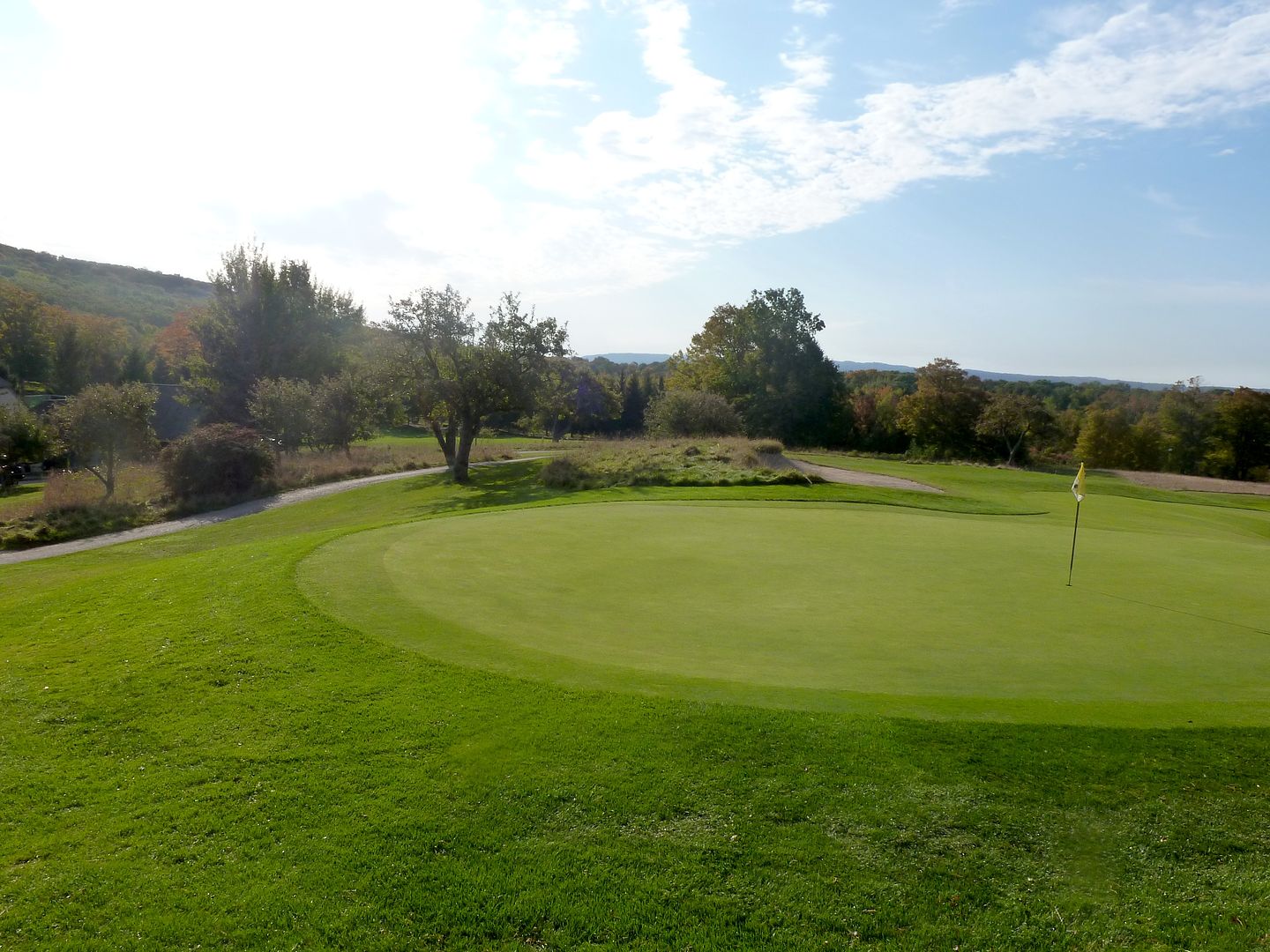 |
| Back Portion of Green |
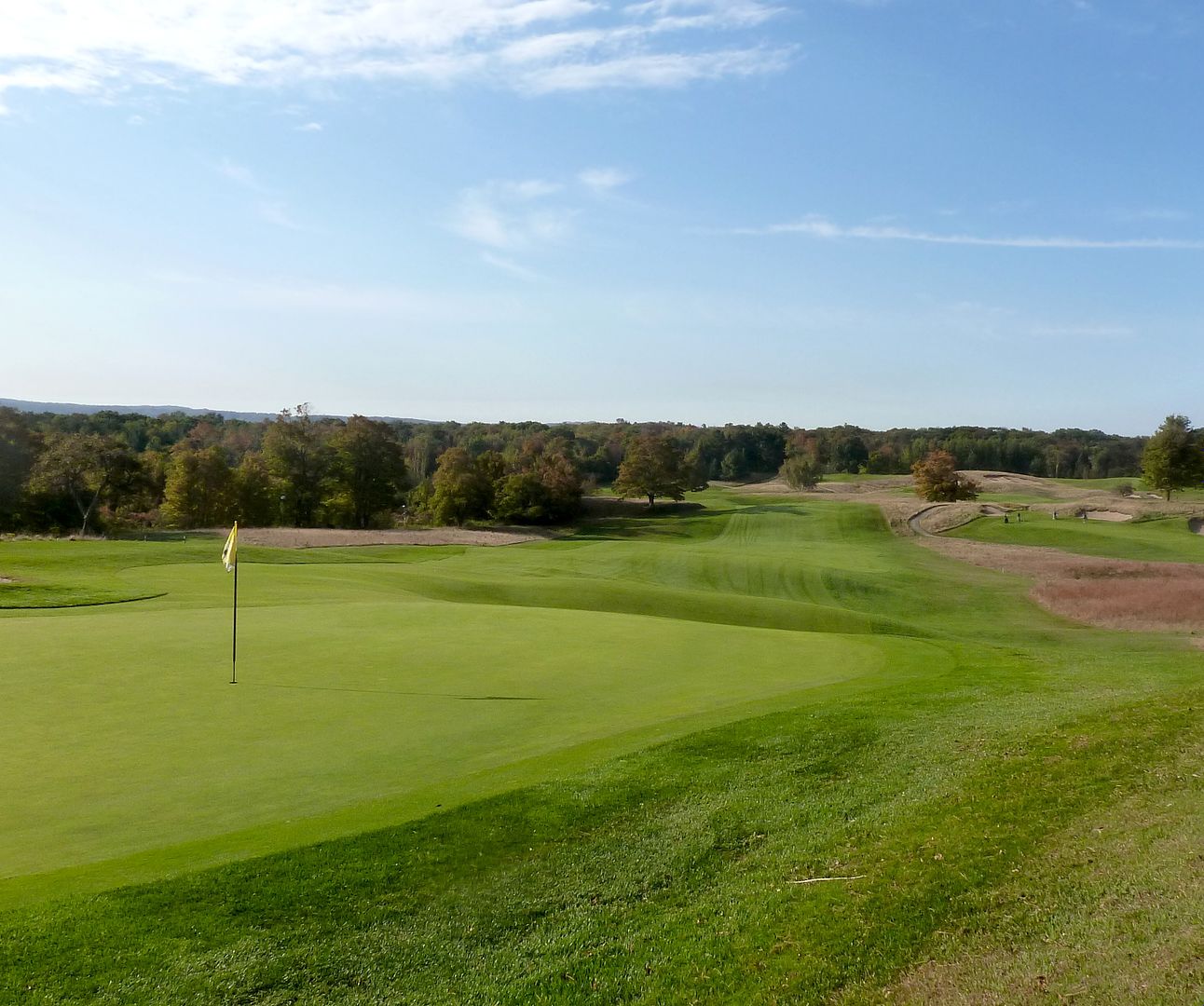 |
| 8th from Behind Green |
Hole 9: Par 3, 175 Yards
The 9th hole at Crystal Downs plays significantly uphill. Most players will (or should) choose to land the ball short of the green and have it bounce on. Misses long and left are very bad.
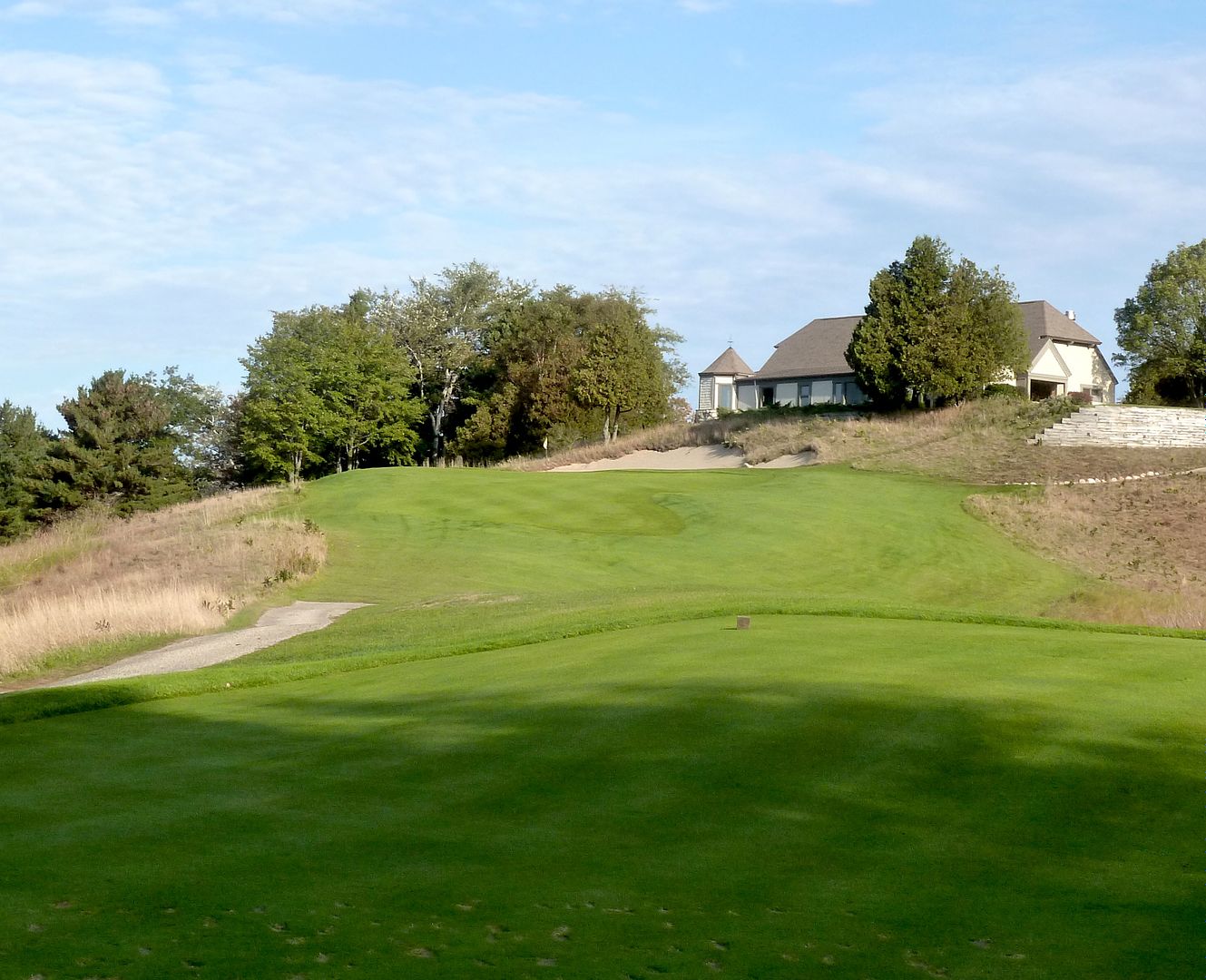 |
| 9th Tee |
There is a false-front on the green. I am sure that chip shots from over the green (and even bad putts from above the hole) are susceptible. It is easy for what looks like 3 from the tee to turn into 5 or more.
The green slopes severely back to front and its main feature is a ledge just a few feet from the back edge. The ledge will help to stop well struck shots from bouncing over the green, but it also means that any soul unlucky enough to be long of it, has almost no chance at recovery.
 |
| 9th Green from Clubhouse |
The view from the 9th green, much like the view from the 2nd tee at Ballyneal, rivals the very best views in golf (ocean views included).
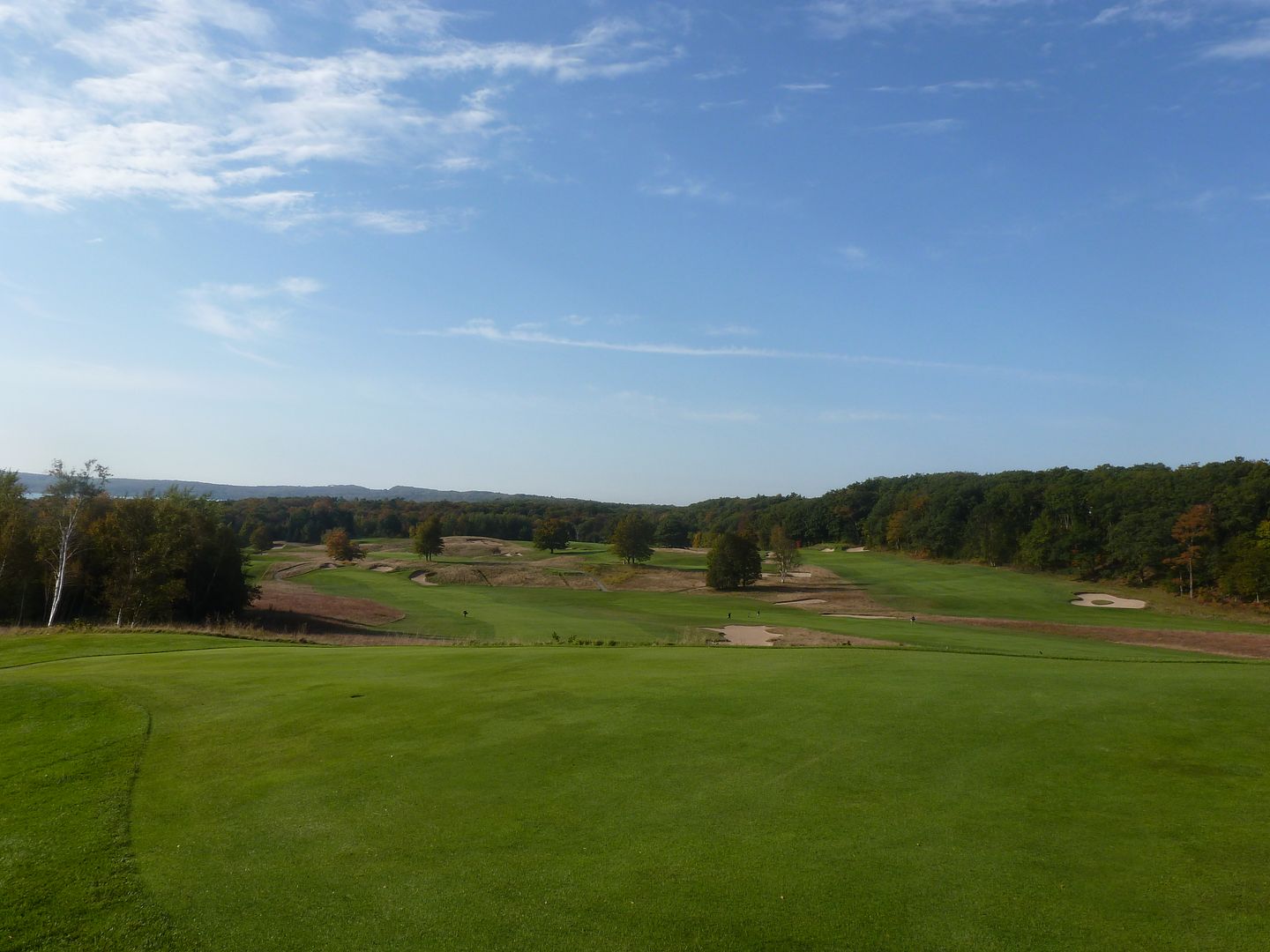 |
| View of Front 9 from 9th Green |
Hole 10: Par 4, 395 Yards
This is a really tough fairway to hit. Playing significantly downhill and with an into and from across wind, only a very well-struck tee shot will find this fairway. Adding to the difficulty is the bay window 5 feet behind the tee that give everyone inside the restaurant/golf shop a view of your tee ball.
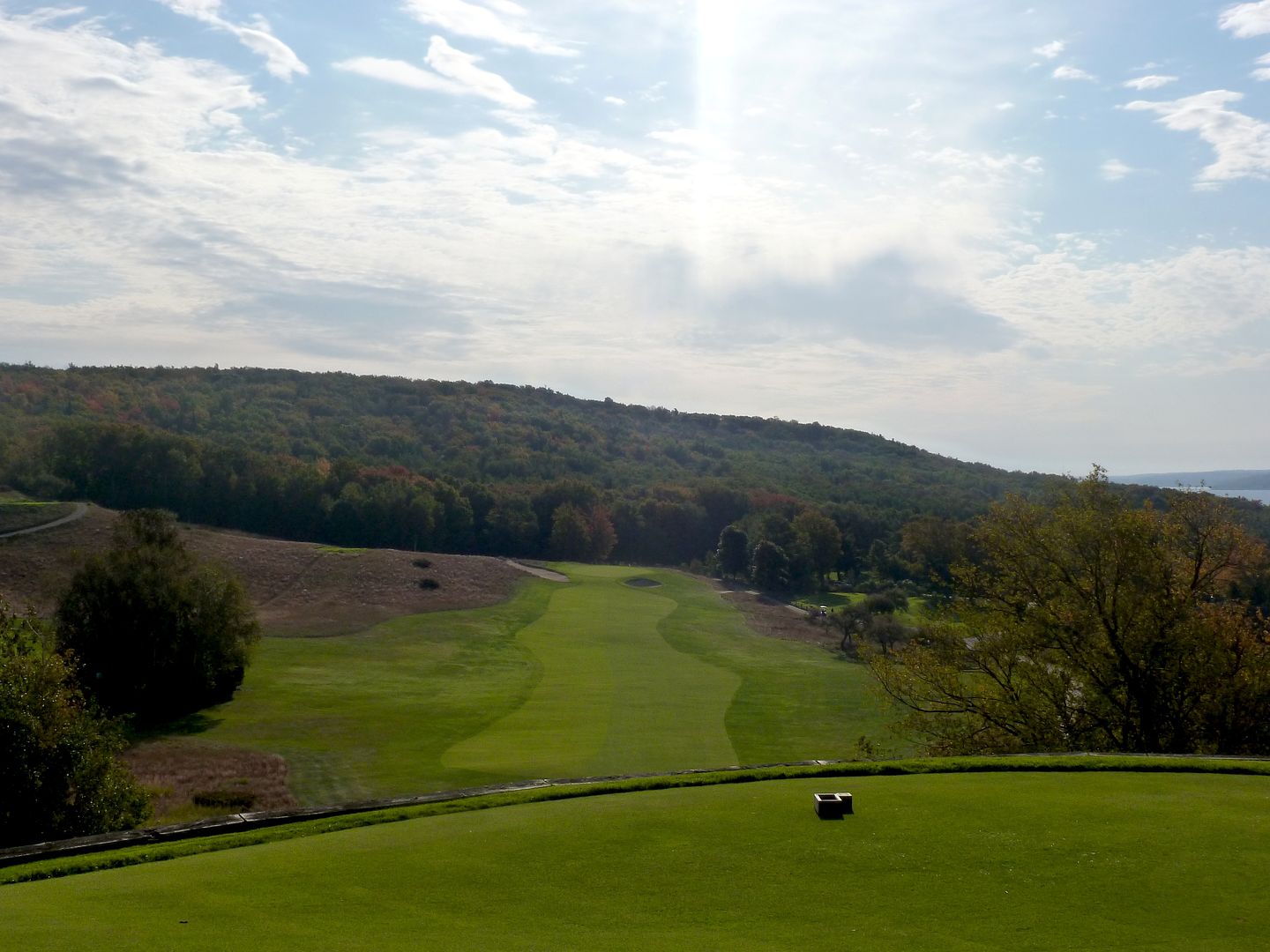 |
| 10te Tee |
The approach is back uphill with a single deep bunker protecting the front of the green. The approach playing long adds significant incentive to the player to hit driver off the tee.
 |
| 10th Approach |
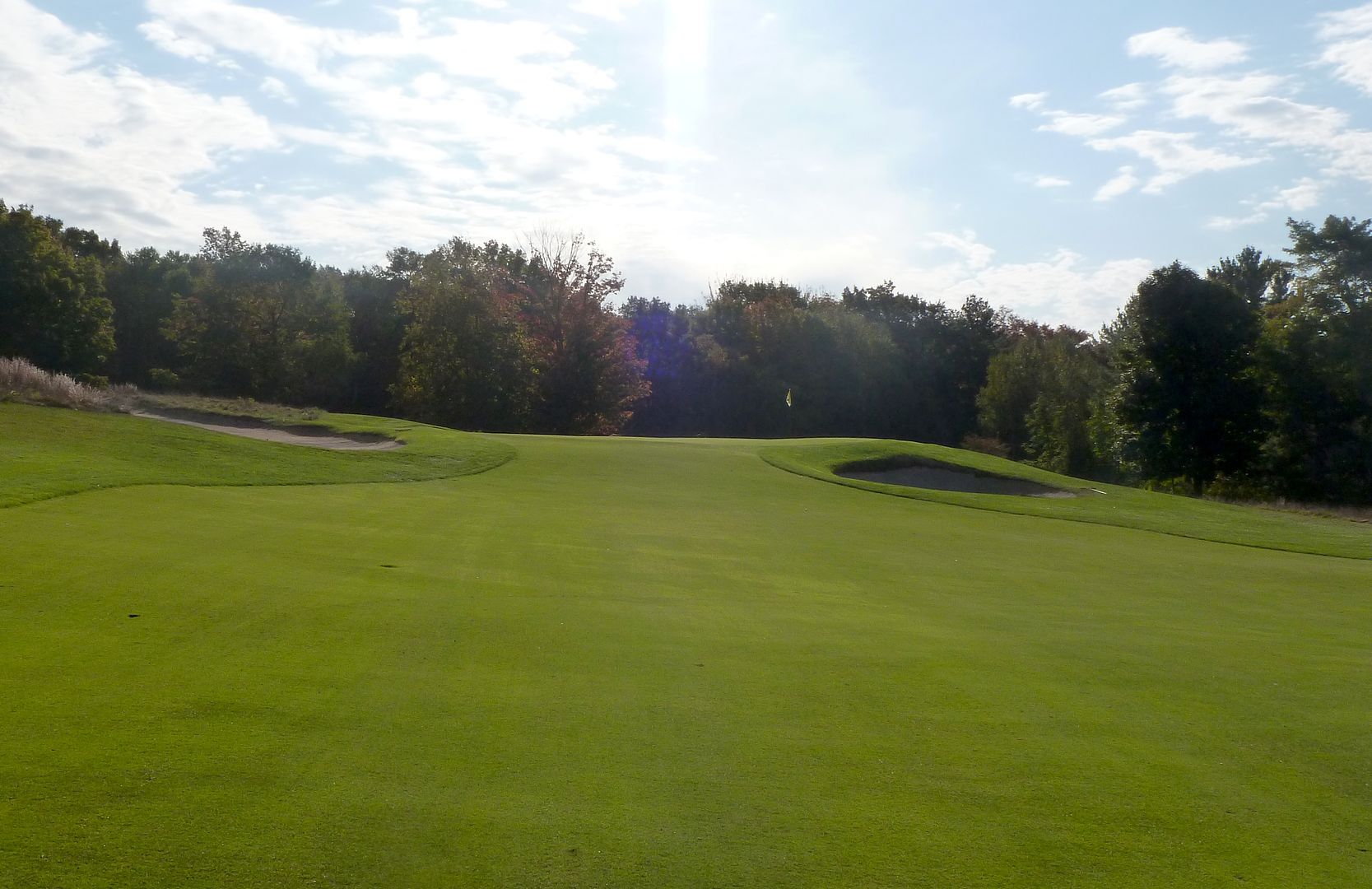 |
| 10th Short of Green |
Shots landing short of the green will find the false-front that will send the ball back down the fairway some 25 yards. Not only do balls roll a long way down the fairway, they roll to the right, dead behind the greenside bunker. There is a significant penalty for missing short, but as the guide book warns, you also have to "avoid going long."
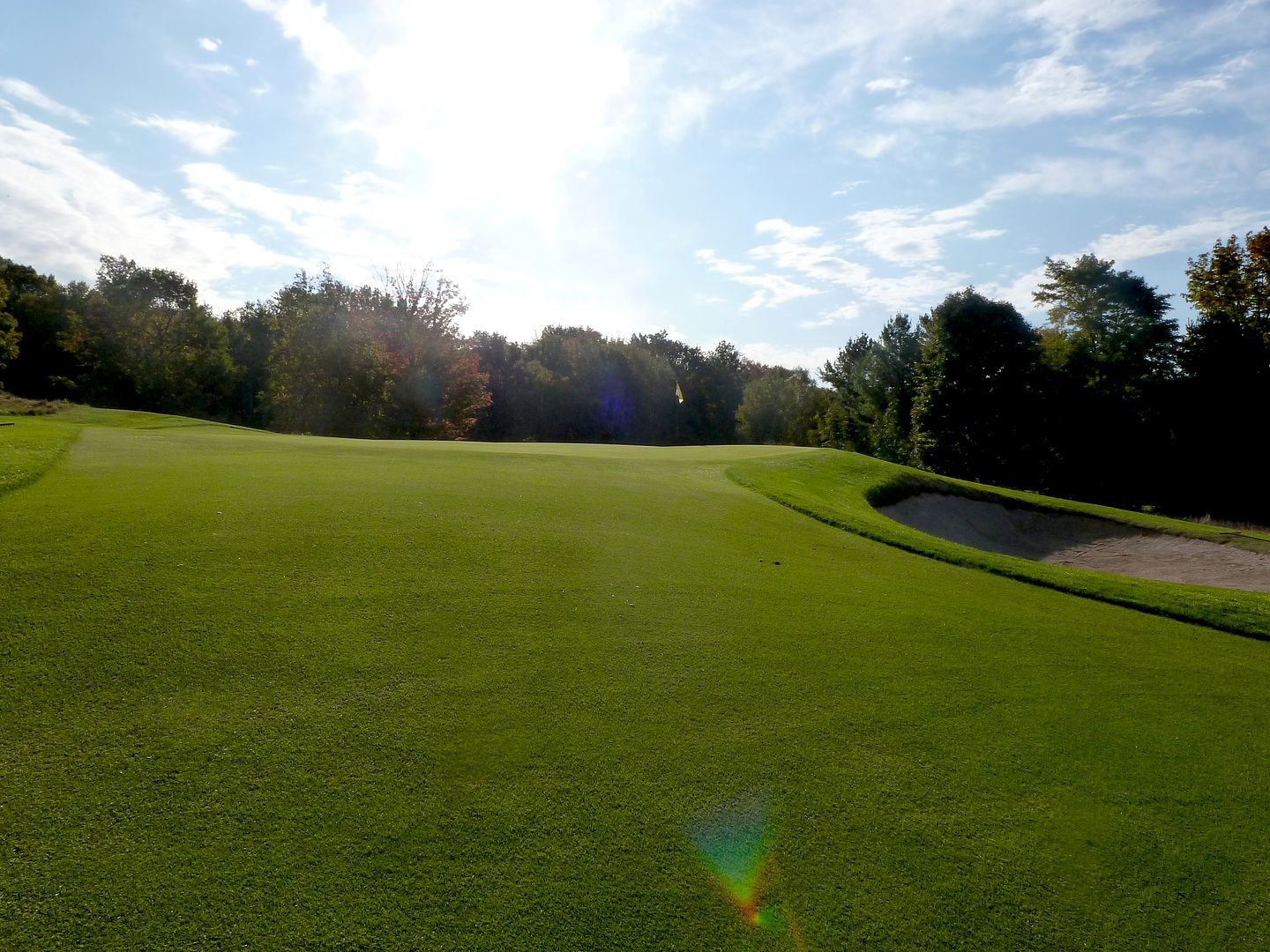 |
| 10th False-Front |
Yet again, there is significant tilt to the green. This green moves significantly from back-left to front-right.
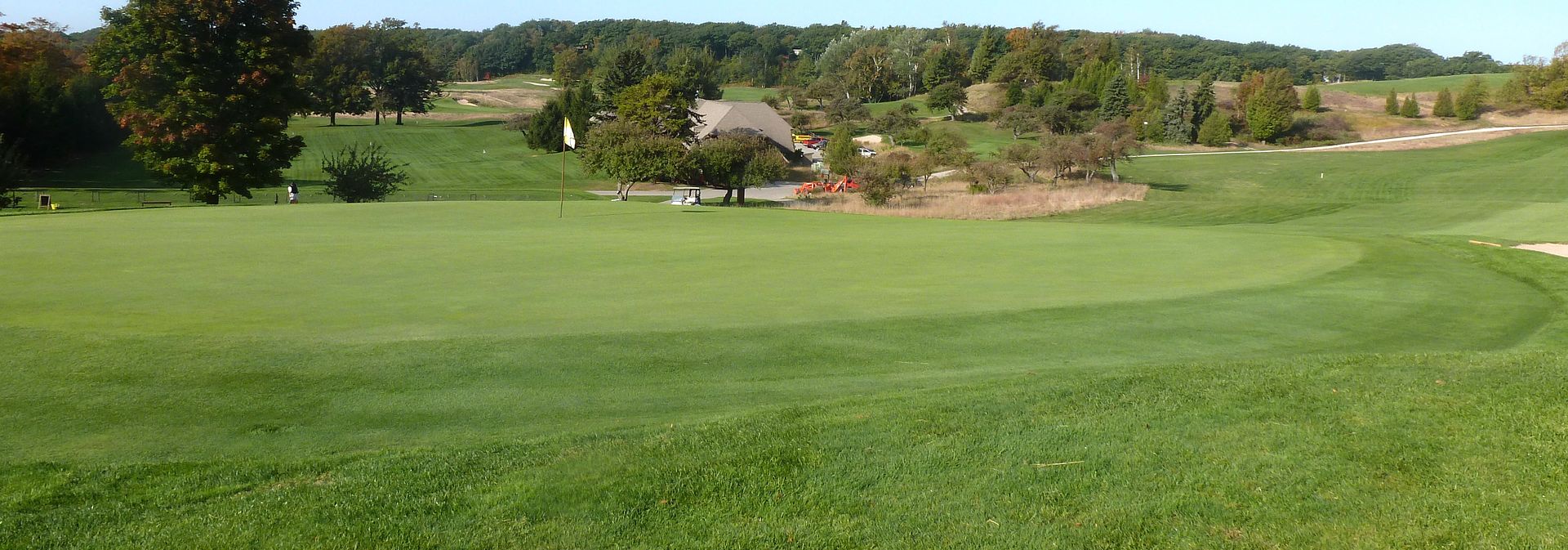 |
| 10th Green from Left |
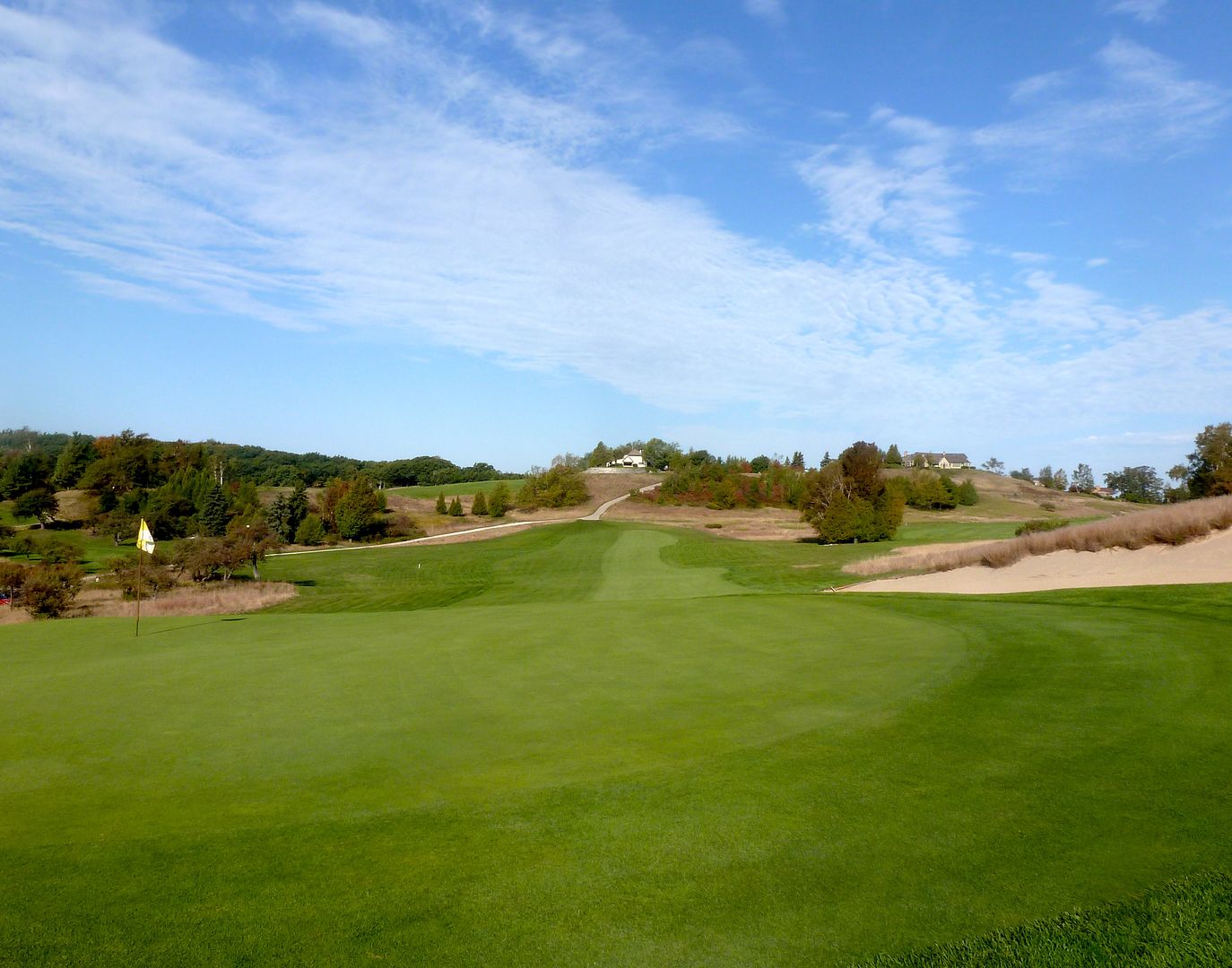 |
| 10th from Behind |
 |
| 10th Green as seen from 18th Tee |
Hole 11: Par 3, 196 Yards
A difficult par-3 that requires a tee ball that stays below the hole. But, playing some 20 feet uphill and with a false-front, club selection is very difficult. Anything in the back bunkers is X territory.
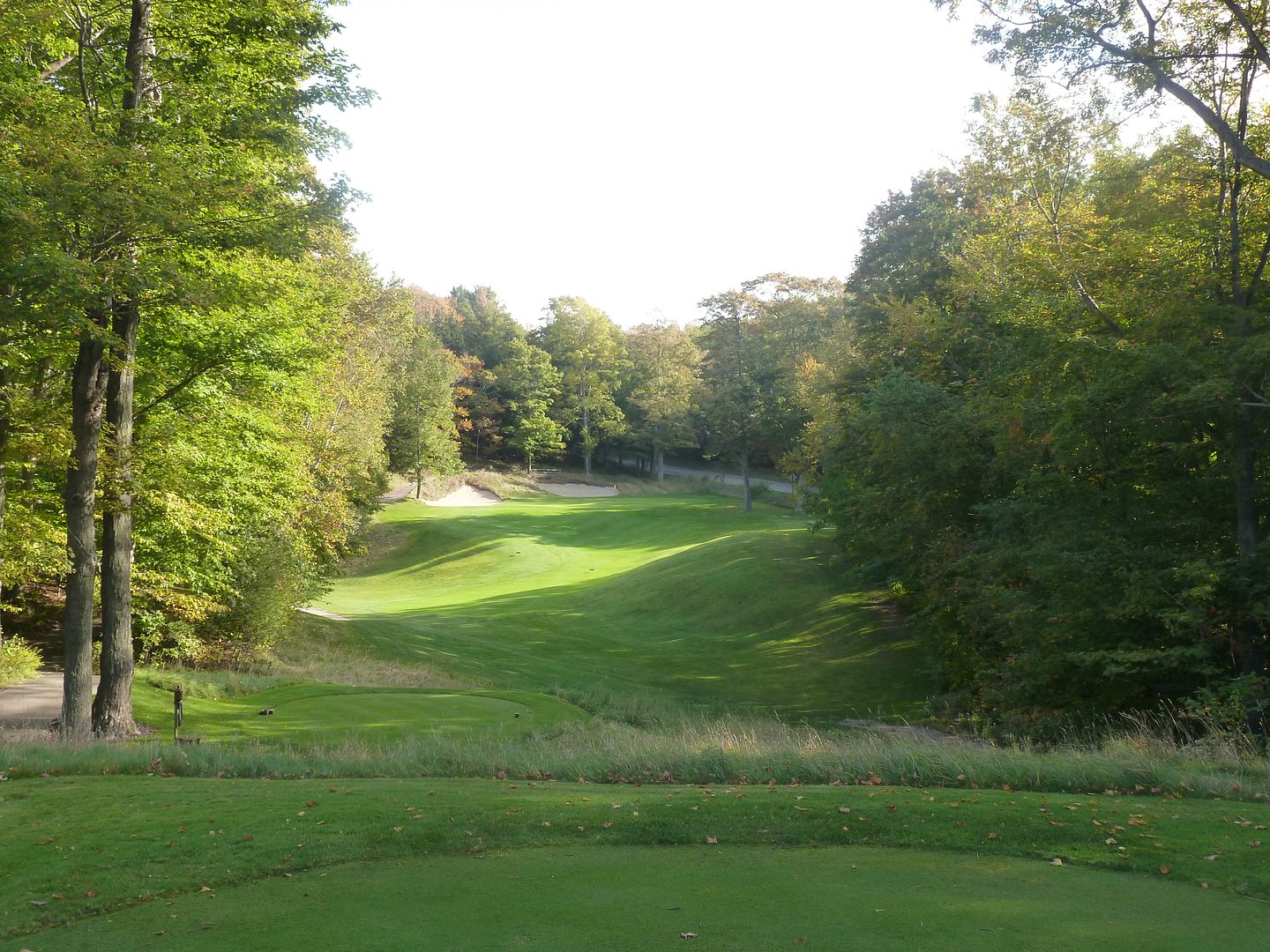 |
| 11th Tee |
The land approaching the green is phenomenal. Rolling hills that, unfortunately, are not in play. Wait until 17, though.
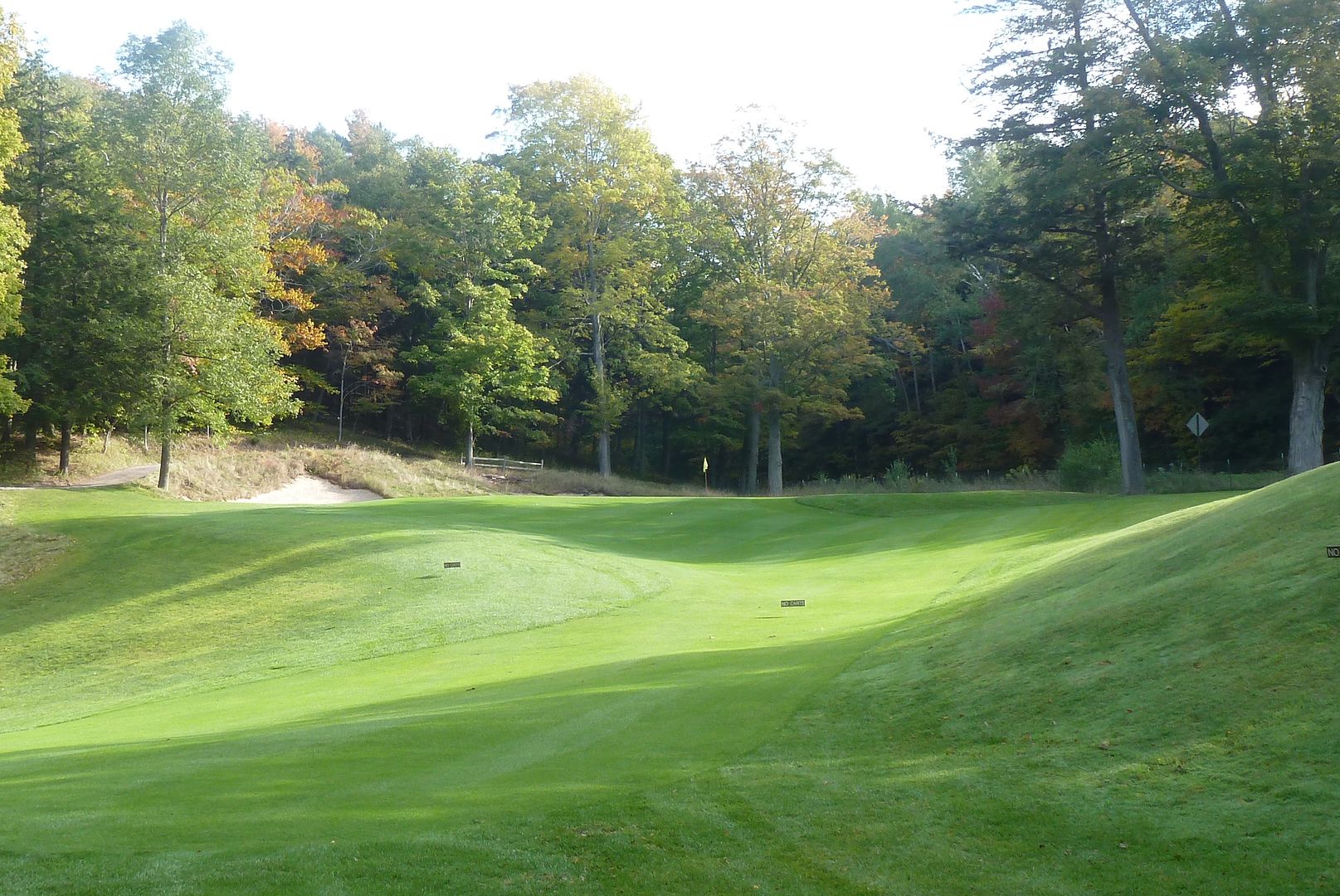 |
| 11th Short of Green |
The three-tiered green is the only(?) tiered green on the golf course. If you find yourself on a tier above the pin, good luck. There is no way to keep the ball on the green from that point.
 |
| 11th Green |
 |
| 11th from Behind |
Hole 12: Par 4, 430 Yards
The 12th surprised me. Though it was peaceful walking through the trees to get to the 12th tee, it is a long, uphill trek. Not knowing what lay ahead of me, I expected something very dramatic given the uneasiness in this part of the routing. I was/am disappointed with this hole, though I am open to hearing about its redeeming features (and I do understand that not every hole on a course needs be a '10' and the occasional breather is fine).
The tee shot is hit over a road (a feature that seems to be common at many of the world's great courses). Almost unbelievably, the tree in the centre of the picture is in the left rough(!). It really goes against one's instincts to play it as far right as is necessary.
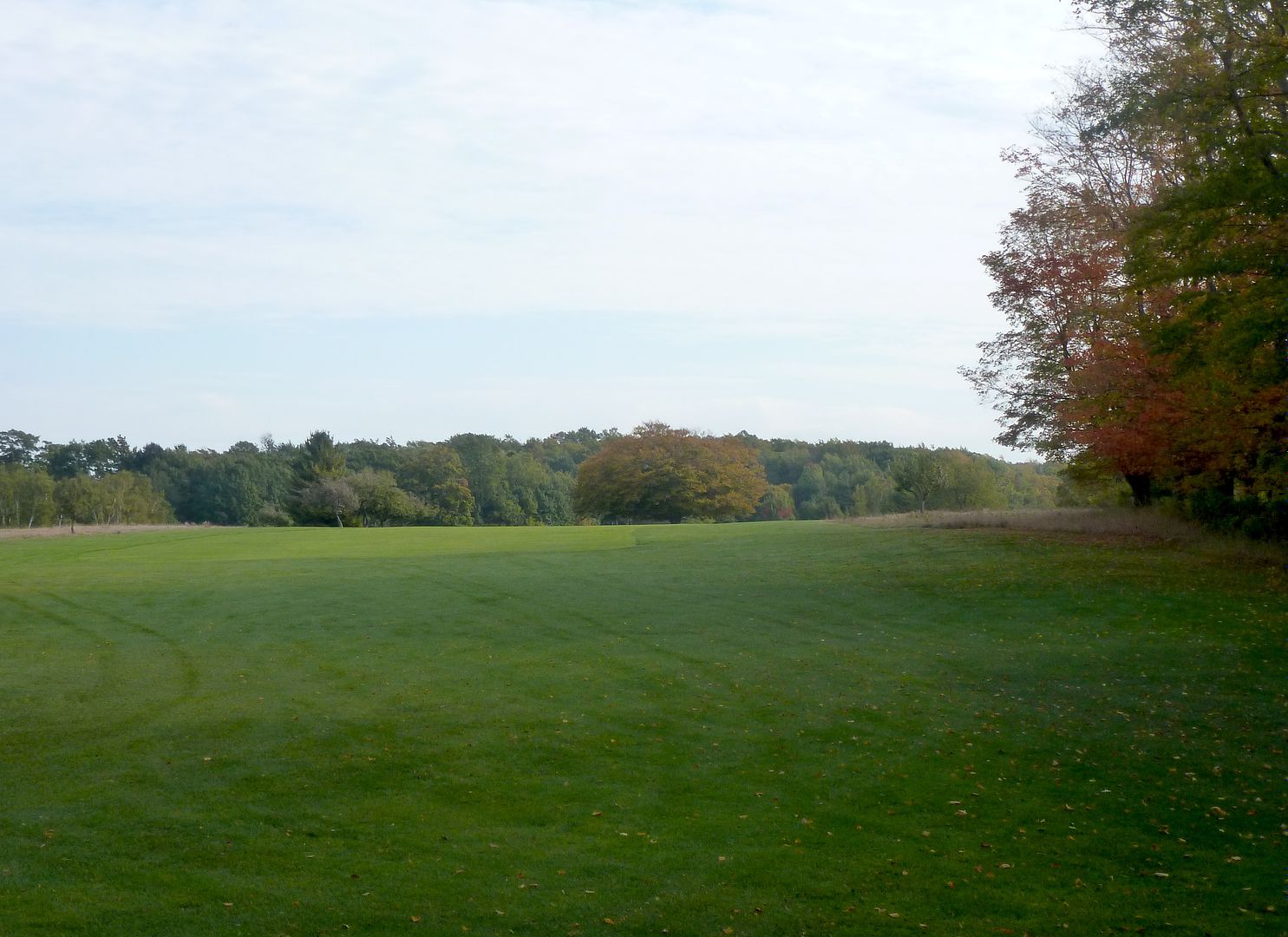 |
| 12th Tee |
The tree guarding the left side of the fairway is some 250 yards off the tee. Anything in the fairway will have a clear view of the green.
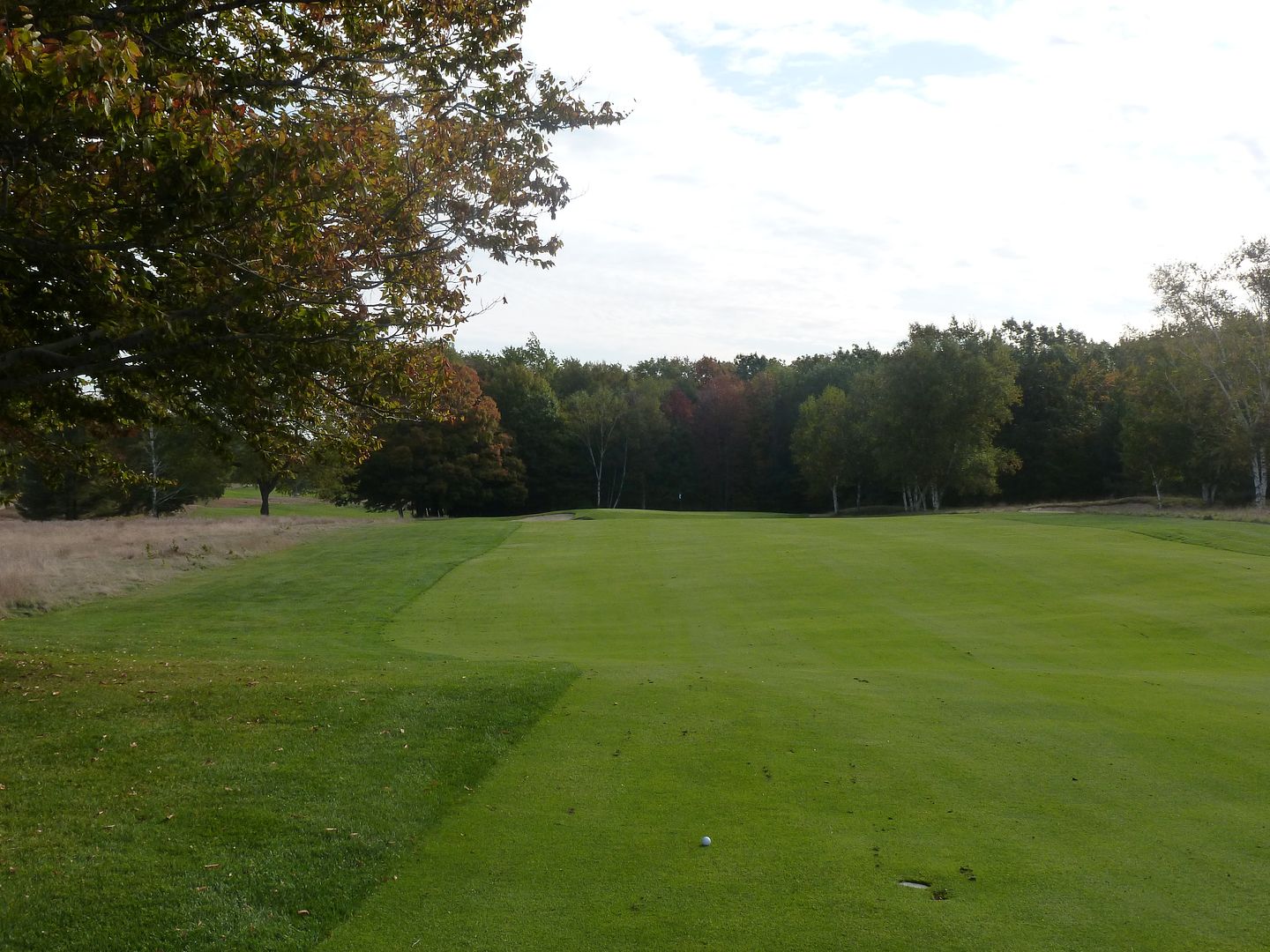 |
| 12th Approach from Left |
 |
| 12th Approach from Centre |
A curious bunker found in the right rough 30 yards short of the green. Using the Sean Arble test of 'what purpose does that bunker serve?', I think this bunker should go (but I would love to hear arguments for its staying).
The bunker guarding the right side of the green is a bad spot to miss. With the trees growing out of the bunker, can you say "double hazard?"
 |
| 12th Greensite |
The green slopes gently from front to back. With the open green-front, the ground game is the obvious choice and missing just a bit long is not a problem.
 |
| 12 Green |
 |
| 12 Green as seen from 13 Tee |
Hole 13: Par 4, 442 Yards
Mr. Muller says this is by far "the most difficult par at Crystal Downs." I agree.
The tee shot is one that requires precision. The fairway is at an angle almost 45 degrees to the player with rough left and woods right. The fairway cants significantly left-to-right. Approaches from the left are near impossible. As such, one must be on the right side of the fairway, but anything that misses the fairway right will be blocked out. A fade up the left side of the fairway will work nicely.
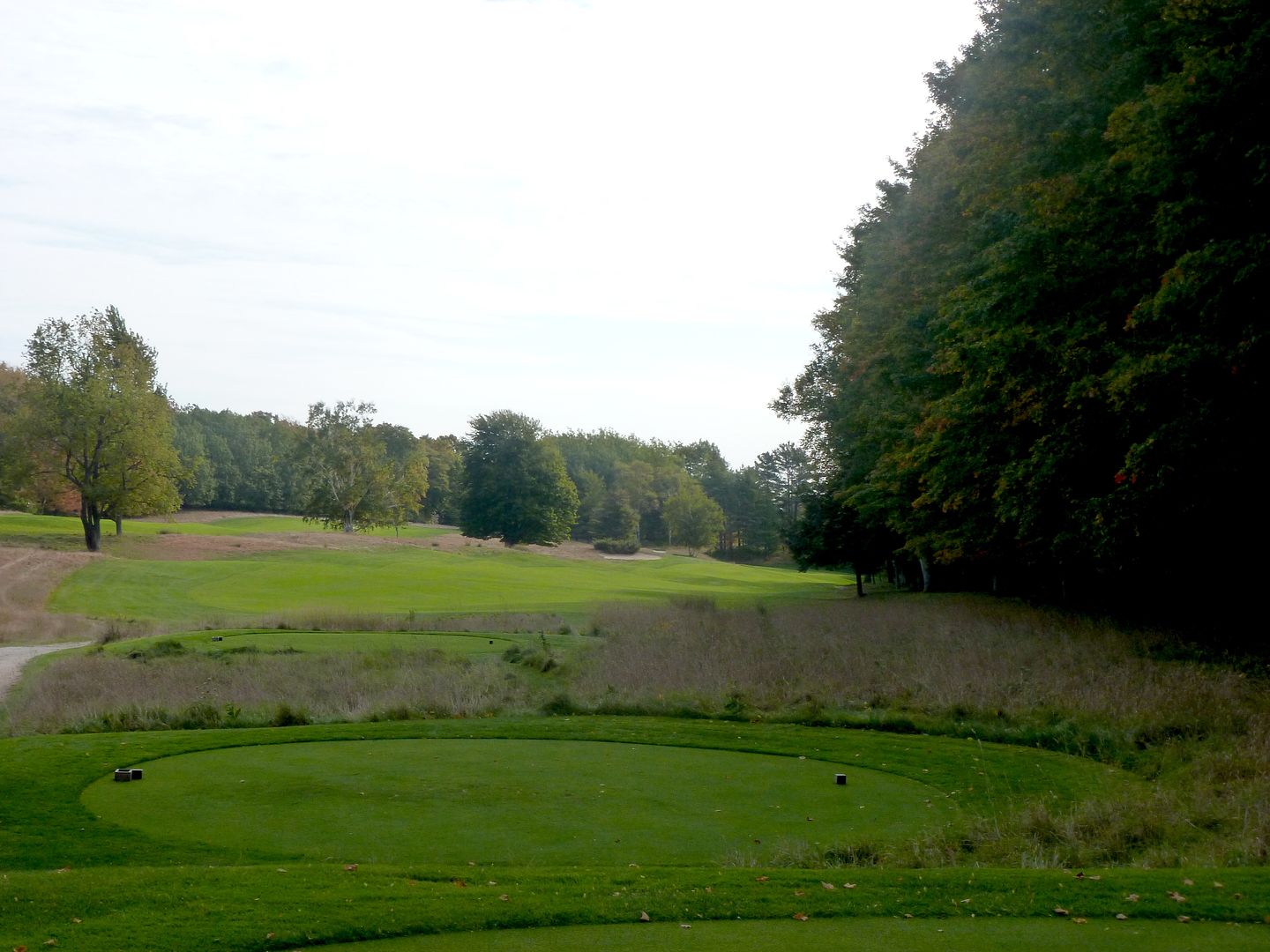 |
| 13th Tee |
A look at the fairway looking back toward the tee. The cant of the fairway is very significant. A fairway of reasonable width plays rather narrowly.
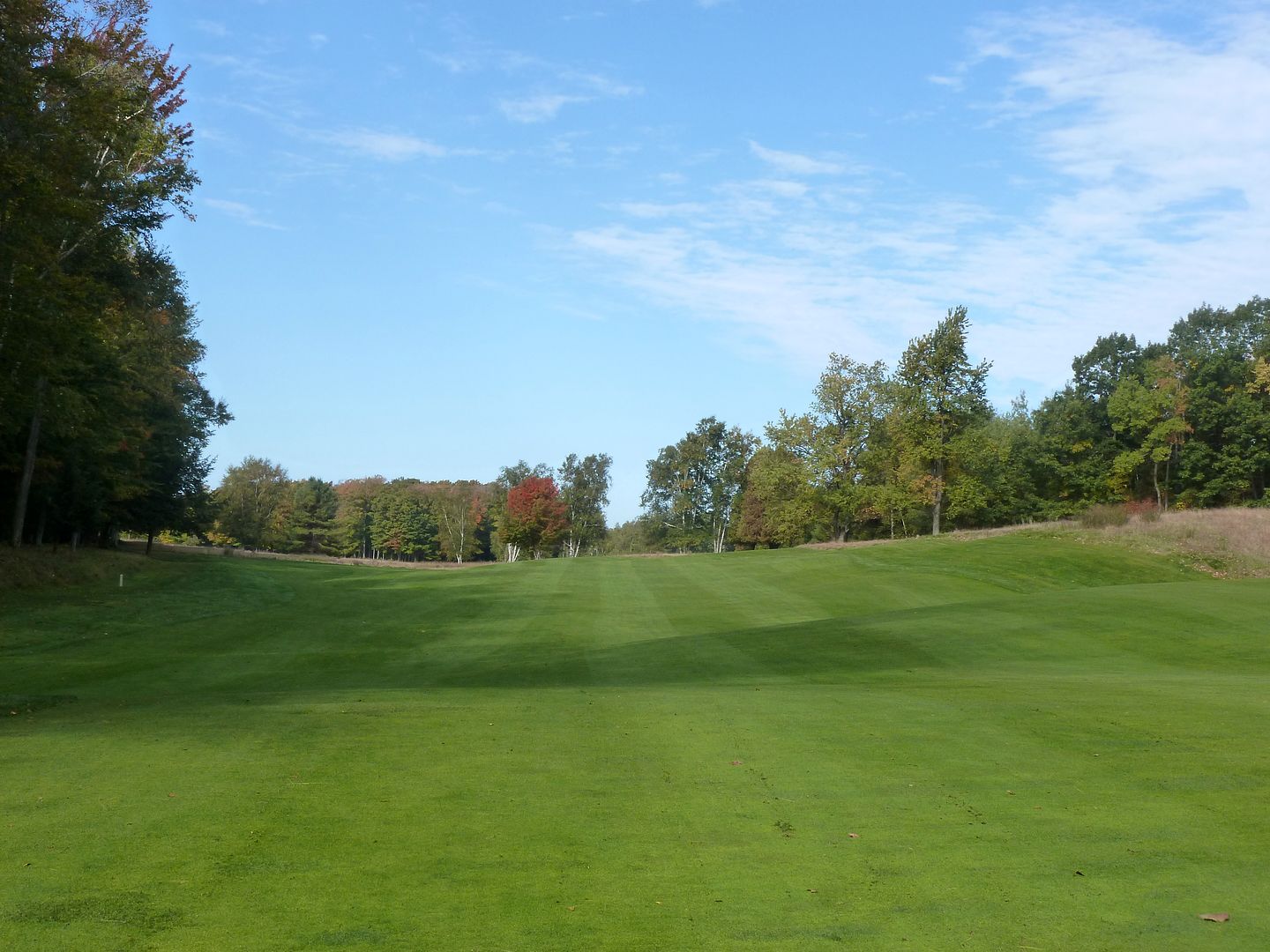 |
| 13th Fairway |
Tee shots that are too far right will either find this bunker, or the rough short of the bunker. Anything short of the bunker will be blocked-out by the tree.
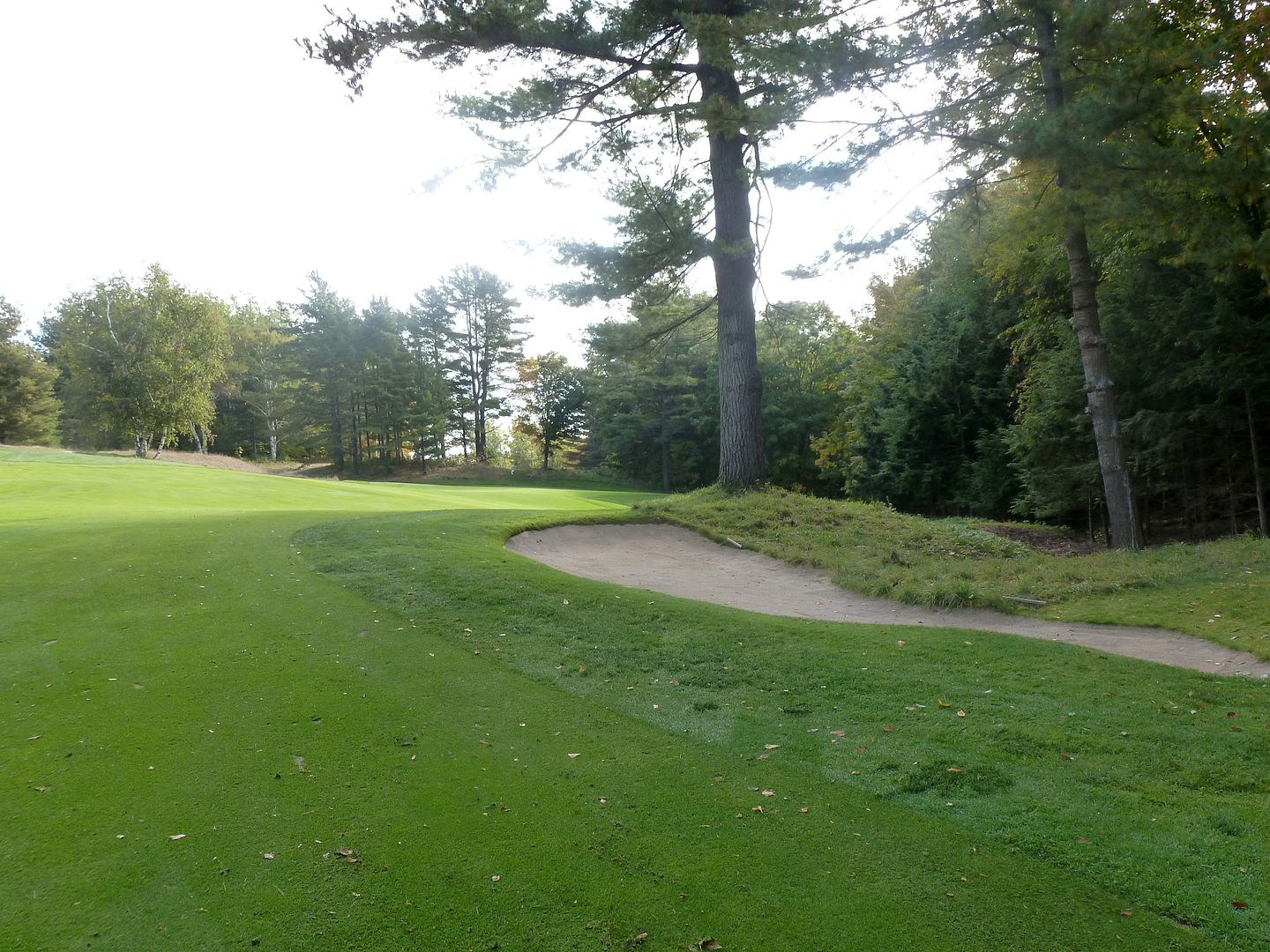 |
| 13th Approach from Right |
From the centre of the fairway, the approach to this green looks rather innocent. It isn't. The green is very small and its large slopes makes its effective area tiny.
 |
| 13th Short of Green |
This is one of the wildest greens I have ever seen. The front and back portions of the green are separated by a massive ridge. Find the wrong side of the ridge and there is no way (I don't think) to keep the ball on the green putting to the other side.
Playing to a front pin, Mr Muller recommends playing for the front edge of the green. A chip up the hill from short of the green is much preferred to being long.
Conversely, playing to a back pin requires a shot that is hit deep into the green. The back portion of the green slopes severely from left-to-right and many balls will collect at the back-right portion of the green leaving a (relatively) slow putt back to the hole.
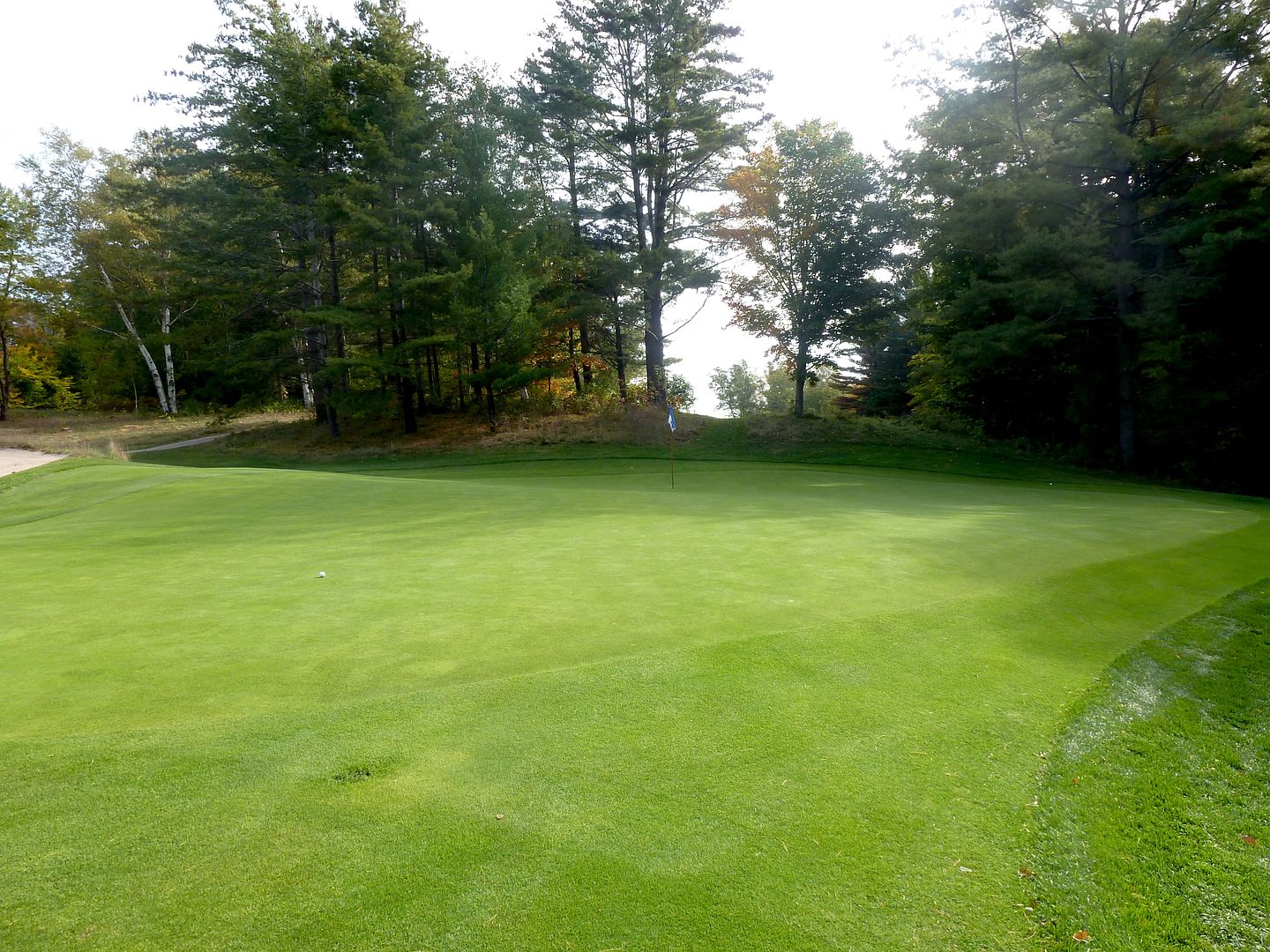 |
| 13th Green |
Approaches must be played precisely, especially to the front portion of the green. Anything just a tad right will kick with the general slope of the land and find these bunkers. Mr Muller says they "are easy to roll into and difficult to recover from."
 |
| 13th Greenside Bunkering |
Though it is not obvious from the fairway, this bunker left of the green is the absolute worst spot to be. There is no chance of finding the green from here.
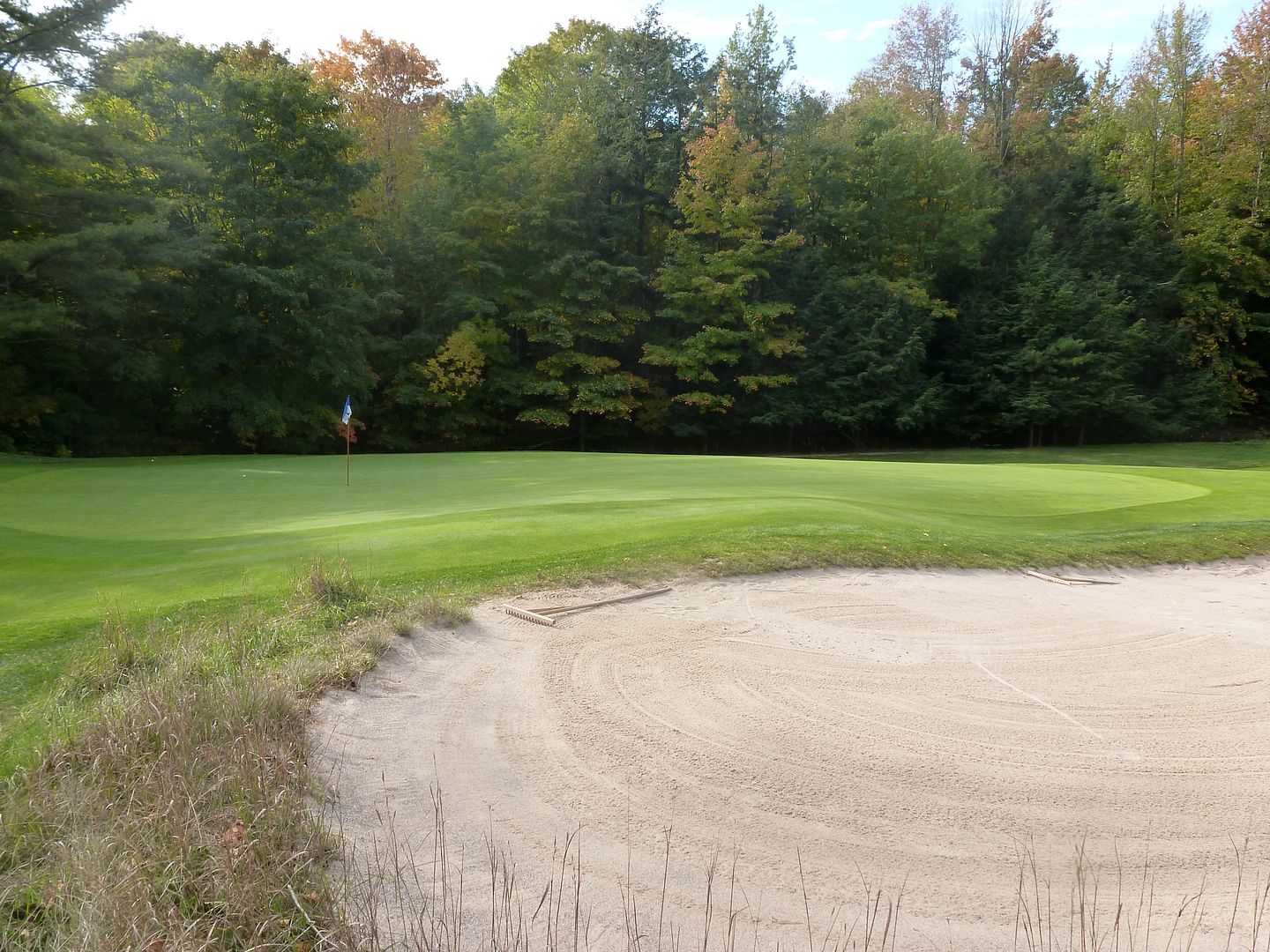 |
| 13th Green from Left |
This hole is really a potential round ruiner.
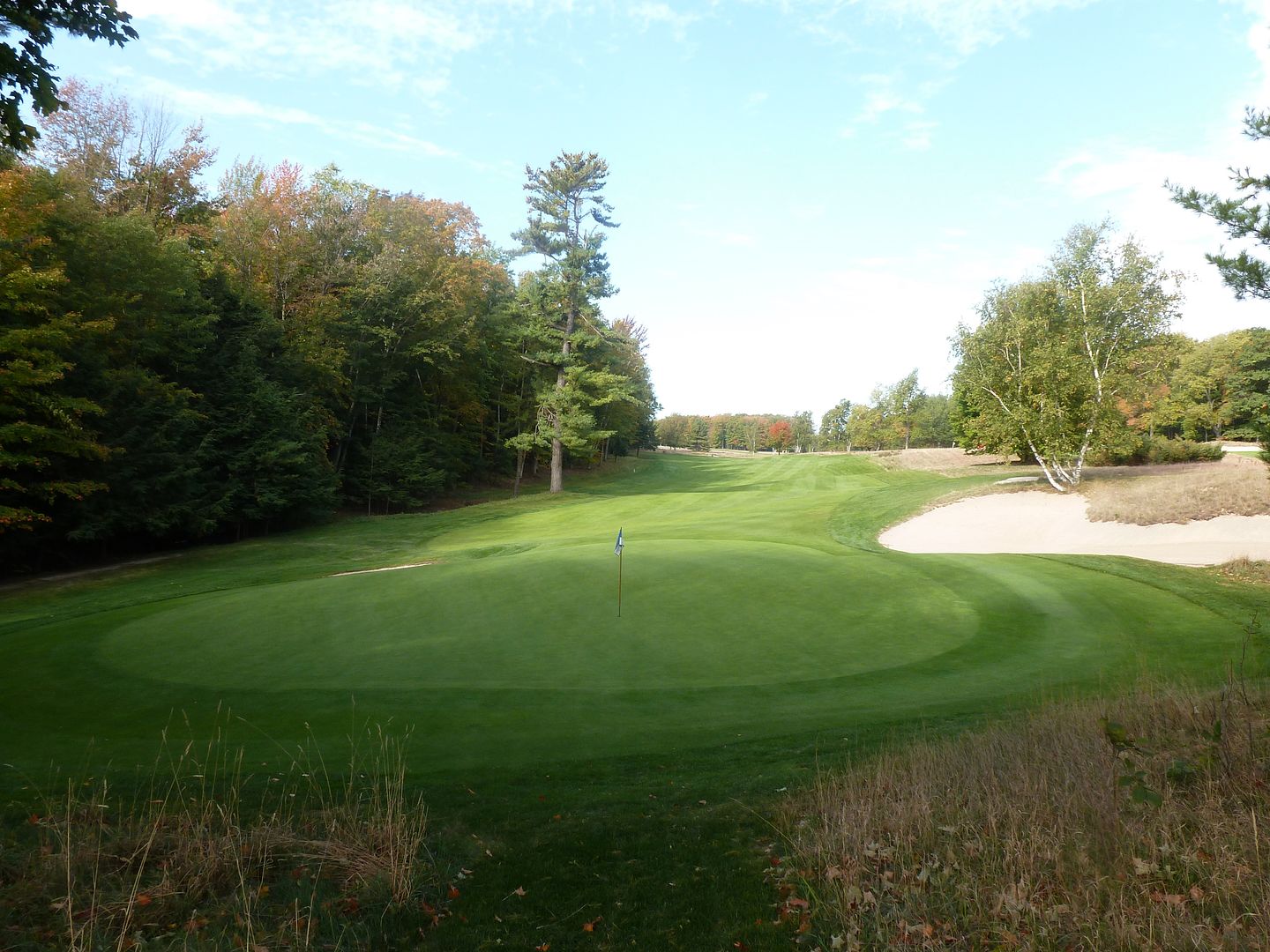 |
| 13th from Behind |
Hole 14: Par 3, 147 Yards
A straightforward short par-3 -- a nice respite after the brutish 13th. If you're going to miss, then miss short as the green slopes severely from back-to-front. The bunkering is a lesson in visual deception.
From the tee, one can see a couple of bunkers, but it is not until you get closer to the green that one sees how many bunkers there are and how deep they are.
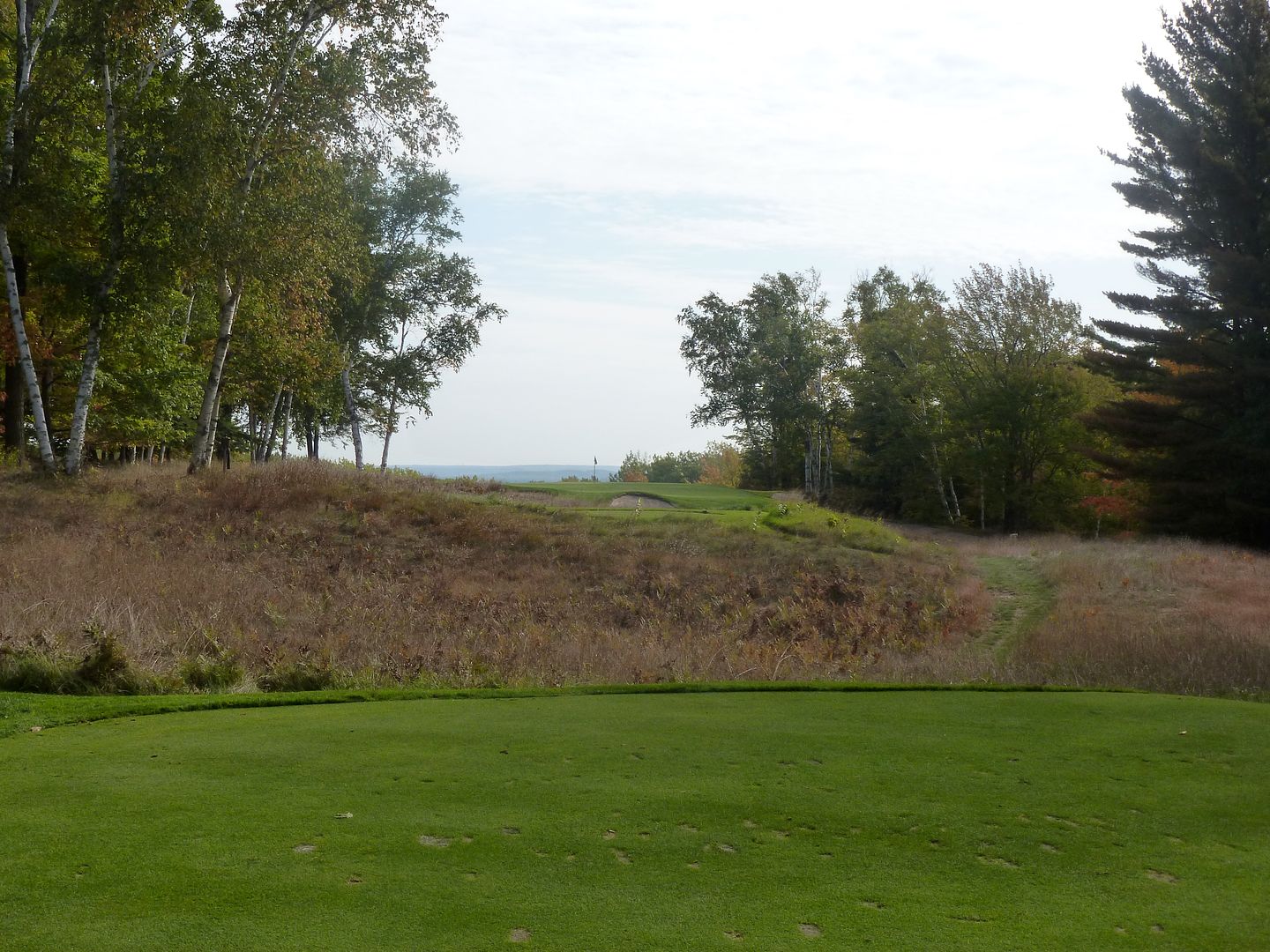 |
| 14th Back Tee |
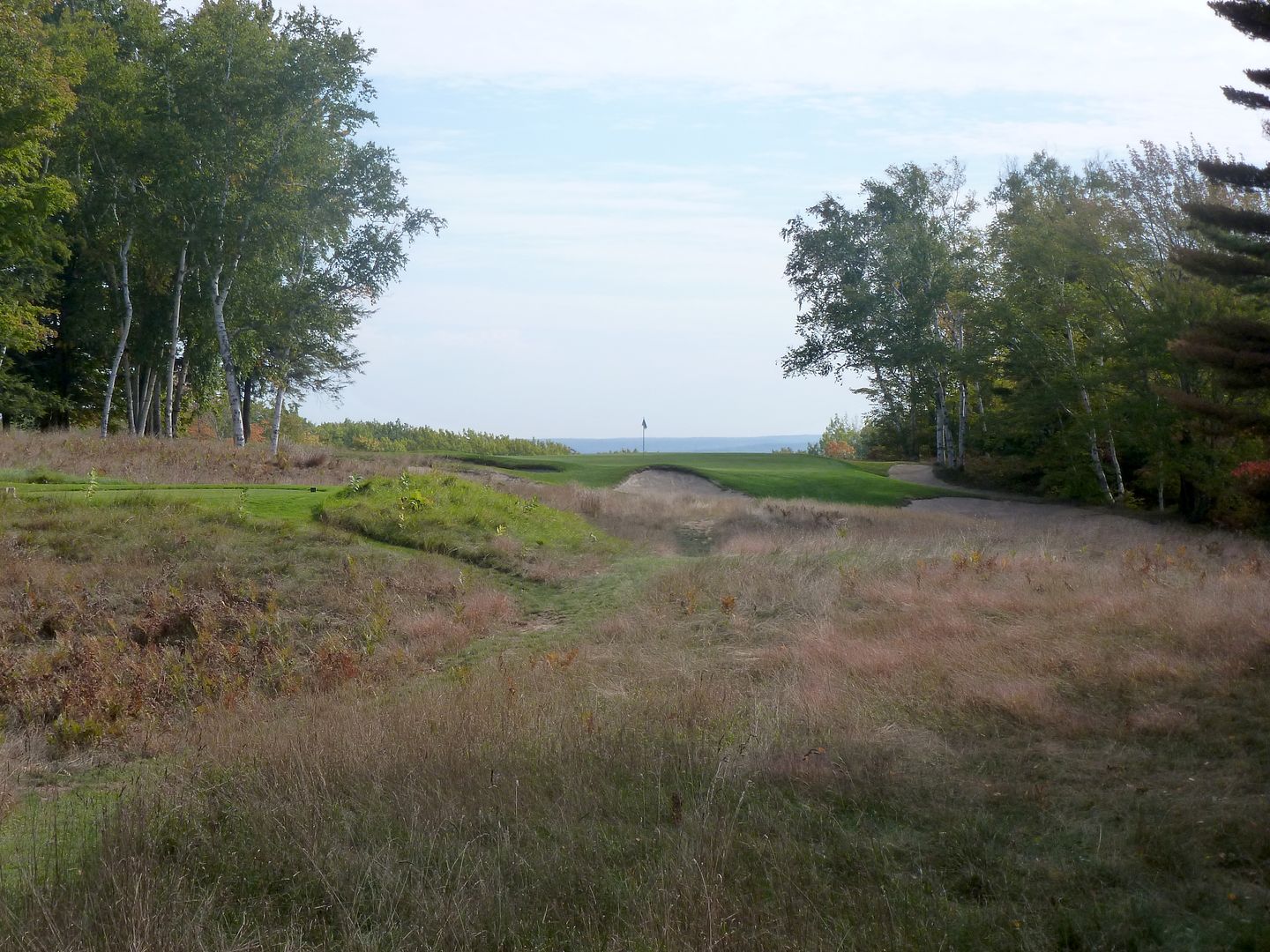 |
| 14th Middle Tee |
From 50 yards short of the green the bunkers short-left of the green come into view:
 |
| 14th Greenside Bunkering |
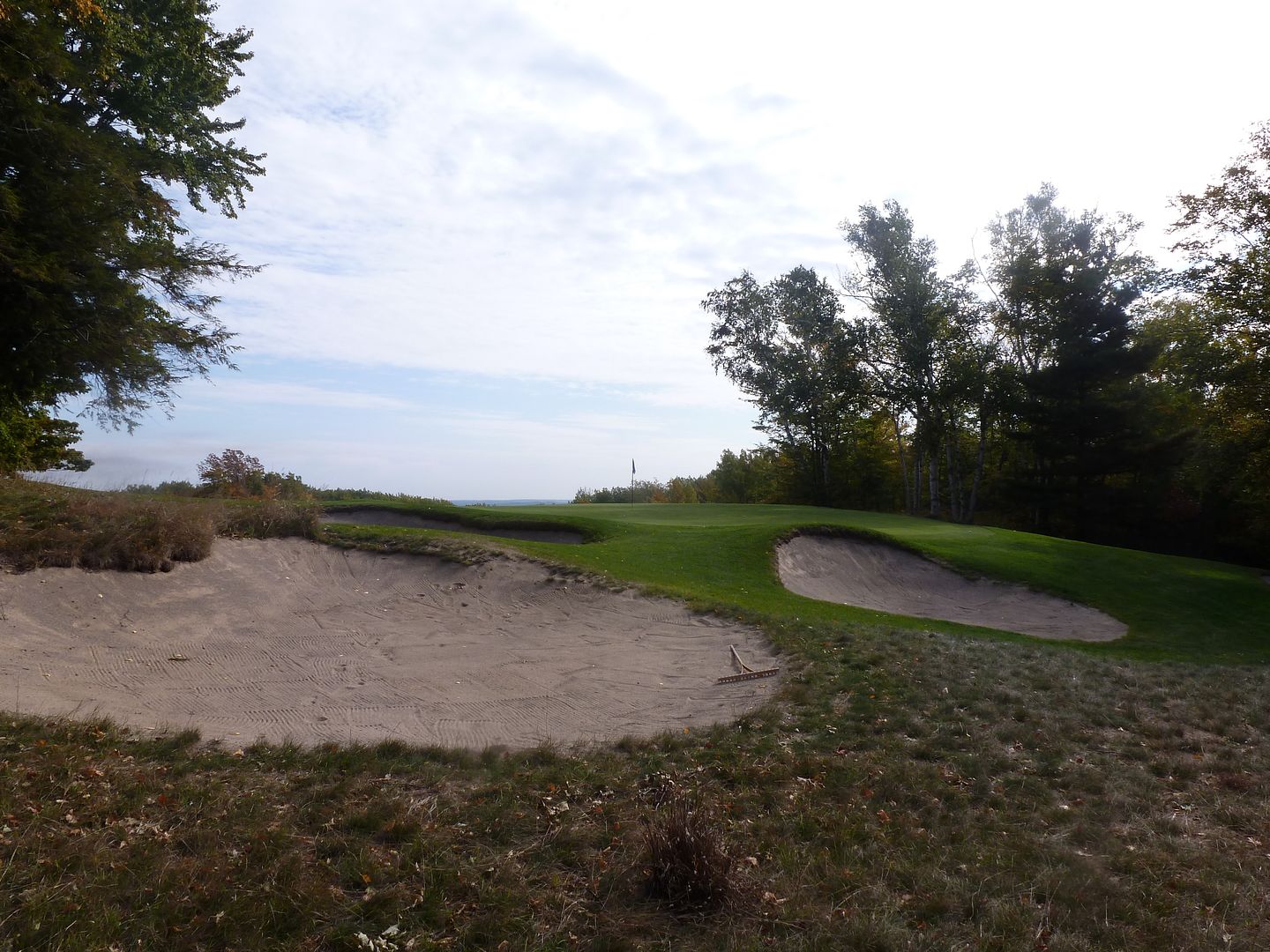 |
| Bunkering Short-Left of Green |
and short-right are very bad spots, requiring long carries to reach the putting surface.
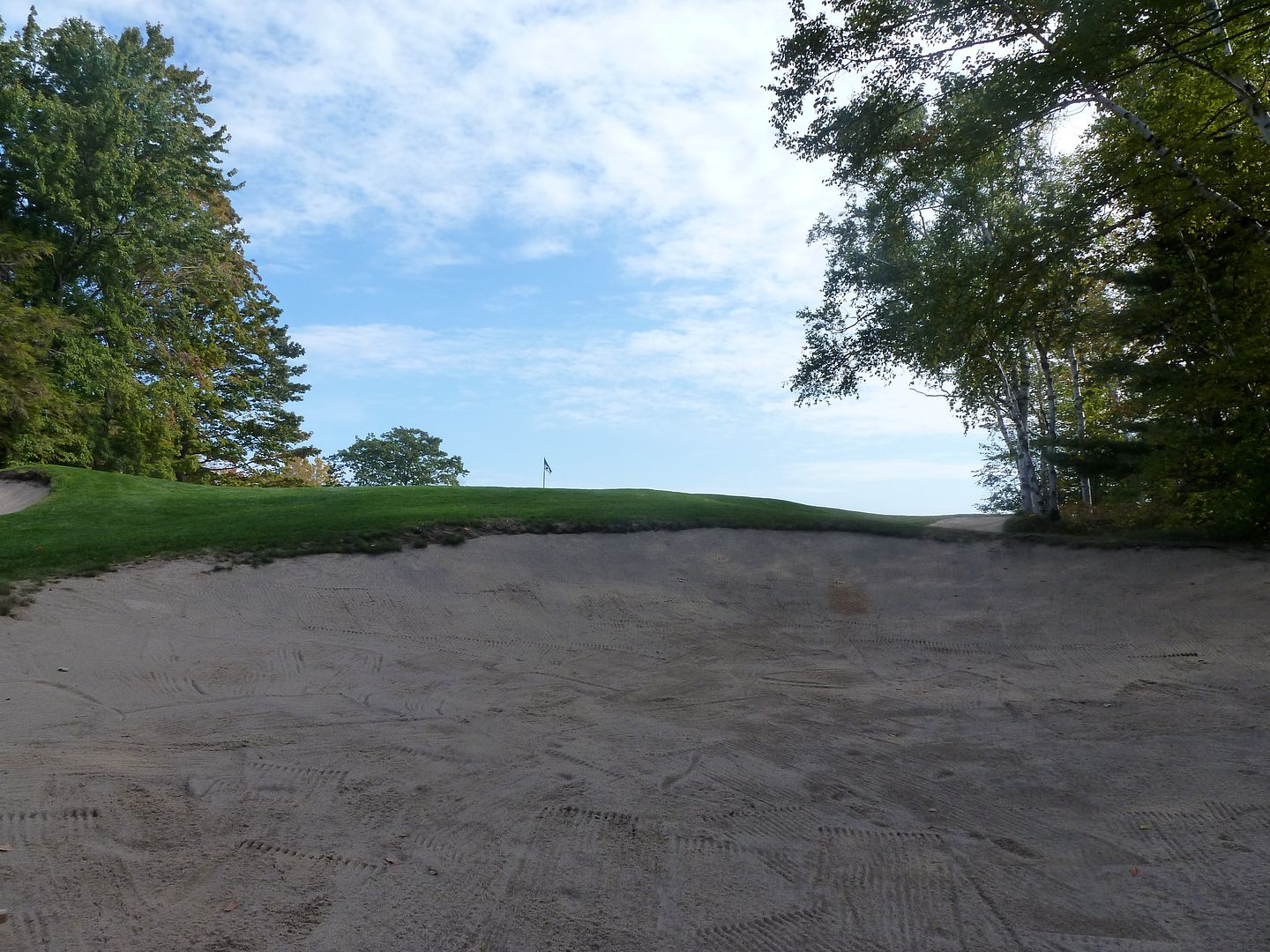 |
| Bunkering Short-Right of Green |
And what looked like a tiny bunker pin-high and right of the green, is actually a large and deep bunker. Another bad spot.
And the bunker that appeared to be short-left, actually extends the length of the green:
This pictures shows that the green crests at about the 3/4 point and the back 1/4 actually slopes away from the tee.
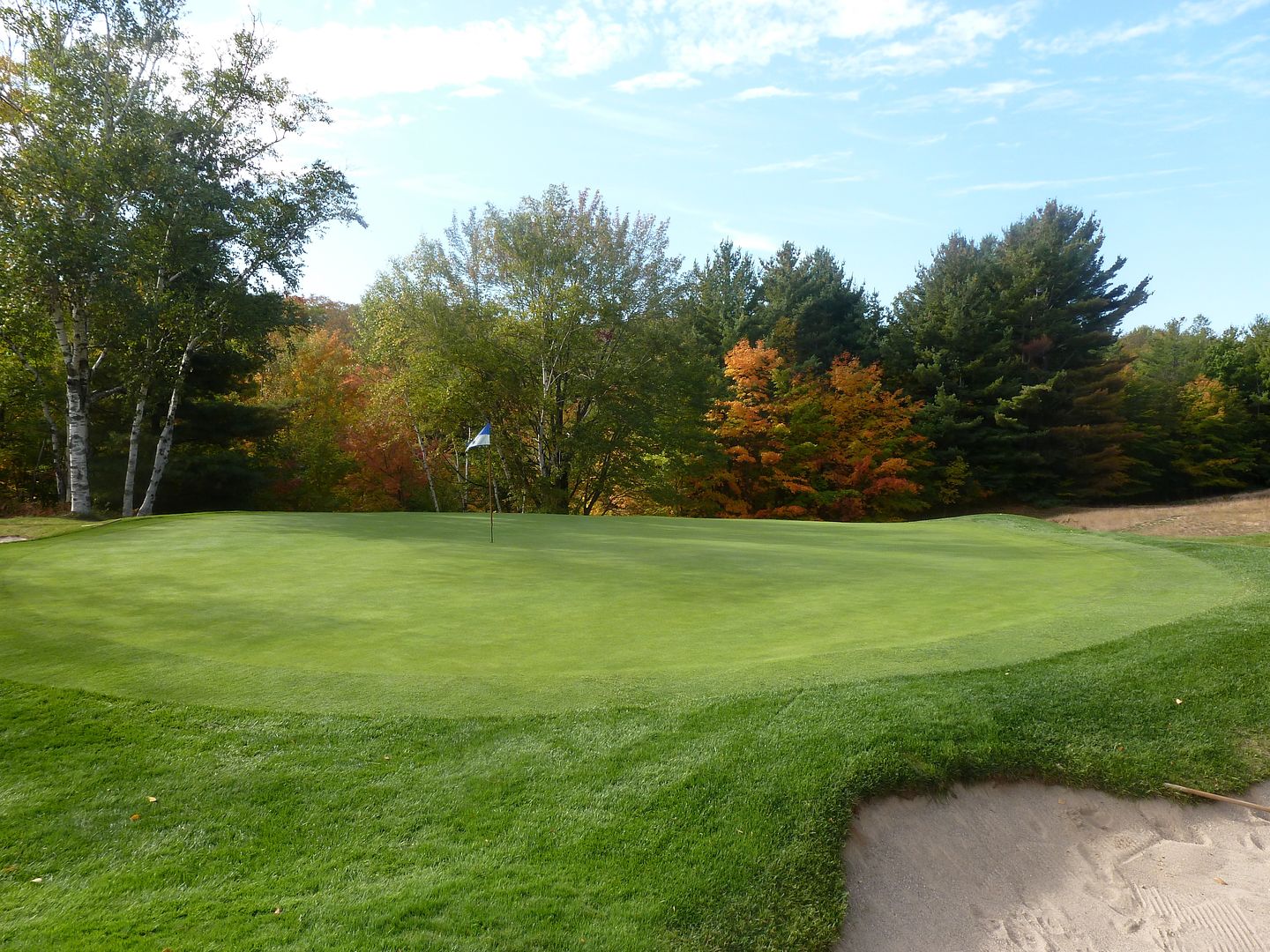 |
| 14th Green from Back-Left |
From just over the green it is obvious that the back 1/4 of the green slopes front-to-back. This means if the pin is at the back, the play is to be long, BUT if the pin is anywhere short of the crest and you go long, you are faced with a REALLY HARD recovery. You have to hit it hard enough to crest the hill, but soft enough that once it does, it doesn't run off the front of the green!
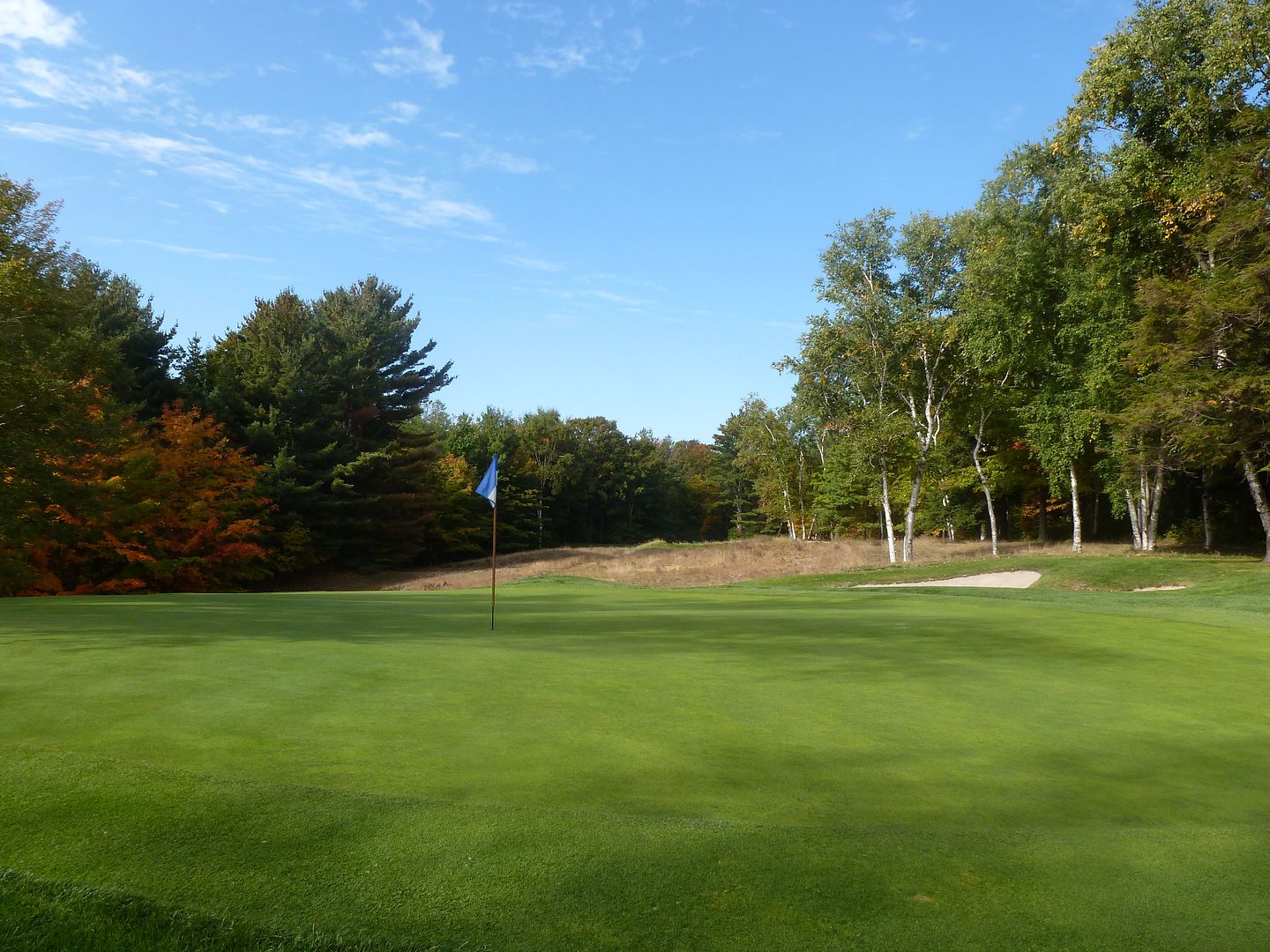 |
| 14th Green from Behind |
 |
| 14th Green from Path to 15th Tee |
Hole 15: Par 4, 327 Yards
I am likely in the minority, but this was my favorite hole on the course - another sleeper as it is not one of the 'famous' holes at Crystal Downs.
The ideal tee shot will carry a hill approximately 225 yards from the tee. As the hole plays into the wind, this may not be an option for many. A bit of visual deception here as the bunkers are actually a very long way from the tee (the one on the right is about 260, the one on the left is greenside(!)) and are not in play for most.
Shorter hitters have the choice of hitting their tee shots to the bottom of the hill, leaving a 125 yard but blind approach, or laying back to a flat spot leaving a visual of the pin but a 150 yard approach.
This tee shot has something to keep all golfers -- short-knockers or bombers, high-cappers or scratch -- interested.
 |
| 15th Tee |
From the start of the fairway. The fairway is one of the most rolling on the course. Definitely grounds for golf.
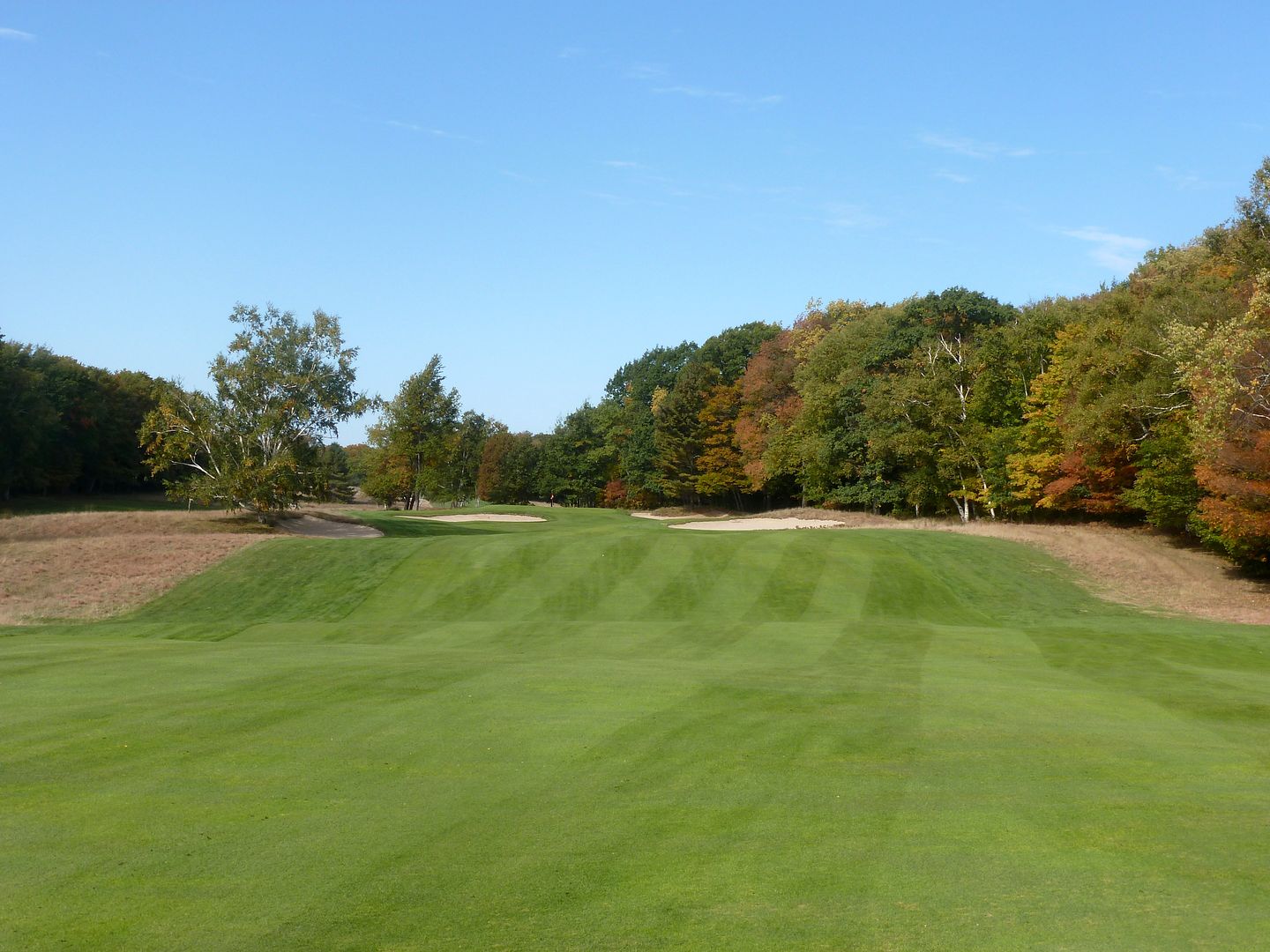 |
| 15th Fairway |
The view from a layed-up tee shot. Pin is in view but this is a difficult, uphill and into-the-wind 150 yard approach.
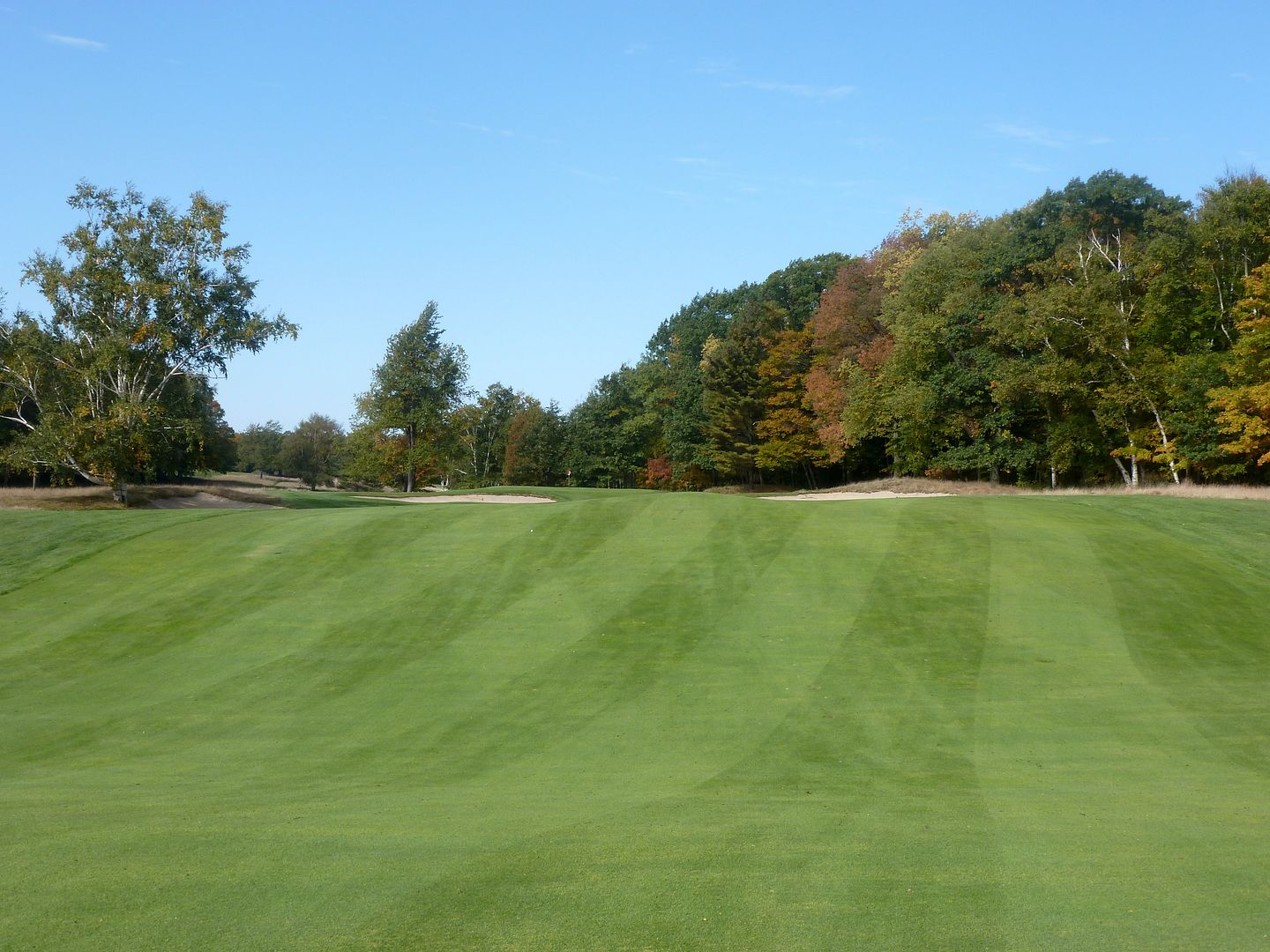 |
| Approach from 150 |
The view from a tee shot that fails to crest the hill. 125 yards and blind.
Also notice the 'peak' in the fairway. This is SO COOL. 'Fairness' out the window, tee shots hit dead in the middle of the fairway but just carrying to the top of the hill are subject to a rub of the green bounce which could knock them 50 yards forward, or sideways into the rough/bunker. I wonder if this was natural or done on purpose or just evolved over time?
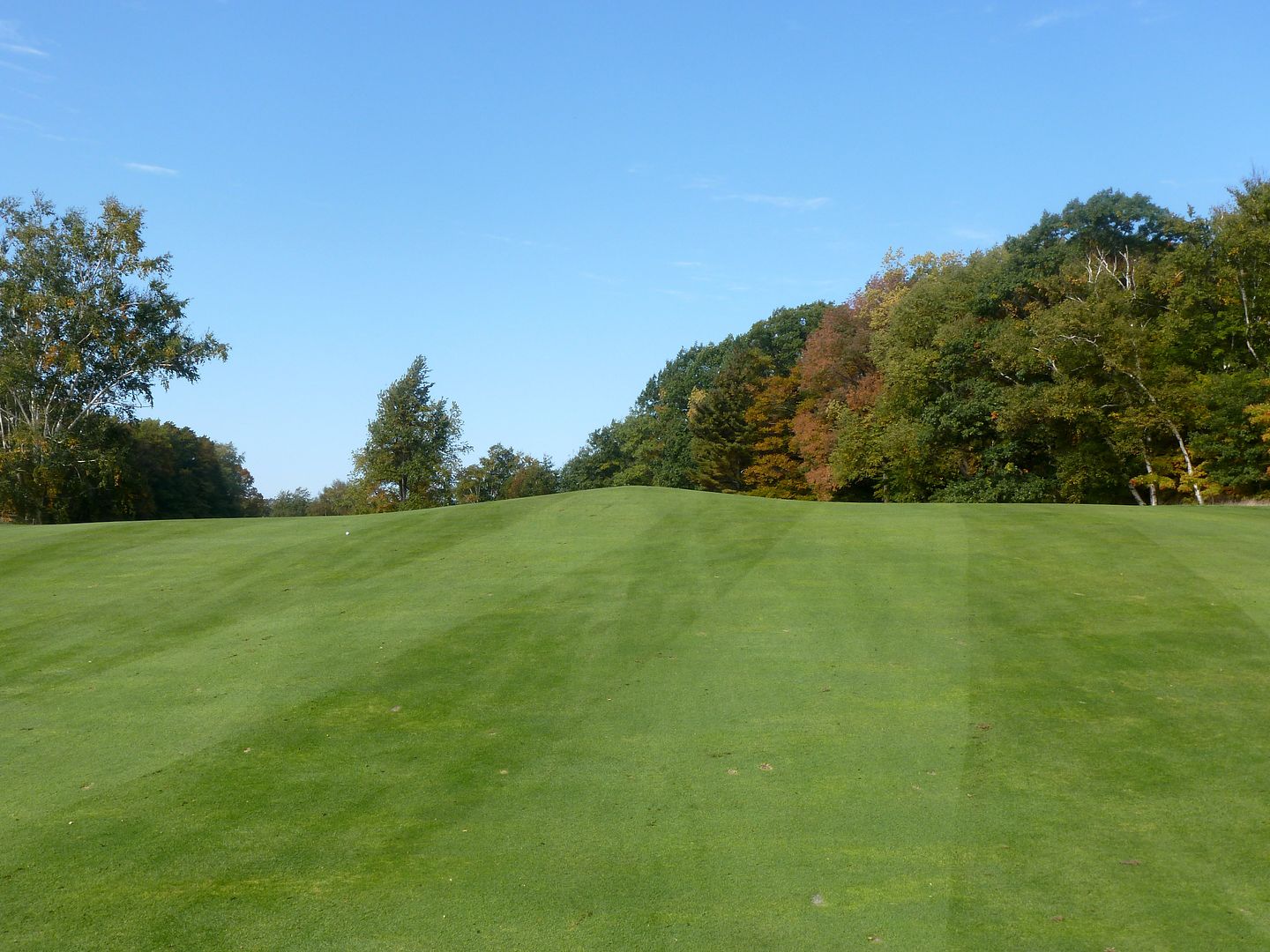 |
| Approach from 125 |
 |
| Approach from 100 |
This green is tiny and subtly shaped like an upside-down saucer. Shots landing near the edge of the green will be repelled.
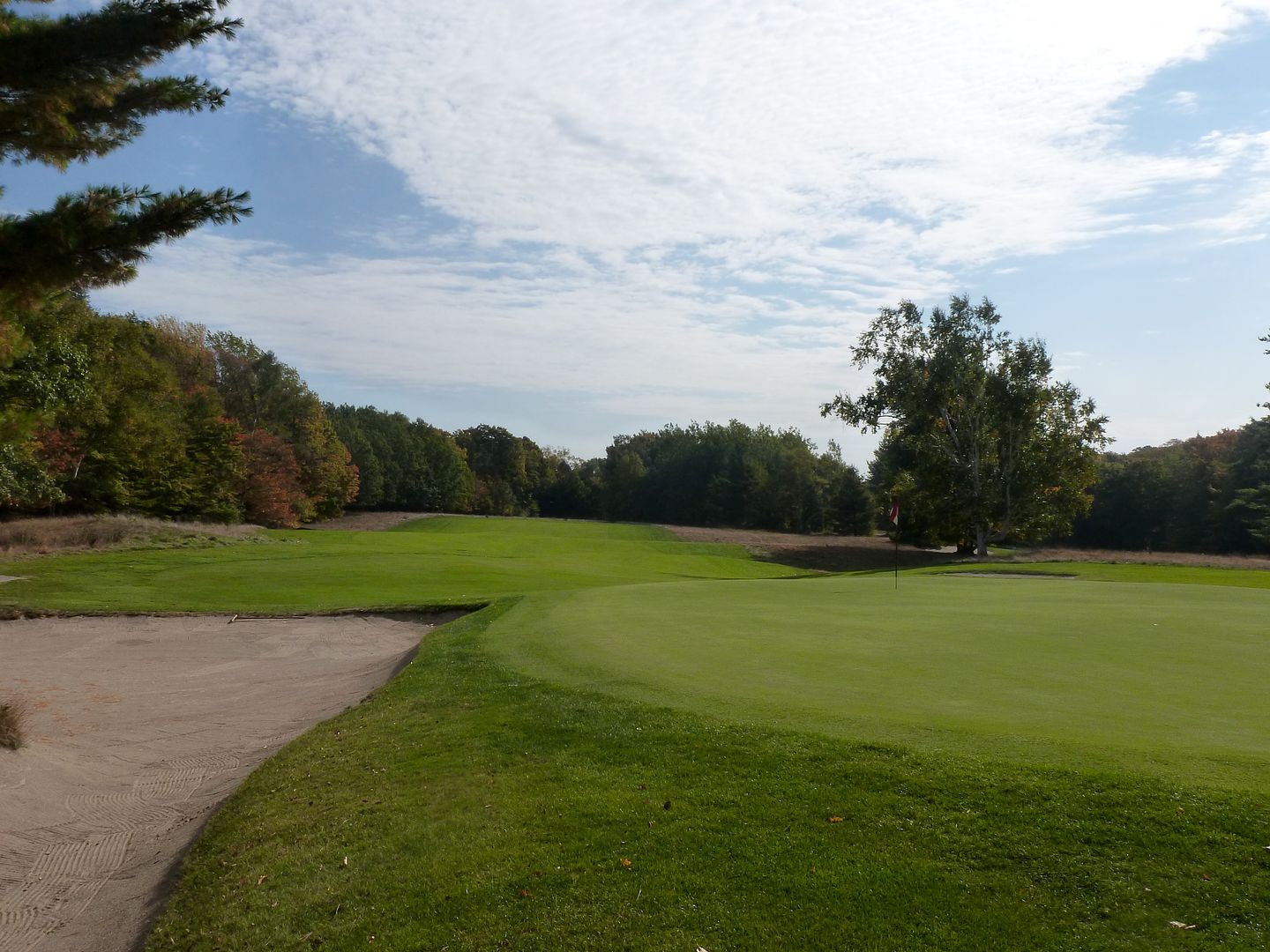 |
| 15th from Behind |
Hole 16: Par 5, 588 Yards
A very long par-5 that moves gently to the left. It plays uphill for the first 400 yards (!) before cresting a hill and the final 200 yards play downhill.
In my mind the hole is very plain until you get to the green, which is very sloping. The first two shots are very wide and require well-struck shots, especially since this holes generally plays into the wind. I know Tom Doak has defended the hole in the past -- I believe the logic was the length of the hole adds pressure to the golfer to hit two very good shots. He knows that any mis-hit means he probably won't reach the green in regulation and as a result, this is no simple hole.
There is not a lot happening on the tee shot. It is plenty wide. I don't think anyone can cut the corner at all. The objective is just to hit a solid tee shot in the fairway. Anything less than that and reaching this green in 3 is very difficult.
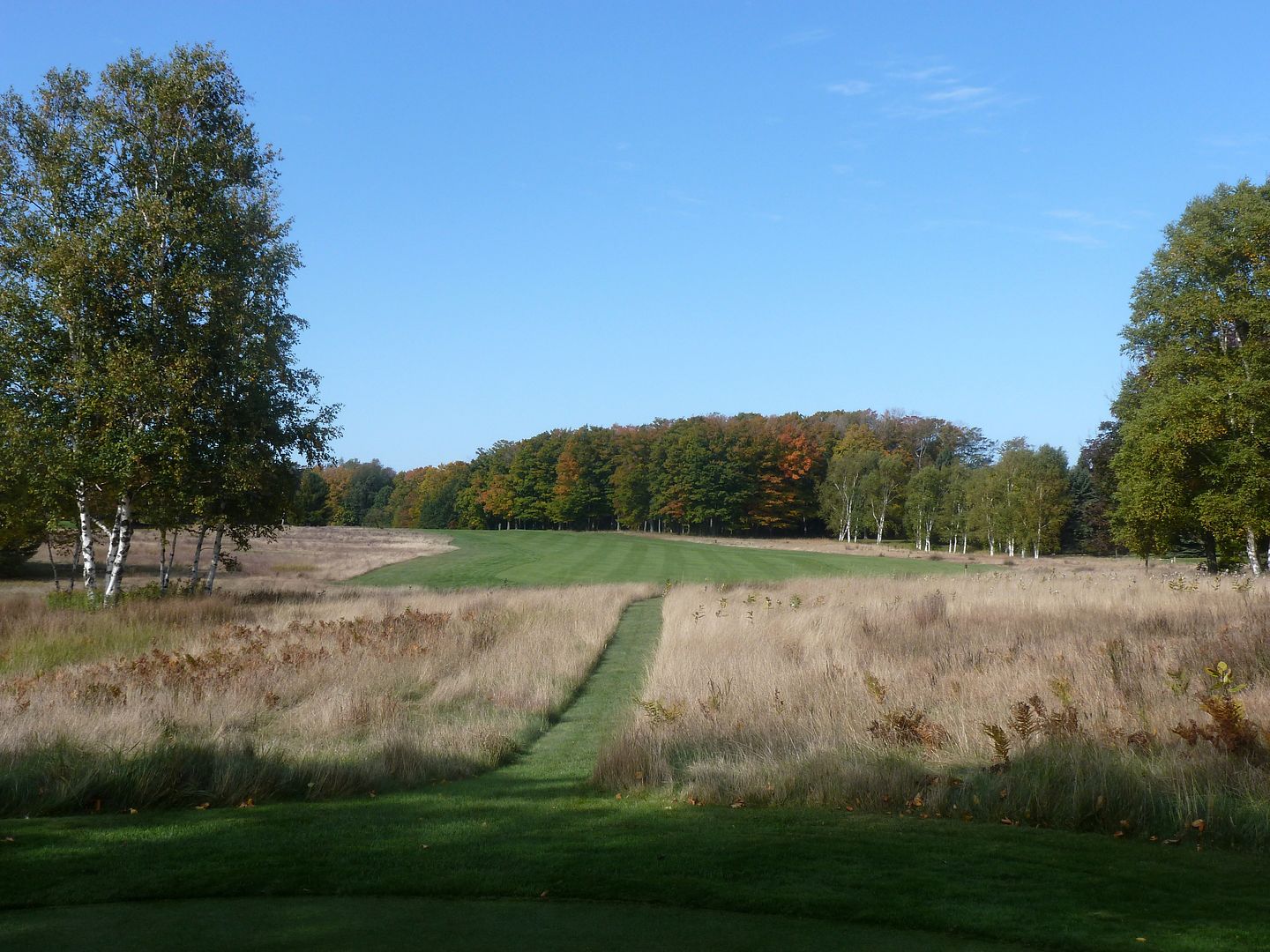 |
| 16th Tee |
Like the tee shot, there is not a lot happening on the second shot. One is faced with a blind/uphill shot over the crest of the hill. One of those "I guess I'll aim somewhere up there" type shots.
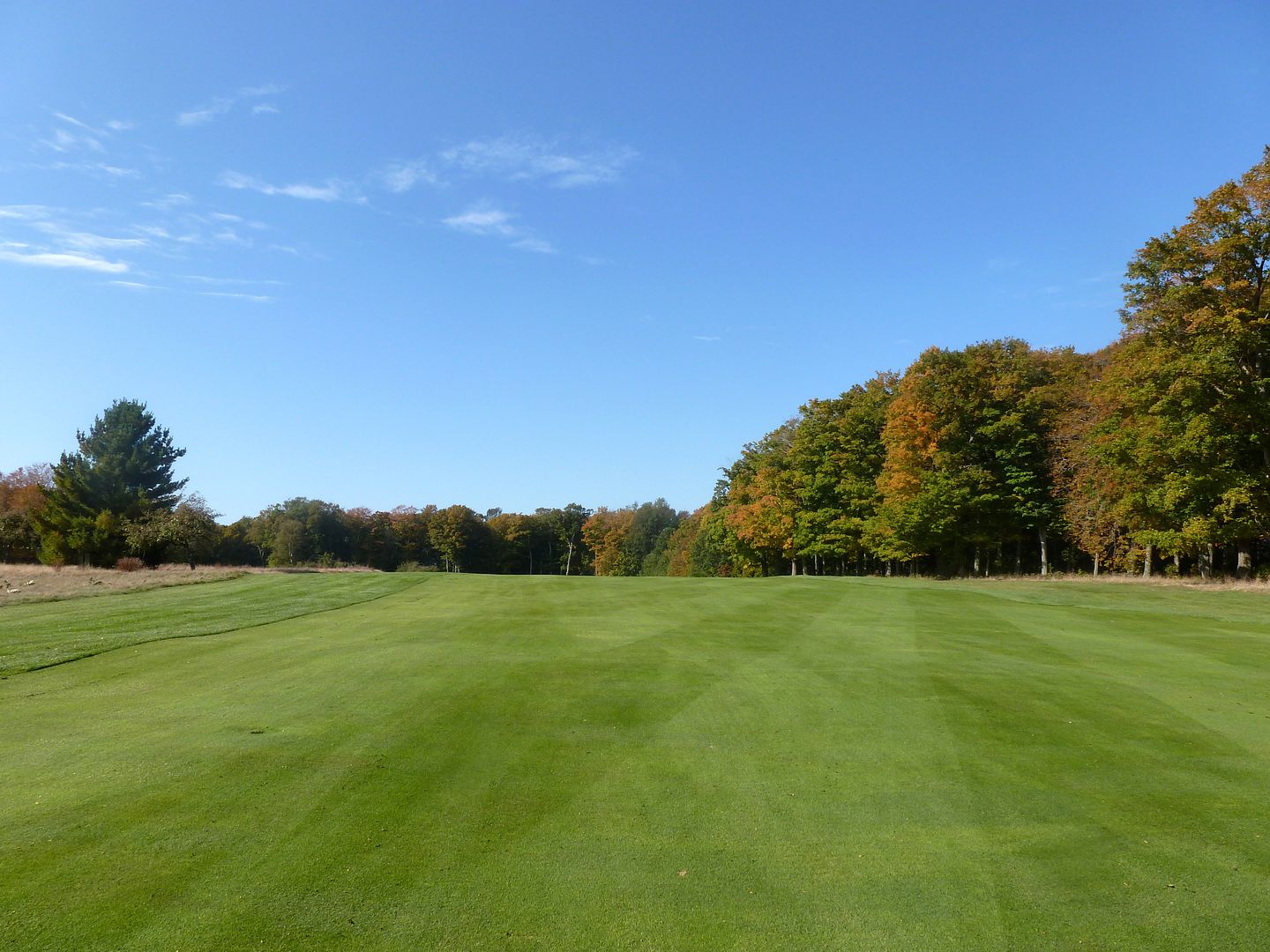 |
| 16th Second Shot |
From just over 200 yards out the green starts to come into view. This is the minimum objective for the first two shots.
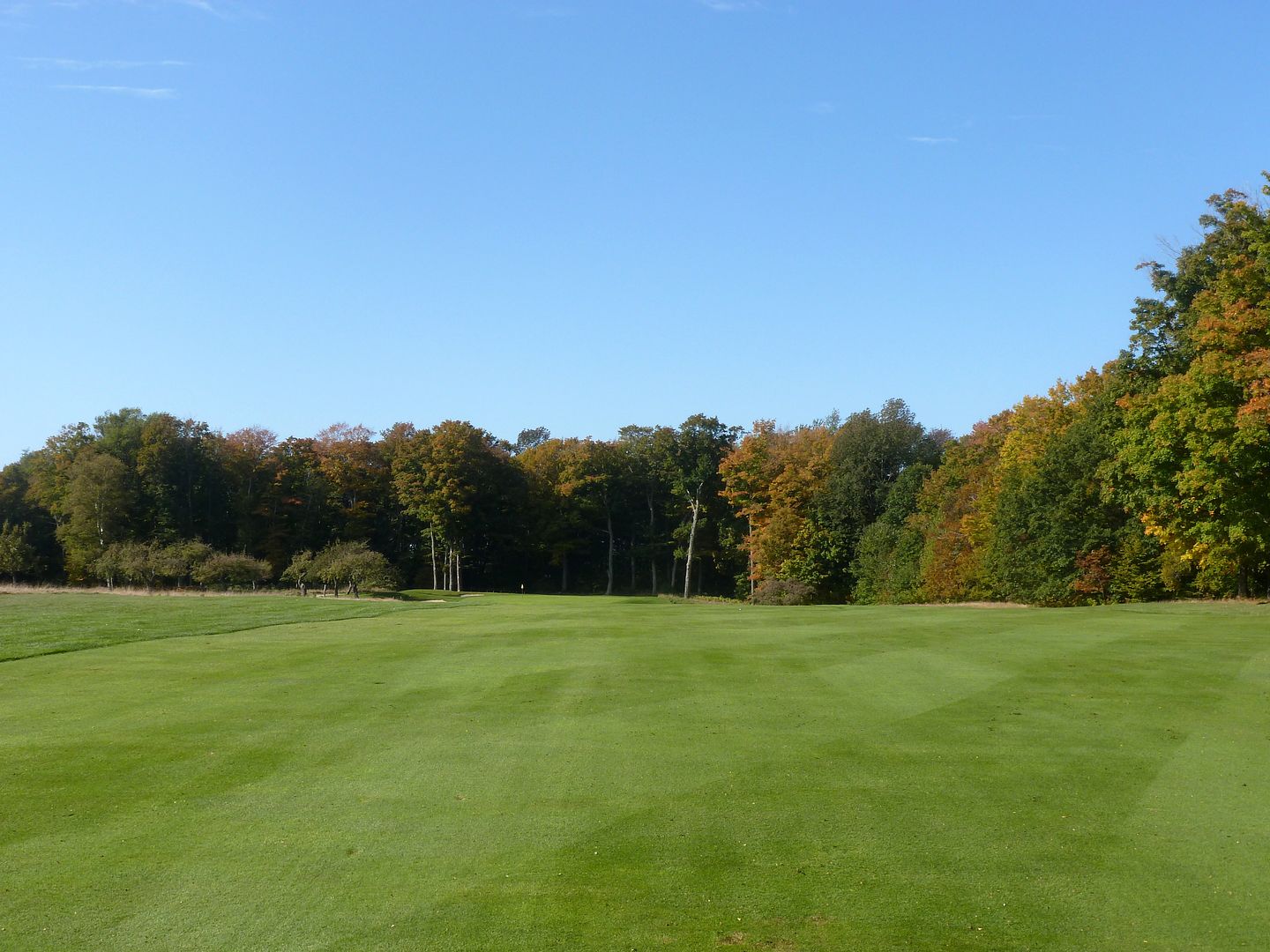 |
| Approach from 200 |
 |
| Approach from 150 |
I loved the bunkering on this hole. The green slopes severely from back-left to front-right and the depth of the bunkers reflect this. The bunkers on the left have almost no lip allowing players who miss on the wrong side the opportunity to perhaps putt out of the bunkers. Players that miss right and will be pitching back into the slope of the green have to contend with a very high lip.
 |
| Approach from 100 |
This picture from over the green shows the severity of the slope toward the front-right portion of the green. Missing long is very bad here.
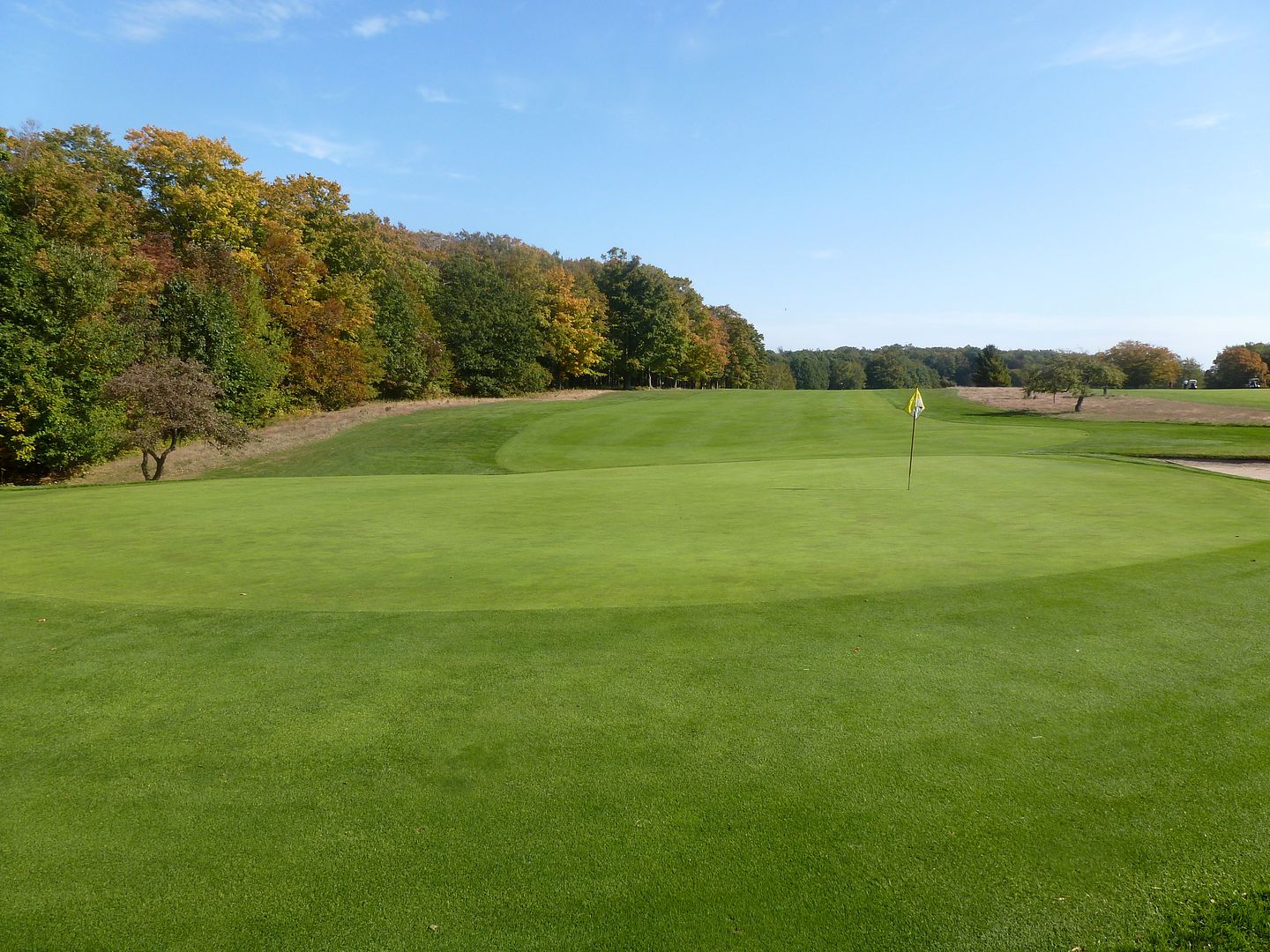 |
| 16th from Behind |
Hole 17: Par 4, 311 Yards
It is appropriate to quote the course guide in its entirety for this hole:
Three hundred and eleven of the most frightening yards in golf. A 200 yard tee shot leave a 9 iron or wedge. A 180 yard tee shot leaves an unplayable lie. A 215 yard tee shot leaves a blind, uphill, difficult pitch to the green. Now, if the wind is helping, you could drive the green. The green side bunkers mean bogie or worse, and you don't want to putt off the front of this green, because it won't stop rolling for 50 yards.
YIKES.
The tee shot has so many options. Most players will aim for the tiny landing area 200 yards off the tee. Those unable to make the 190 yard carry are forced to lay-up to the (not seen) fairway short of the hill or be faced with an impossible uphill stance from rough. More aggressive players can try for a slightly longer tee ball up the left, leaving a 50-100 semi-blind pitch up the hill. The most aggressive of players can try to challenge the right side of the severely canted fairway and leave a chip shot up to the green.
 |
| 17th Tee |
From just short of the fairway the blind, lower portion of the fairway can be seen.
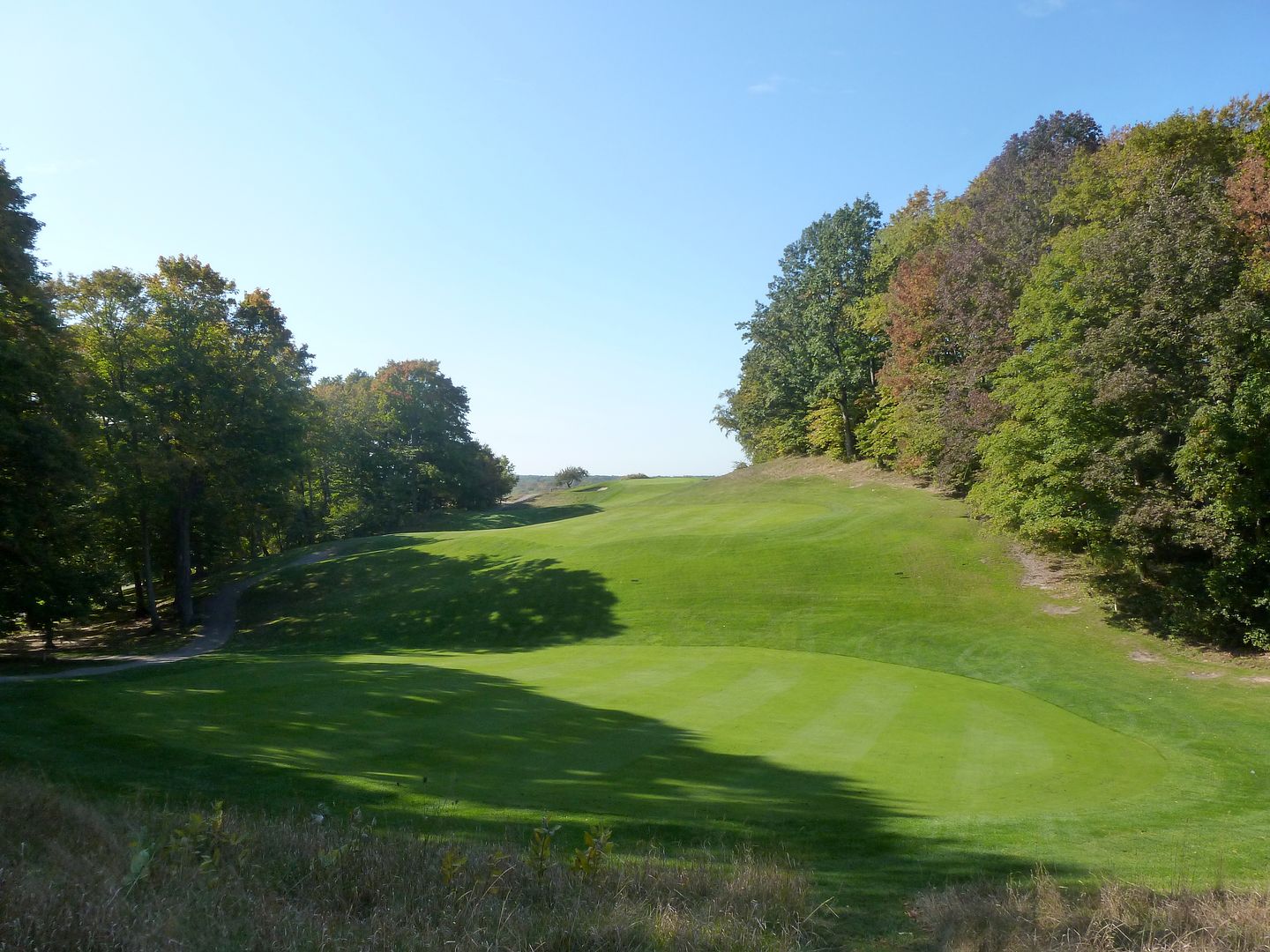 |
| 17th Short of Fairway |
The approach from the lower fairway. Hardly appealing.
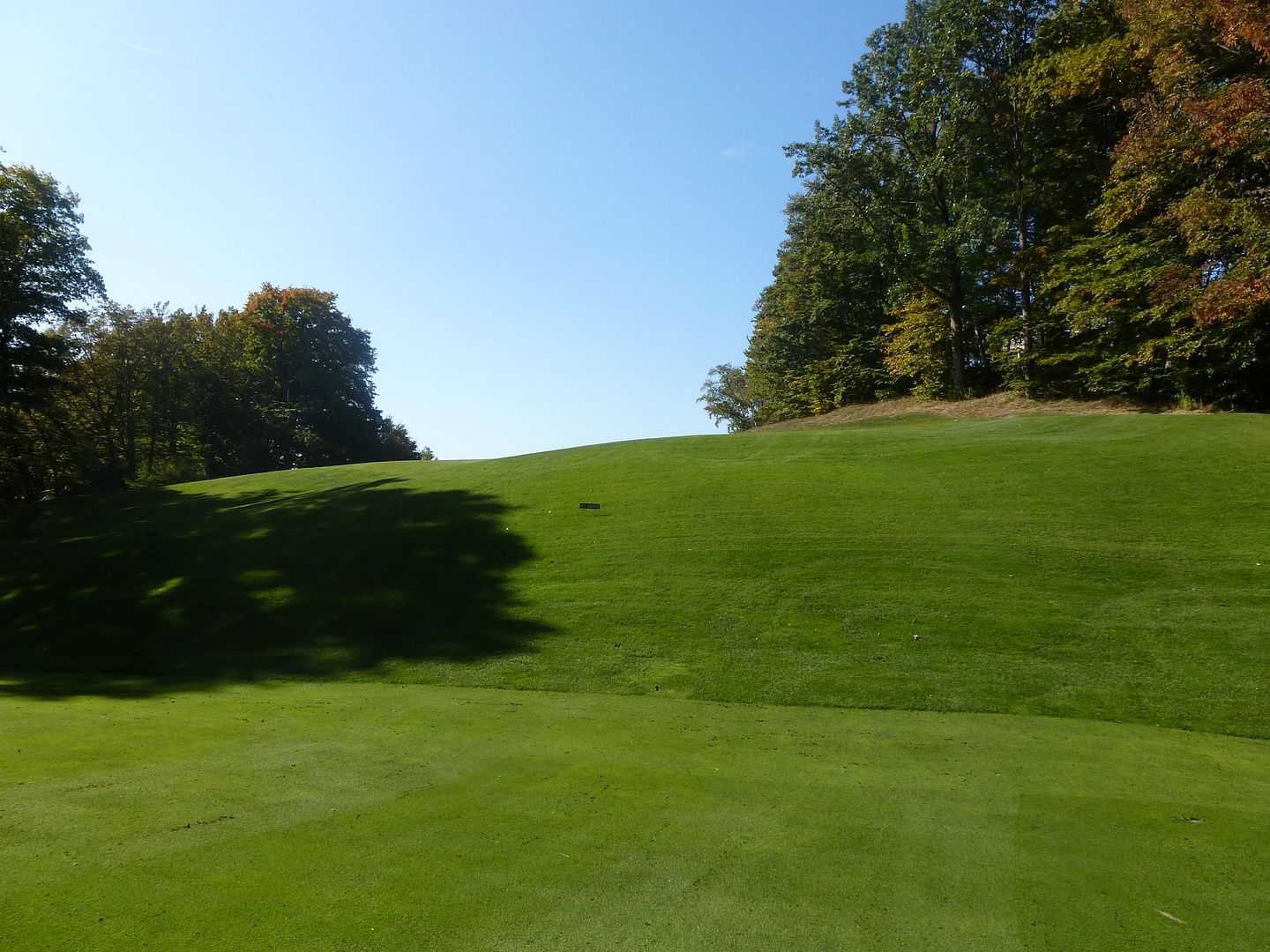 |
| Approach from Lower Fairway |
The approach from the upper portion of the fairway. Note the severe slope of the fairway making it very difficult to have a tee shot stay in this portion of the fairway.
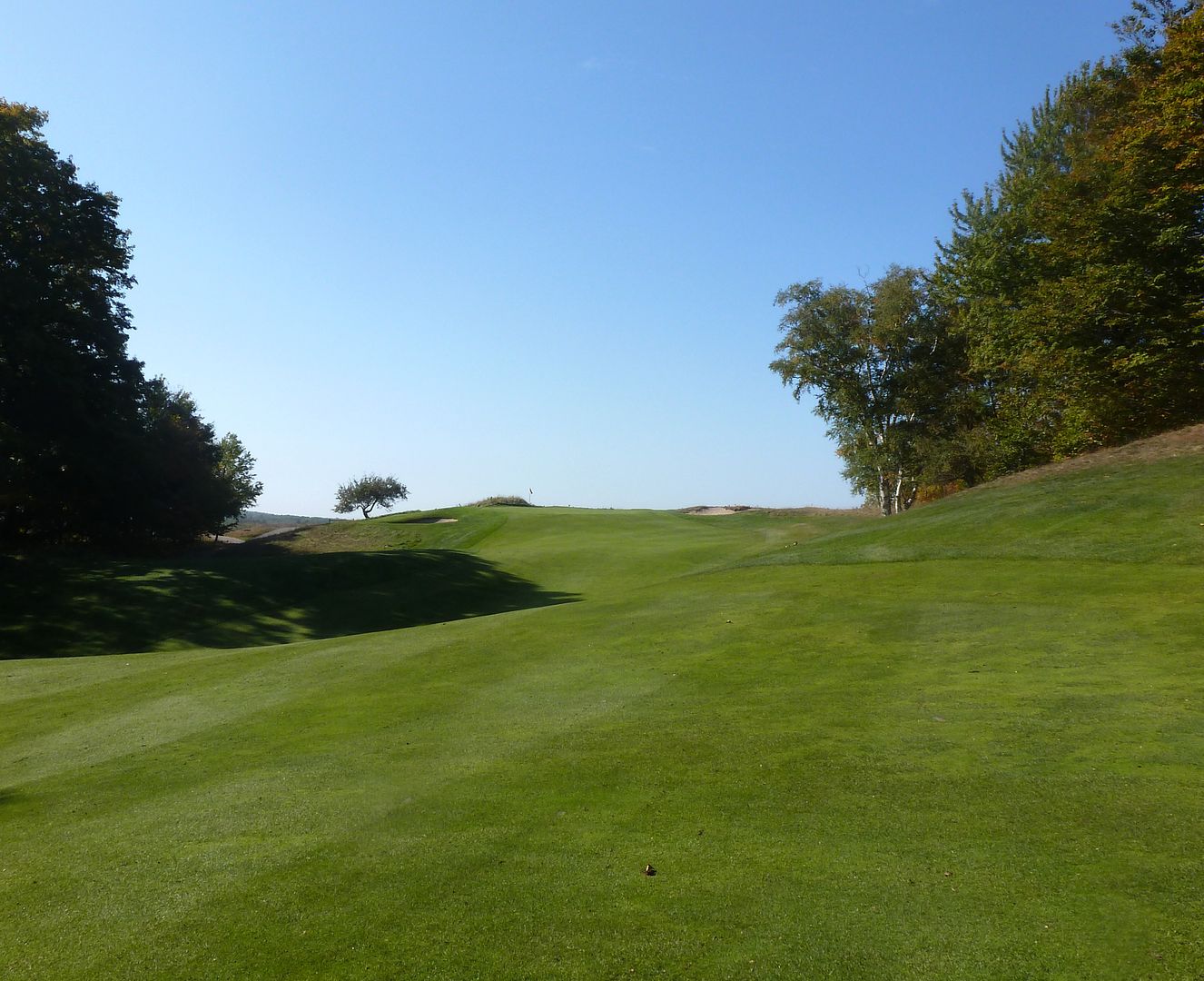 |
| Approach from Start of Upper Fairway |
After a perfect tee shot. Based on the pattern of divots many tee shots end-up here. But, if they crest the hill...
Tee shots will end-up here. I'm fairly certain that qualifies as a skyline green.
 |
| Approach from Left |
Aggressive (and perfectly placed) tee shots will end here. Still very intimidating.
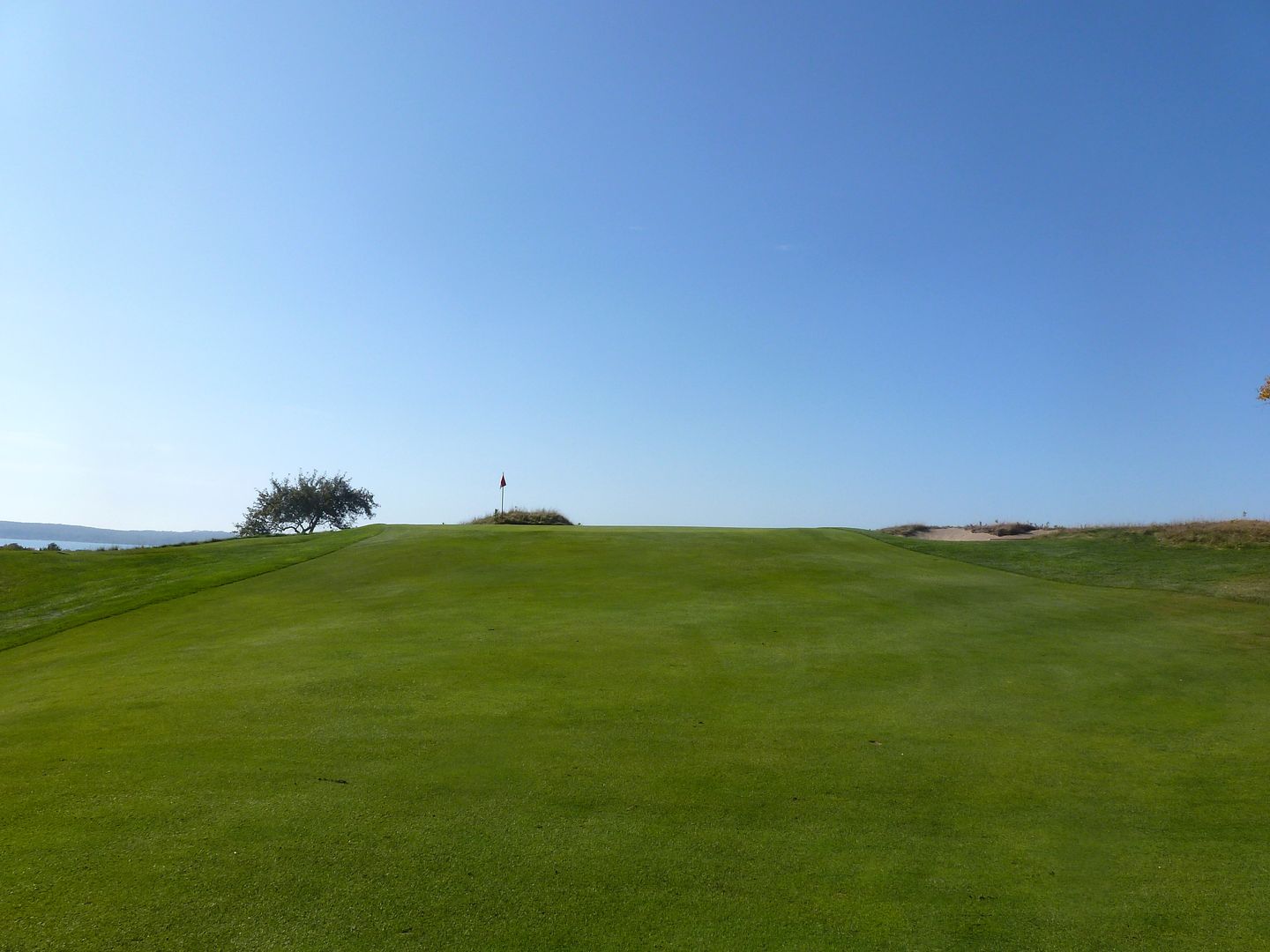 |
| Short of 17th Green |
From right of the green side bunkers the tilt of the green from back-right to front-left is obvious.
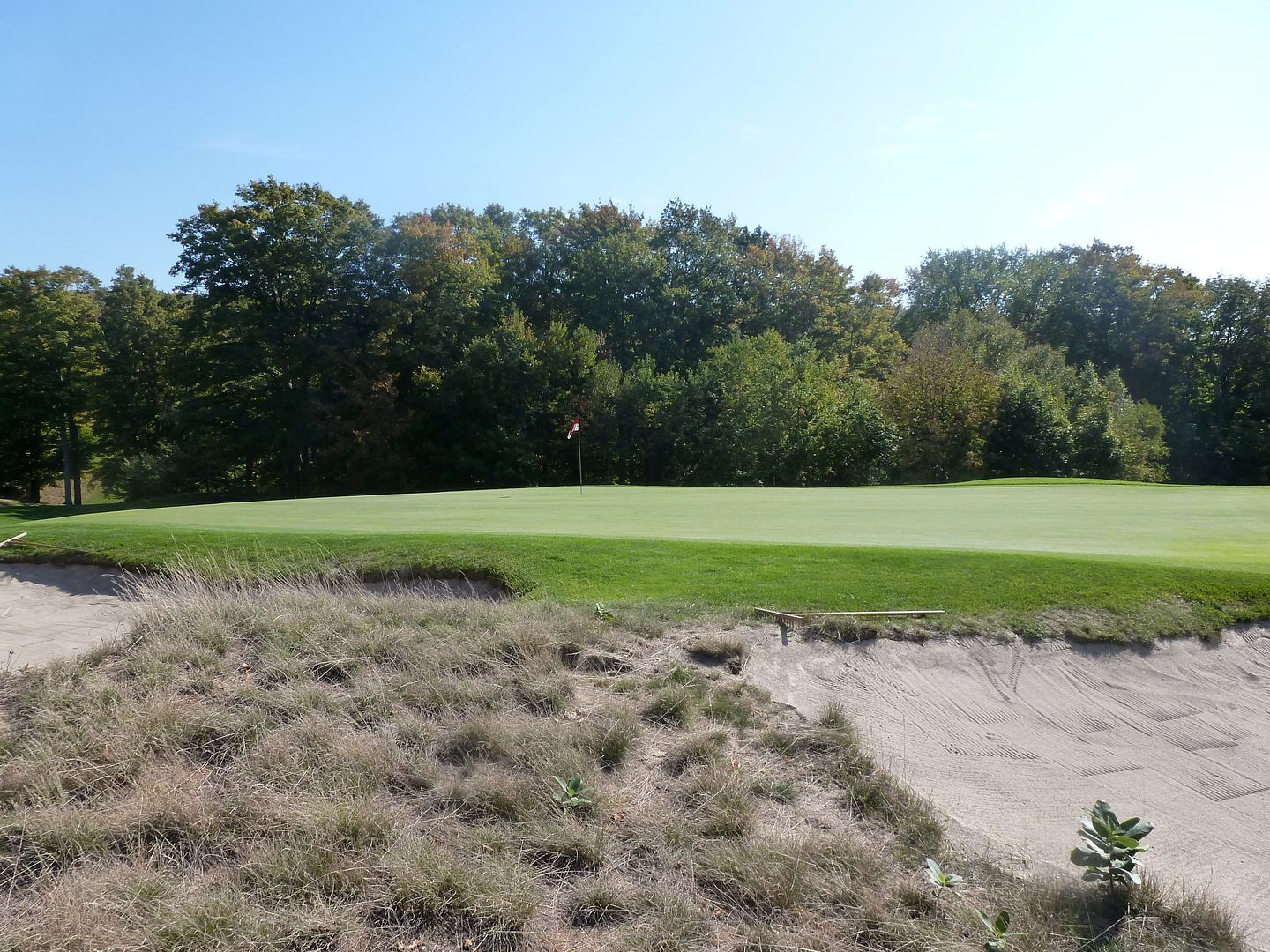 |
| Green from Right |
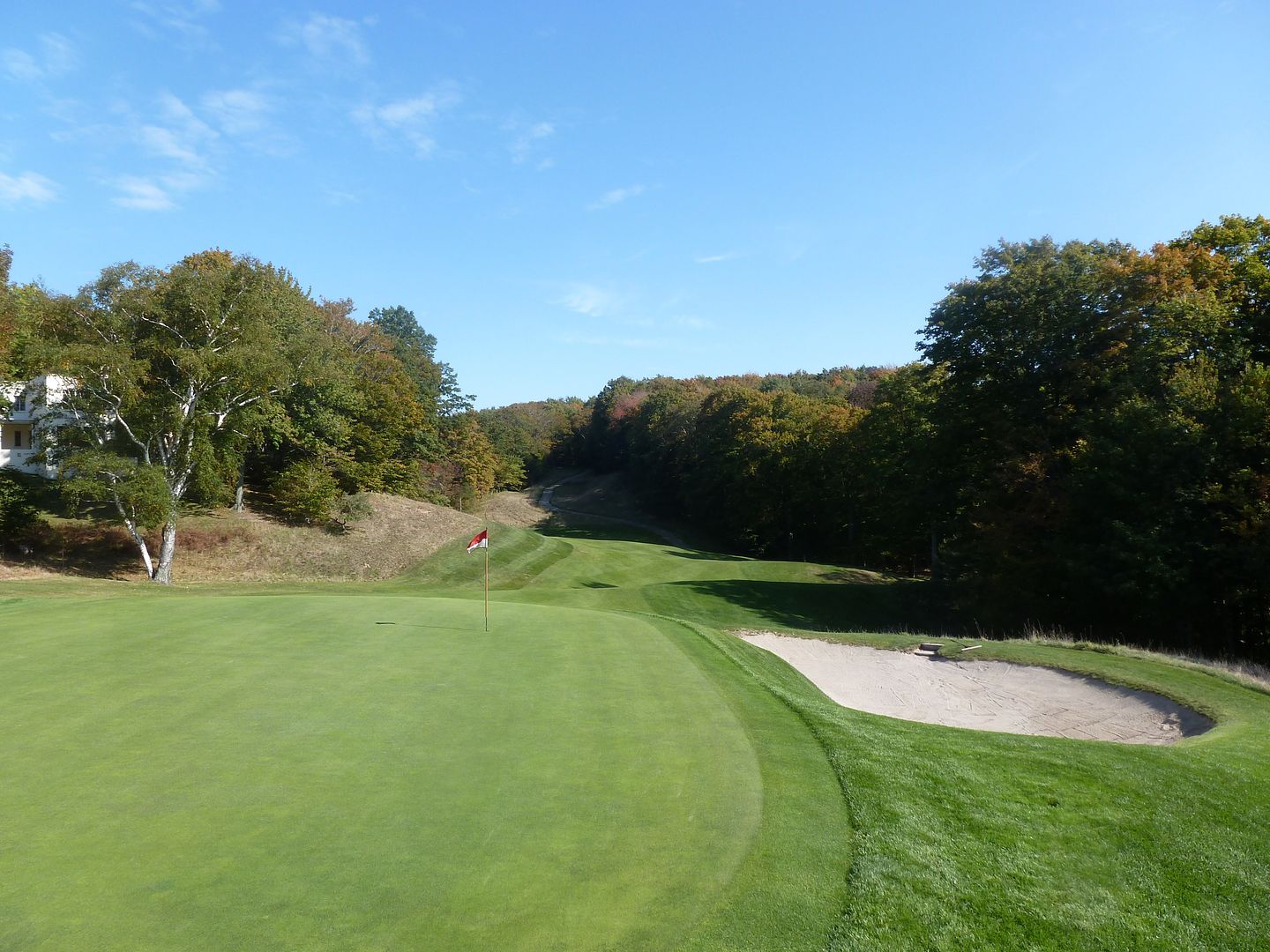 |
| 17th from Behind |
Hole 18: Par 4, 400 Yards
I am unsure which tee was the original back tee for the 18th - the better, lower tee or the less interesting, but more comfortably routed upper tee.
From the lower tee, one can challenge the inside of the dogleg for a shorter approach and preferred angle into the green. There is little fear of running through the fairway.
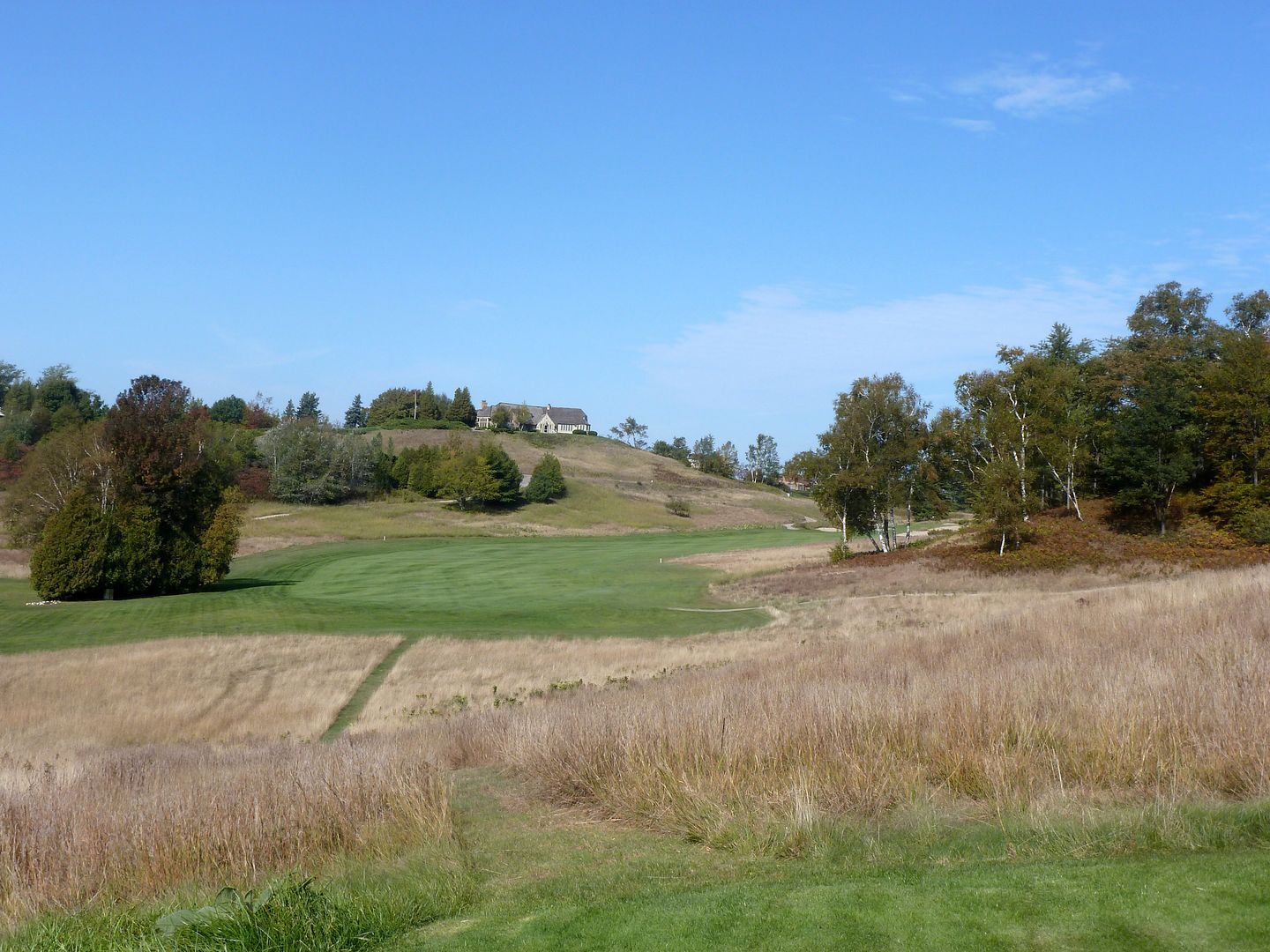 |
| The Lower/Back Tee |
From here the tee shot is very awkward, forcing most players to hit less than driver so that they do not run through the fairway. Brave players can attempt to carry the corner.
 |
| The Upper Tee |
The approach is played uphill to a small green that is surrounded by bunkers.
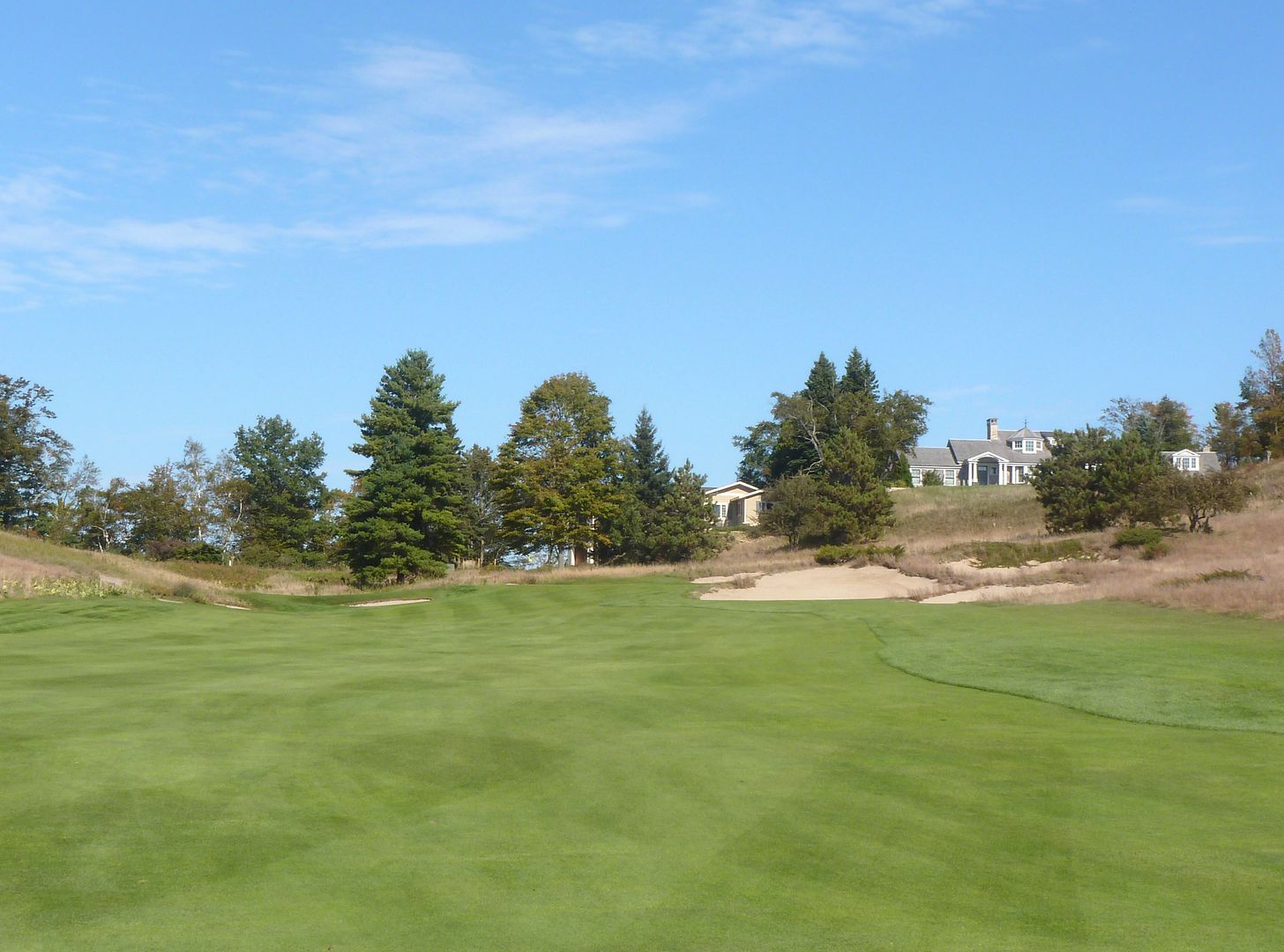 |
| Approach to 18 |
There is also a significant false-front. Note the location of my ball, which did spend some time (briefly) on the green before collecting back into the fairway. Everything cants significantly from right-to-left and I presume many balls will find the front-left bunker.
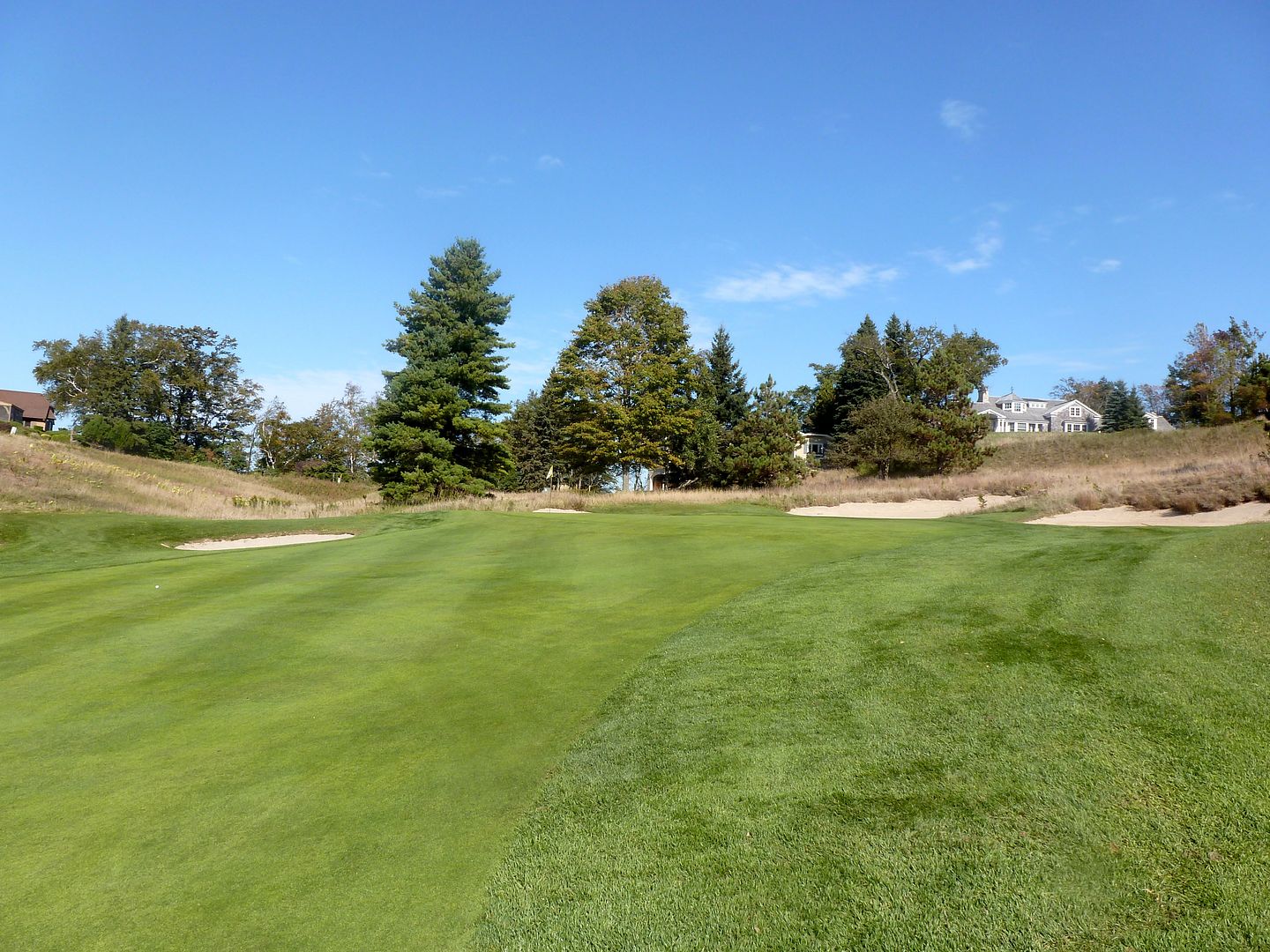 |
| False-Front on 18th Green |
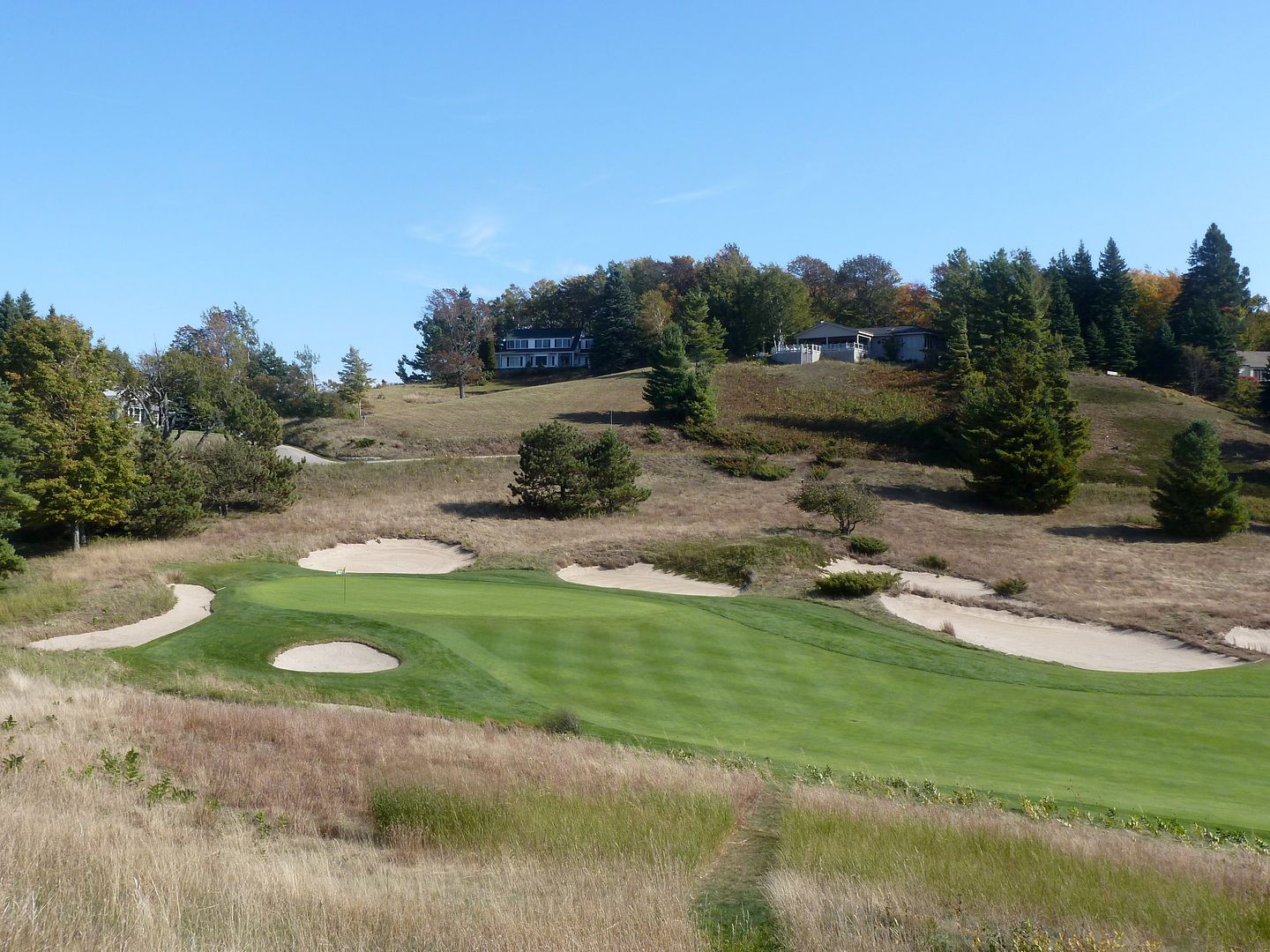 |
| 18th Green as seen from Clubhouse |
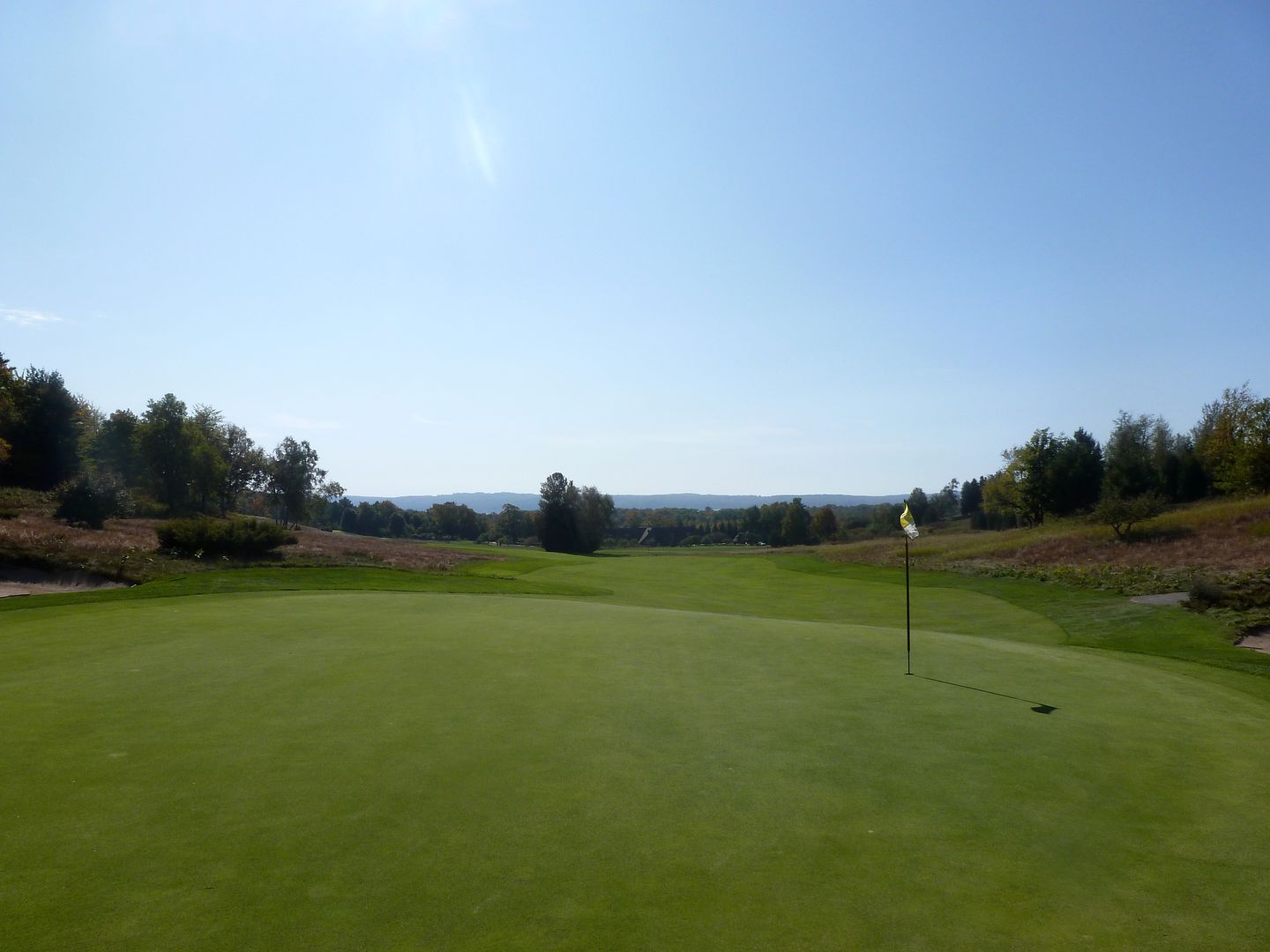 |
| 18th Green from Behind |
































































































































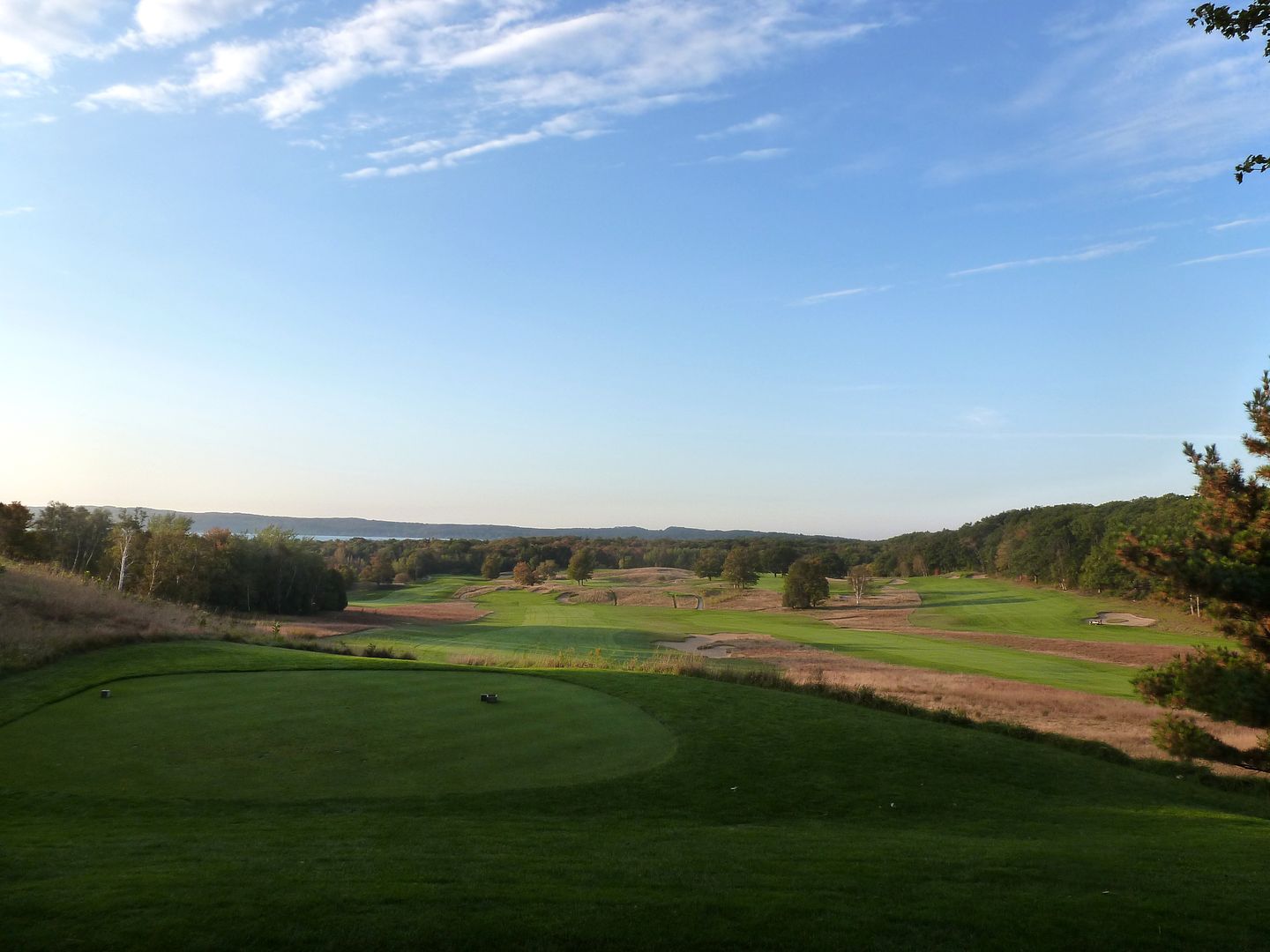

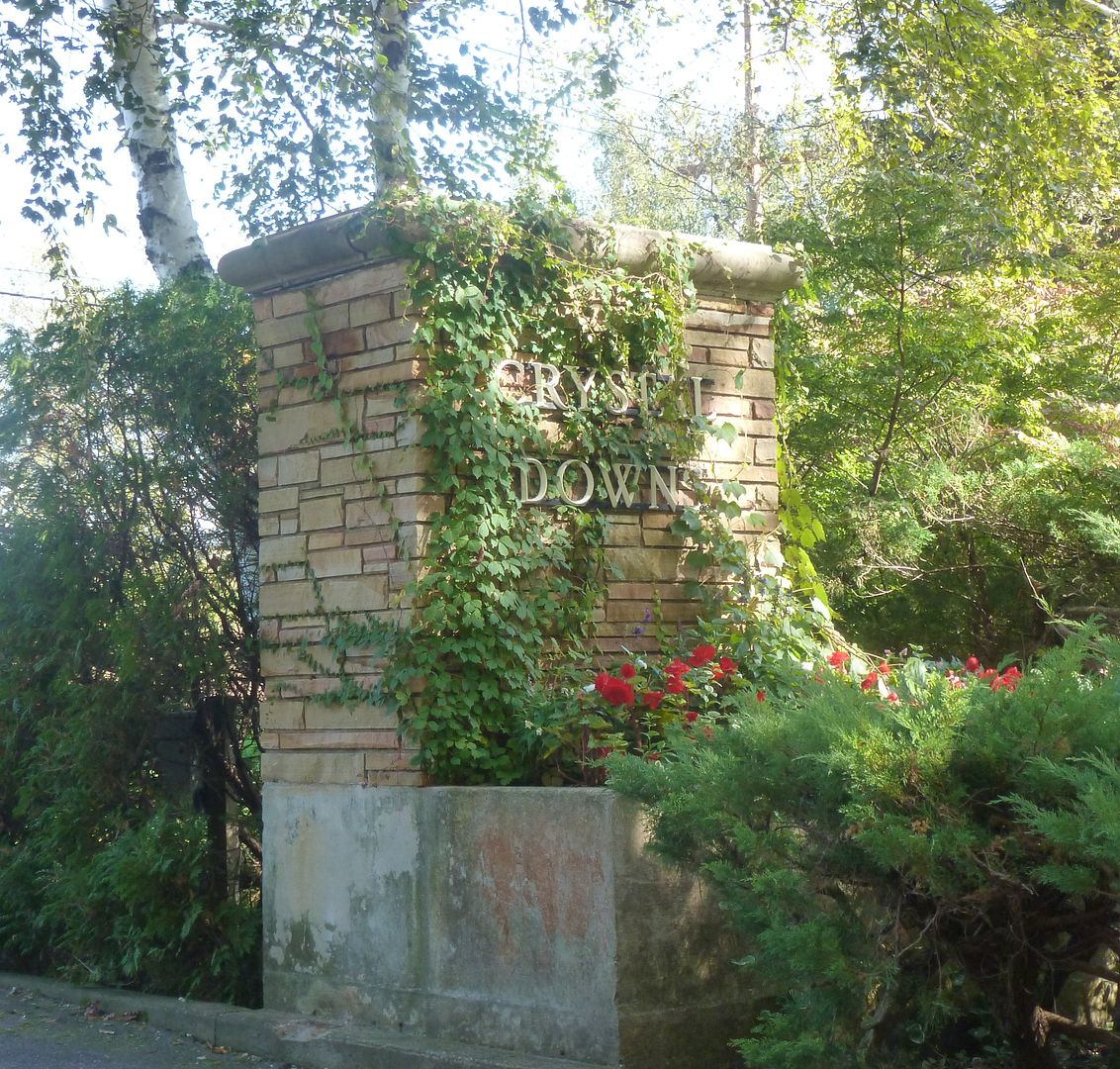






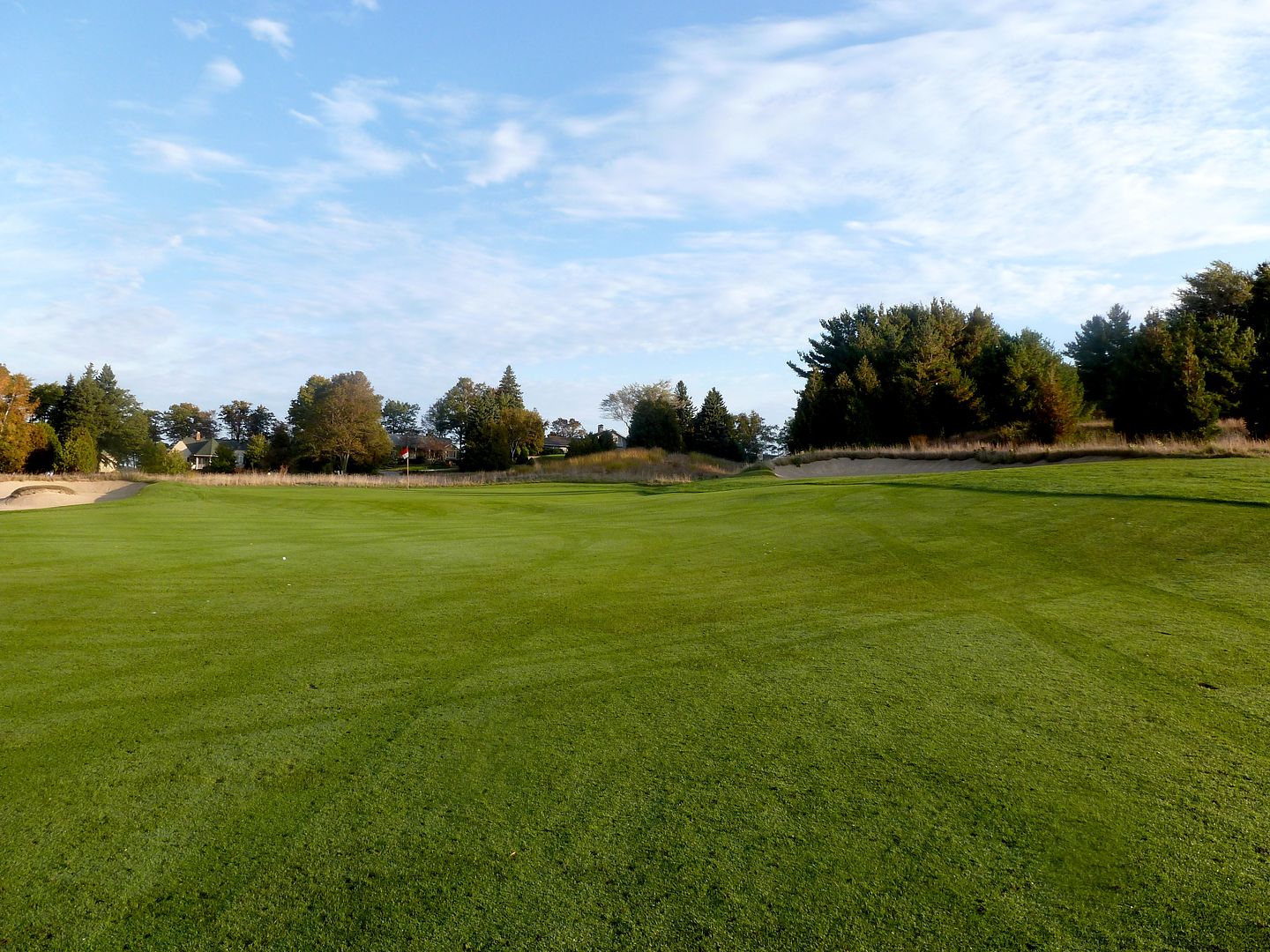
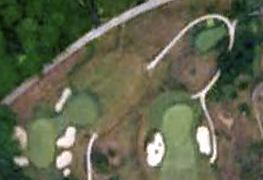


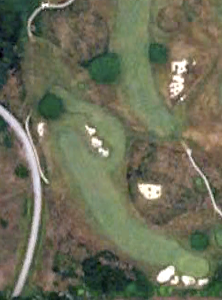
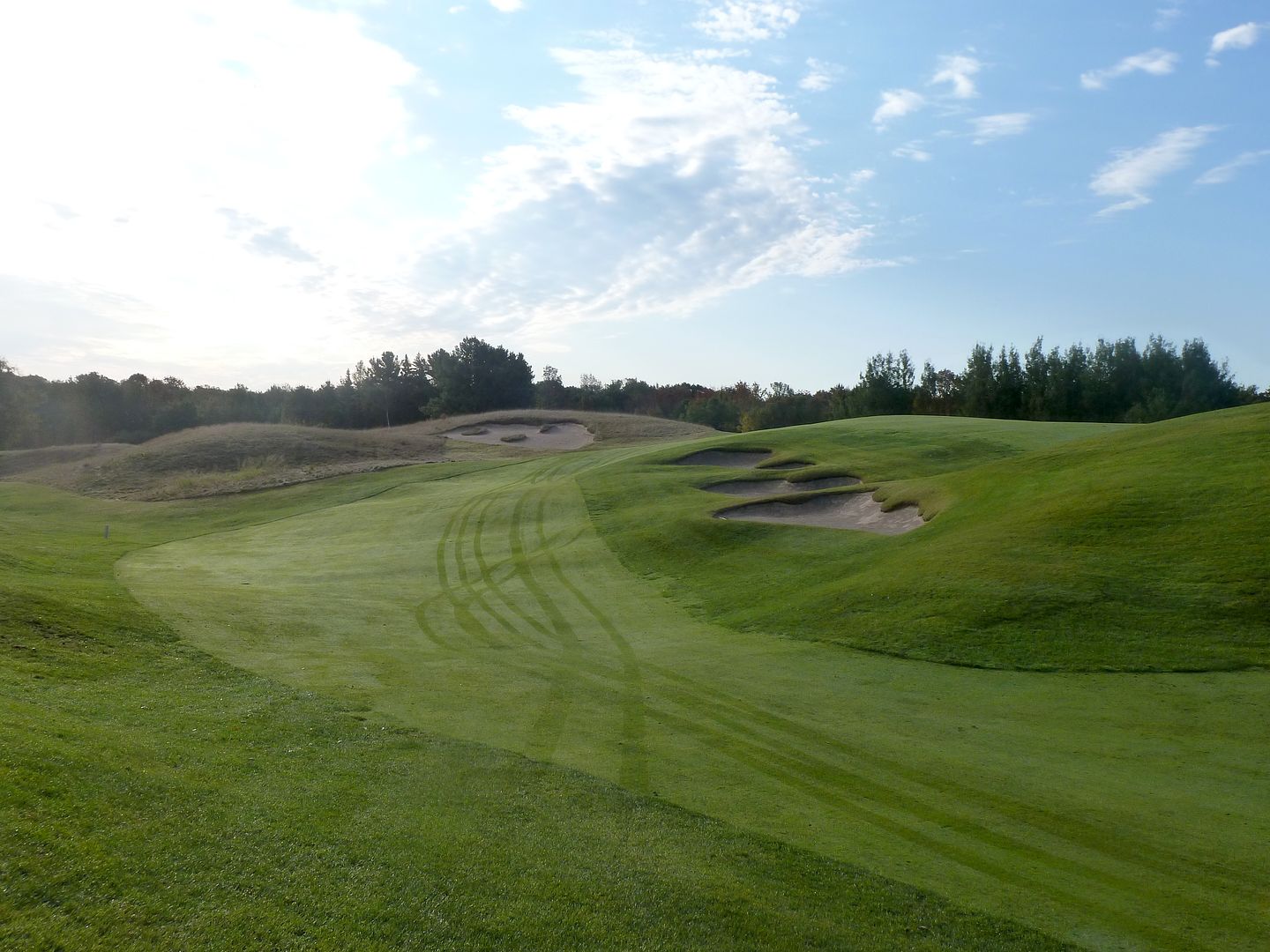
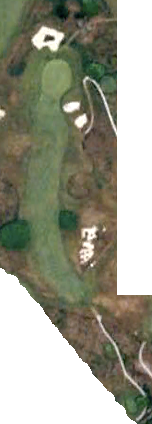
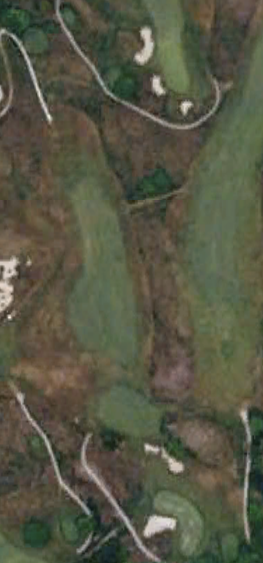

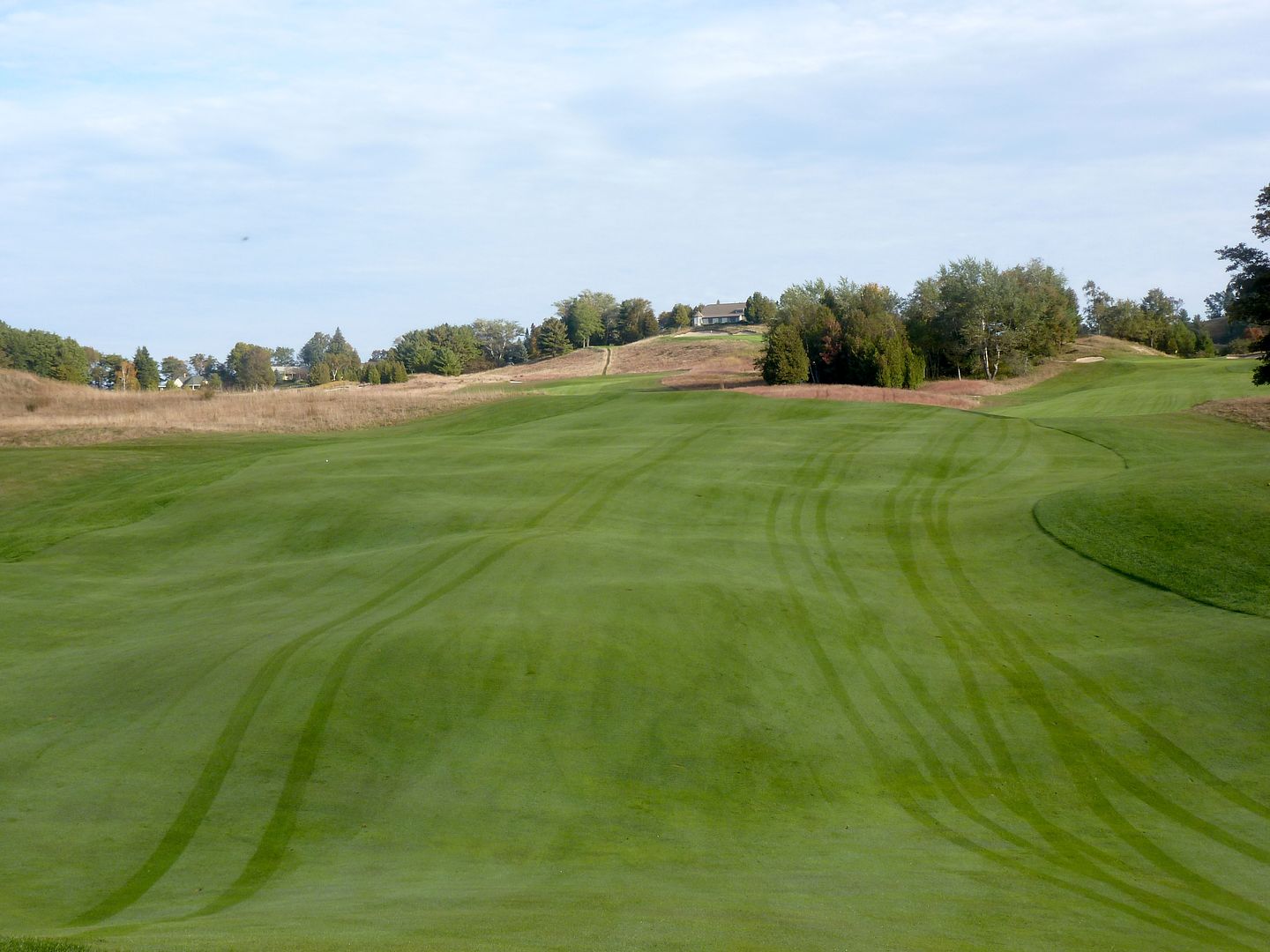
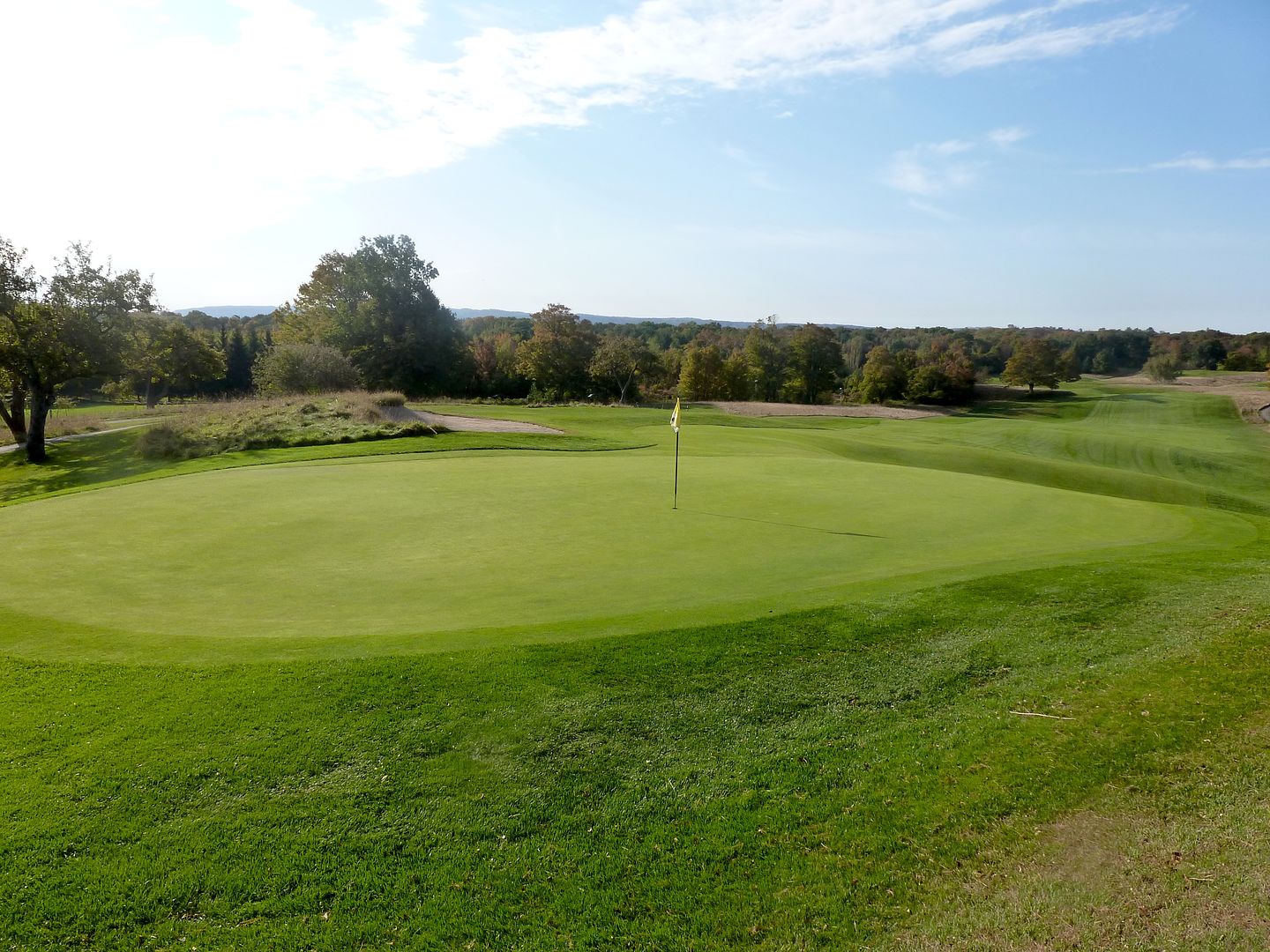
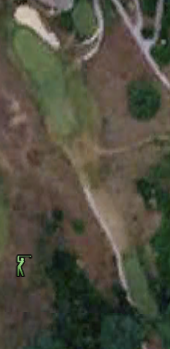

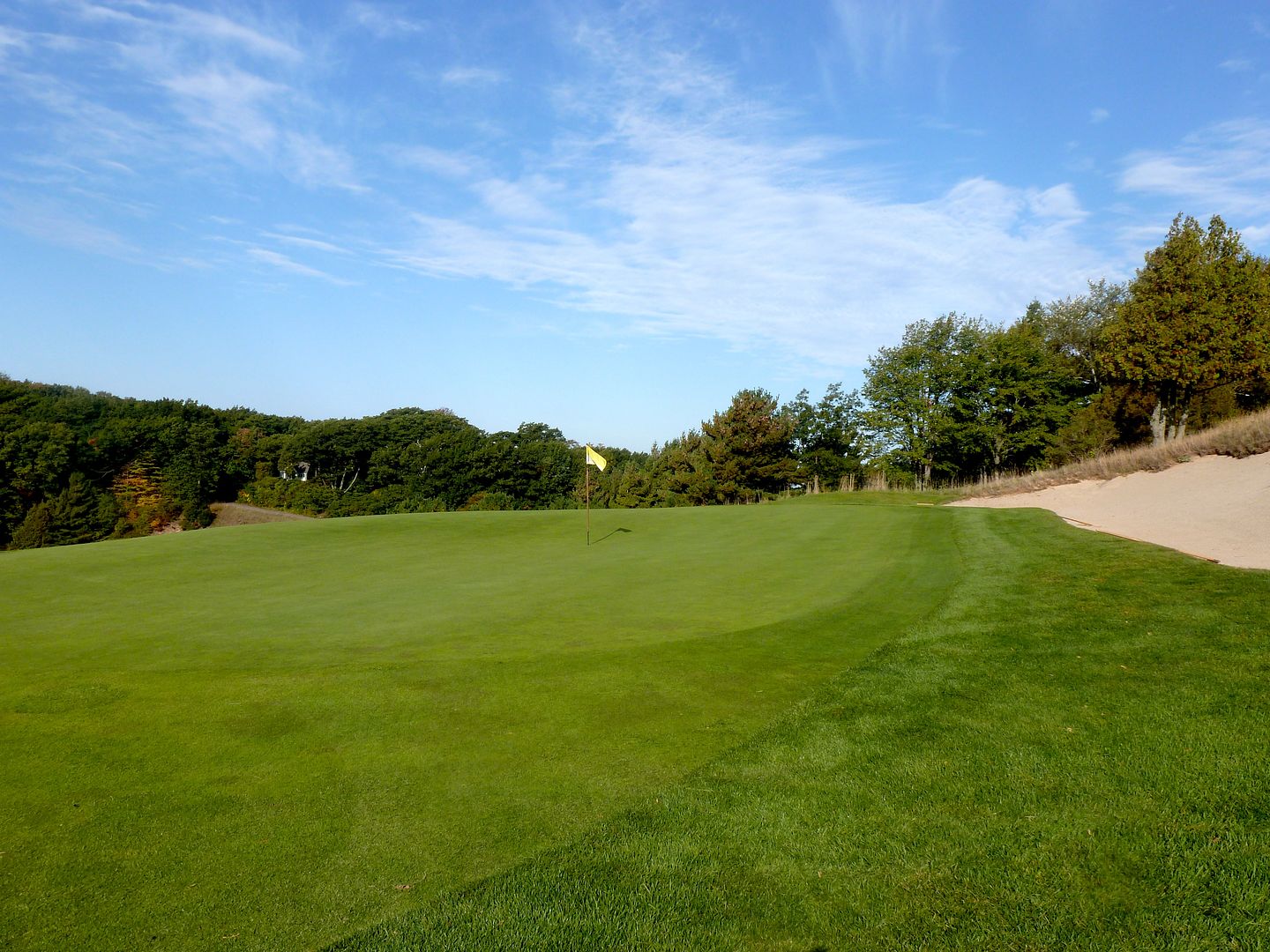
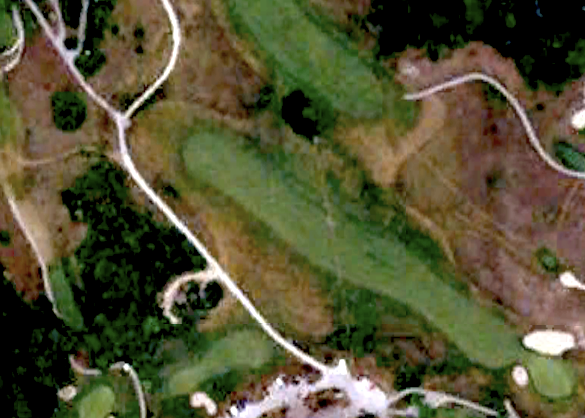
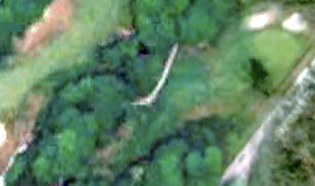
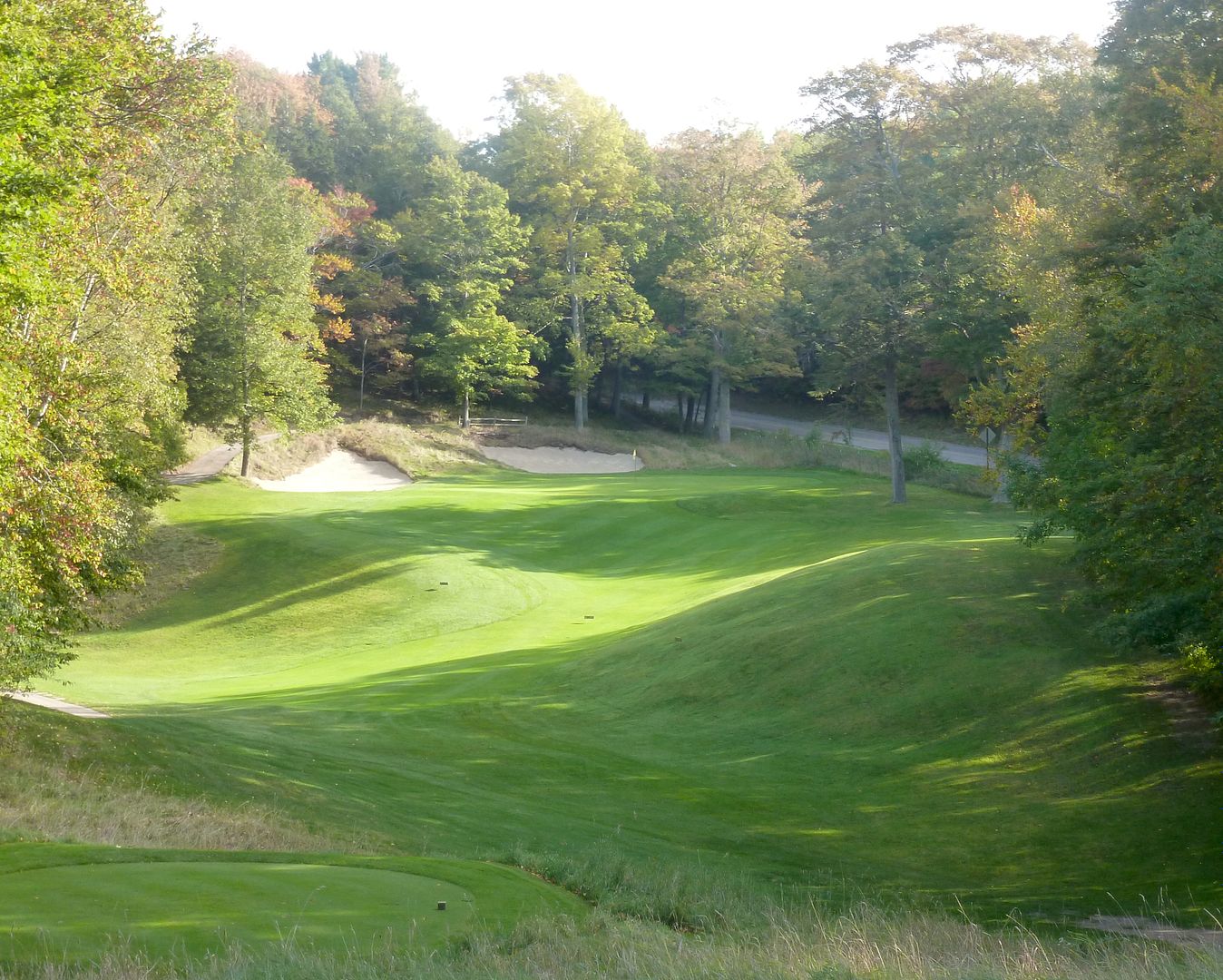

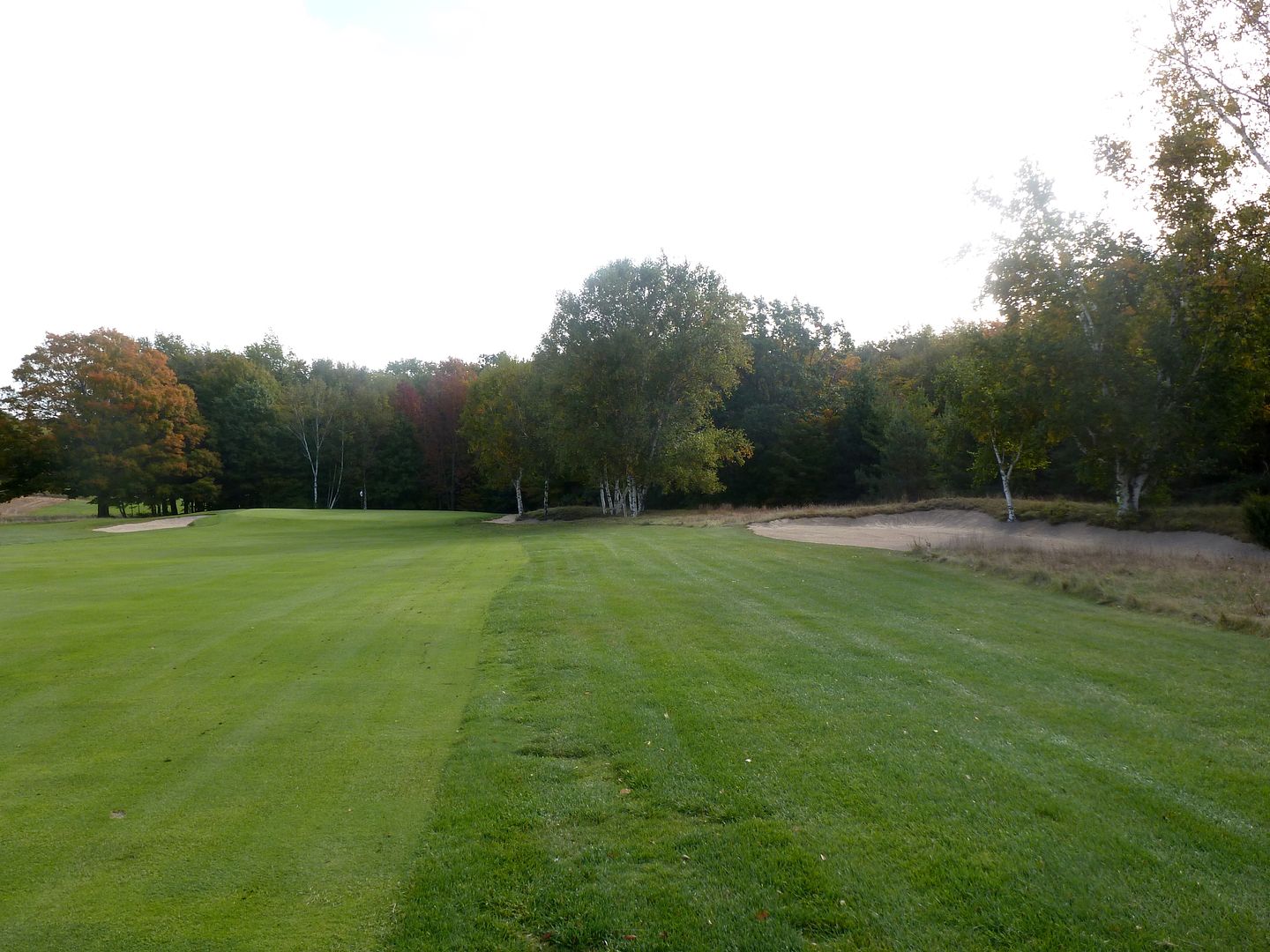


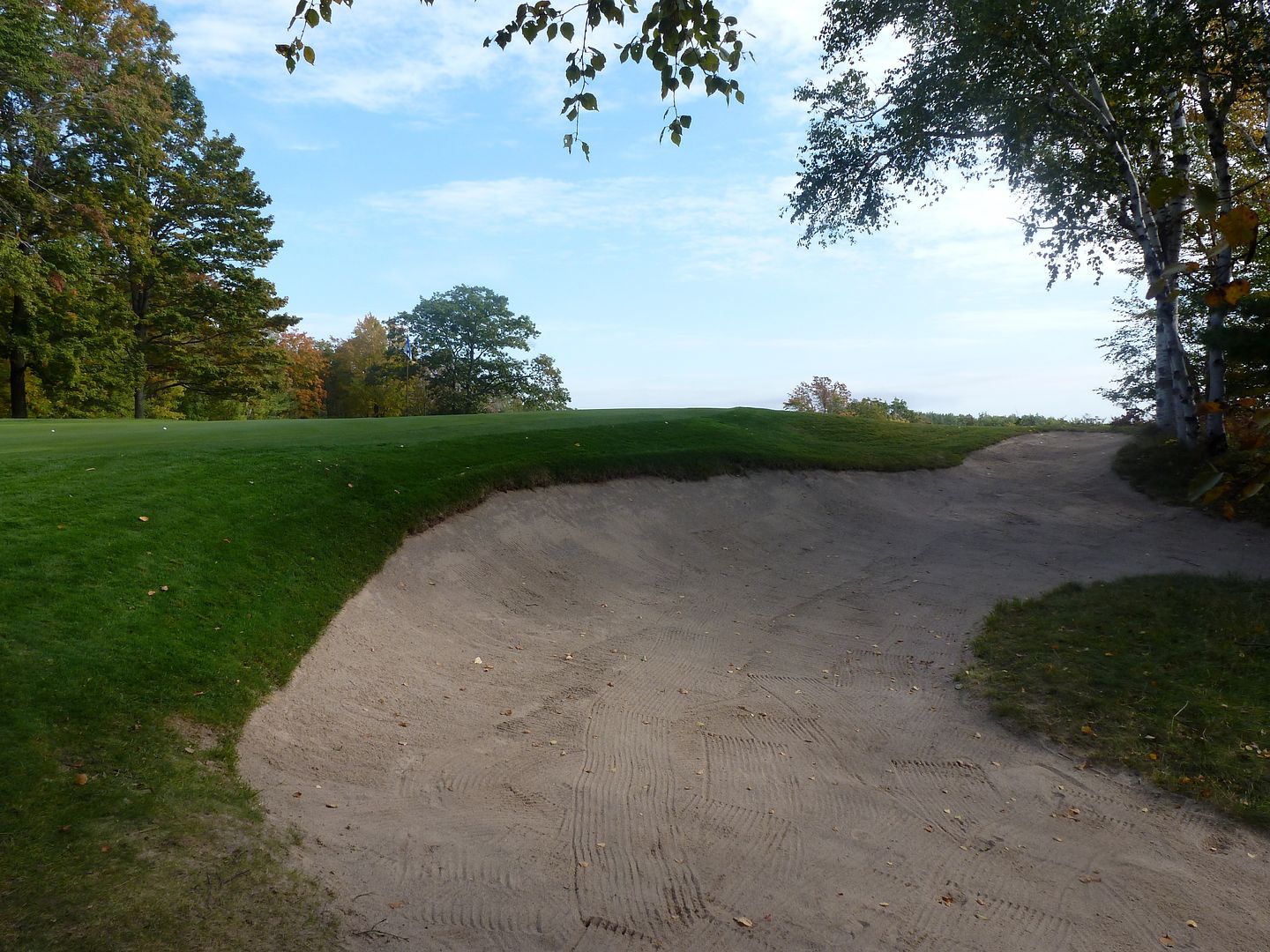
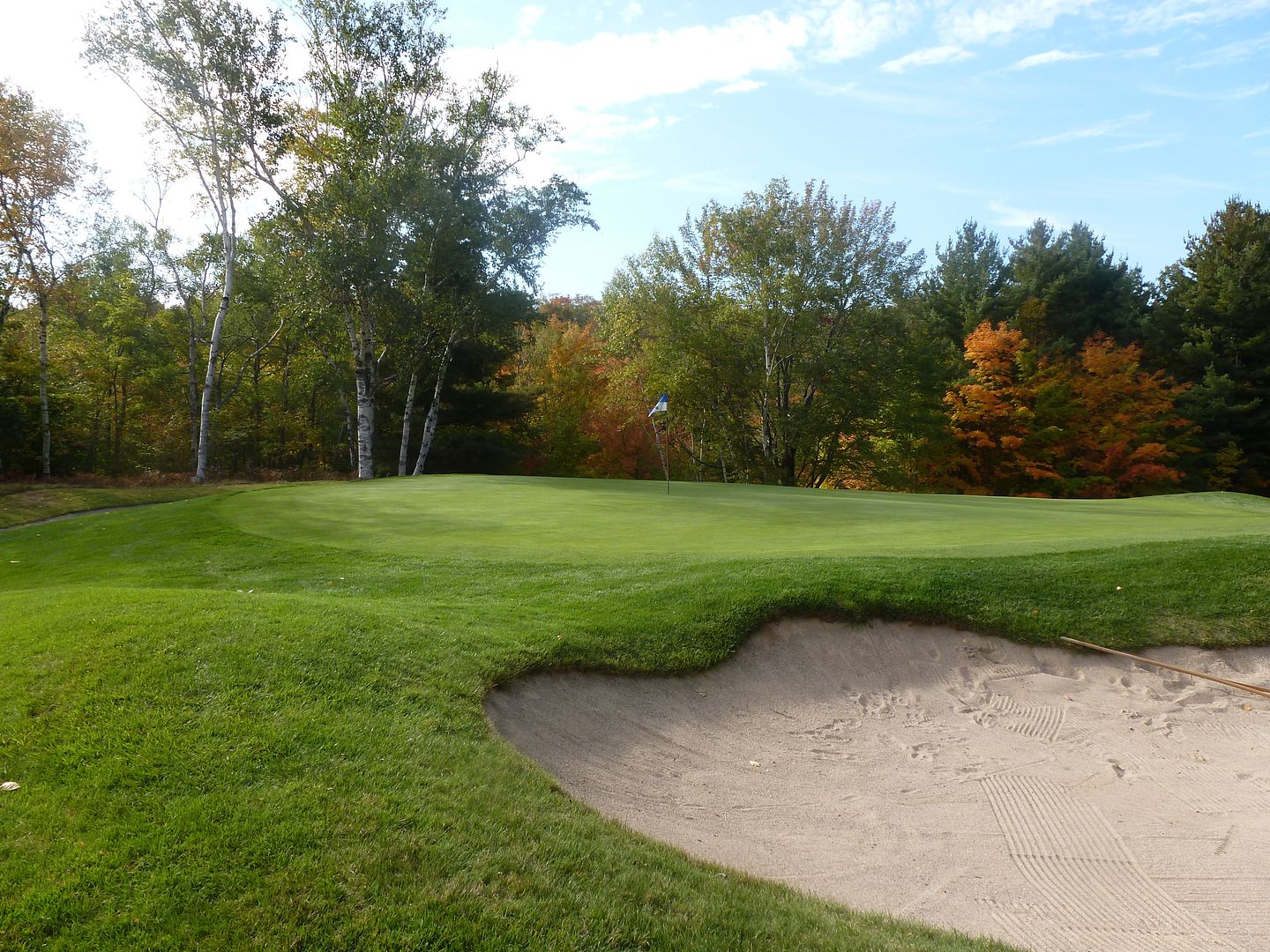

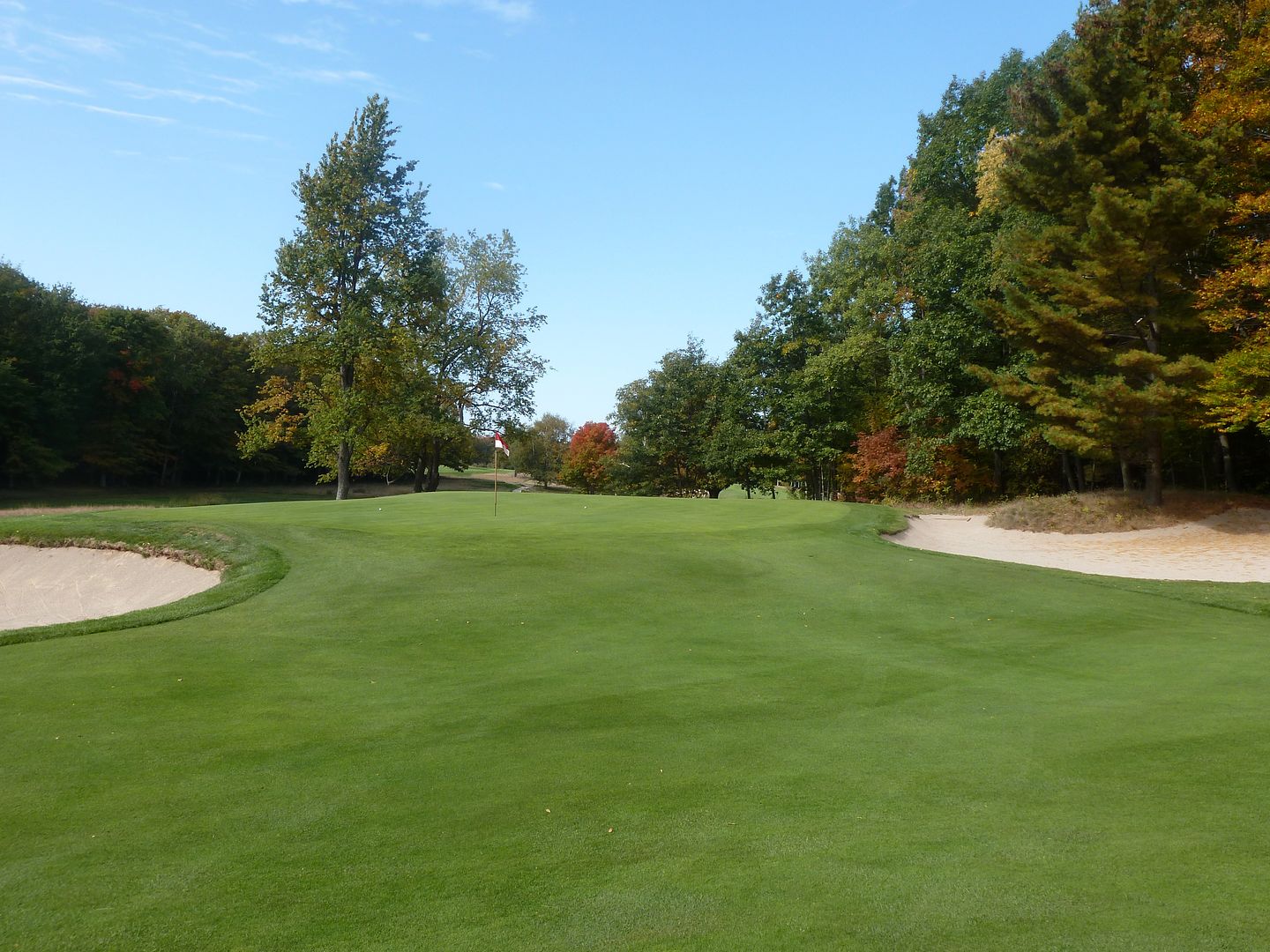
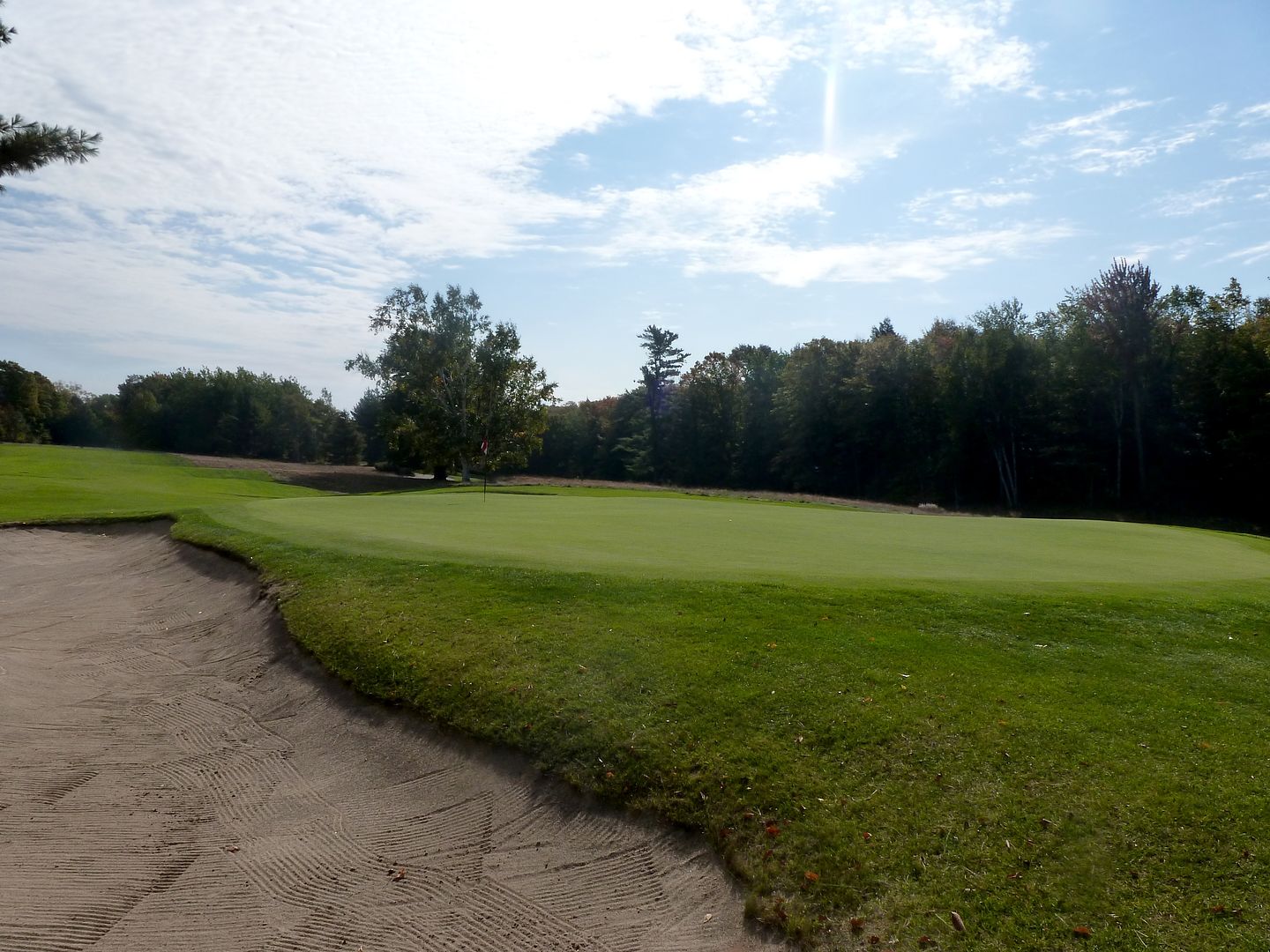
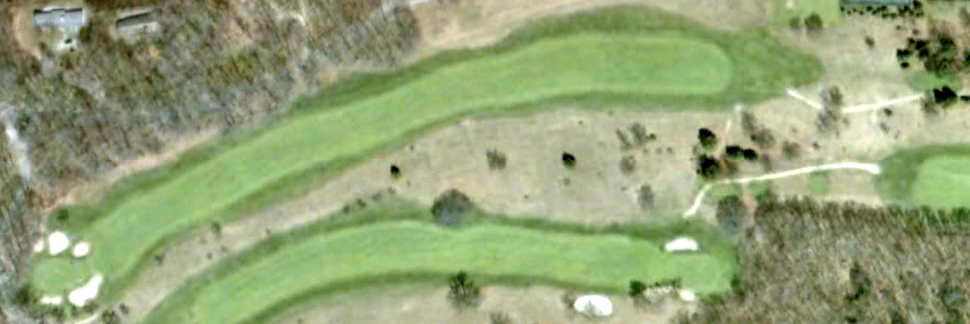
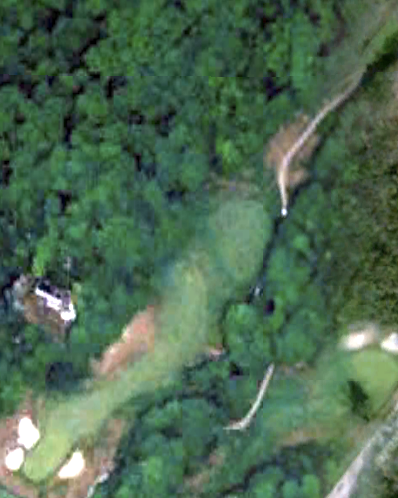
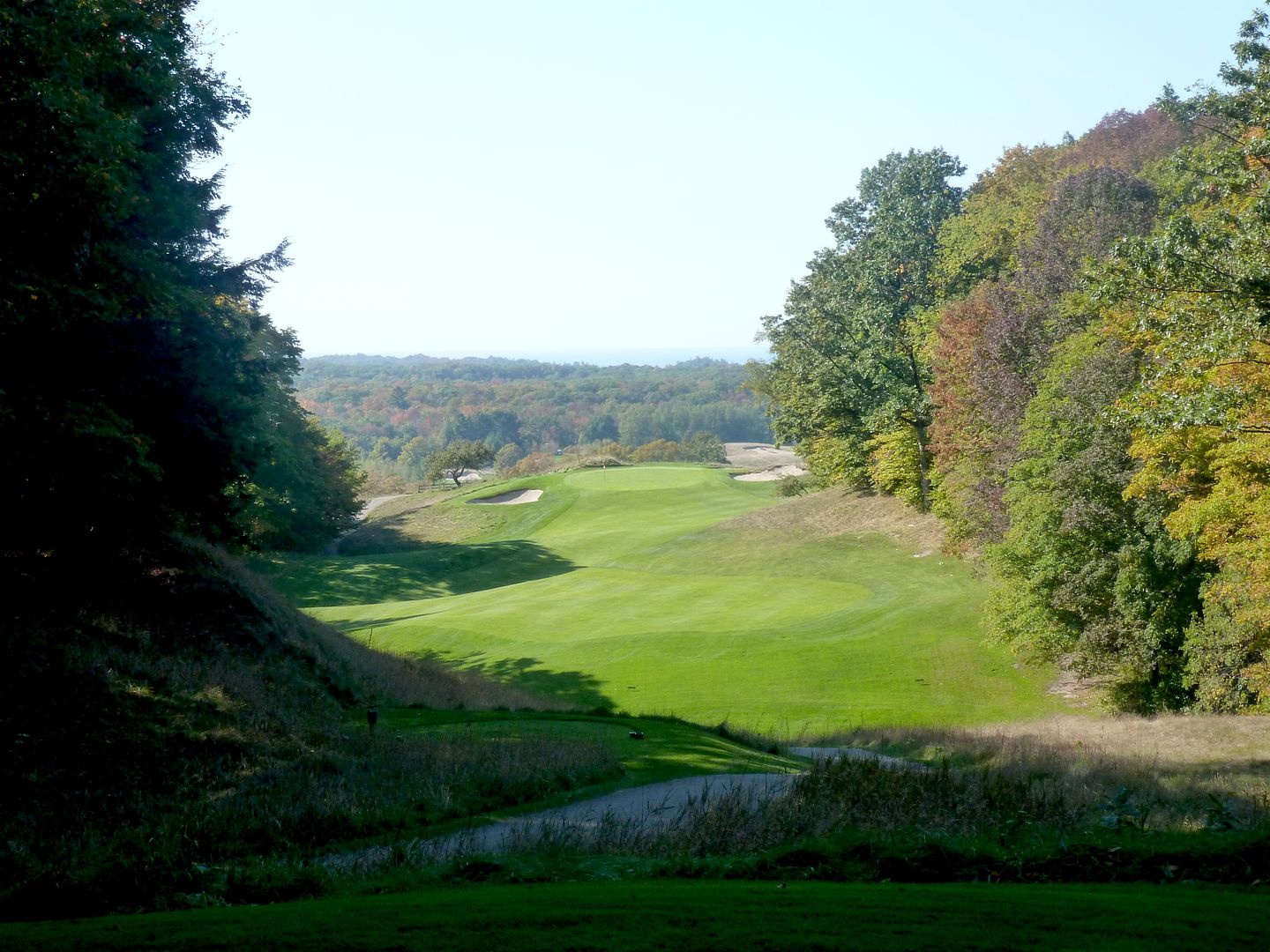
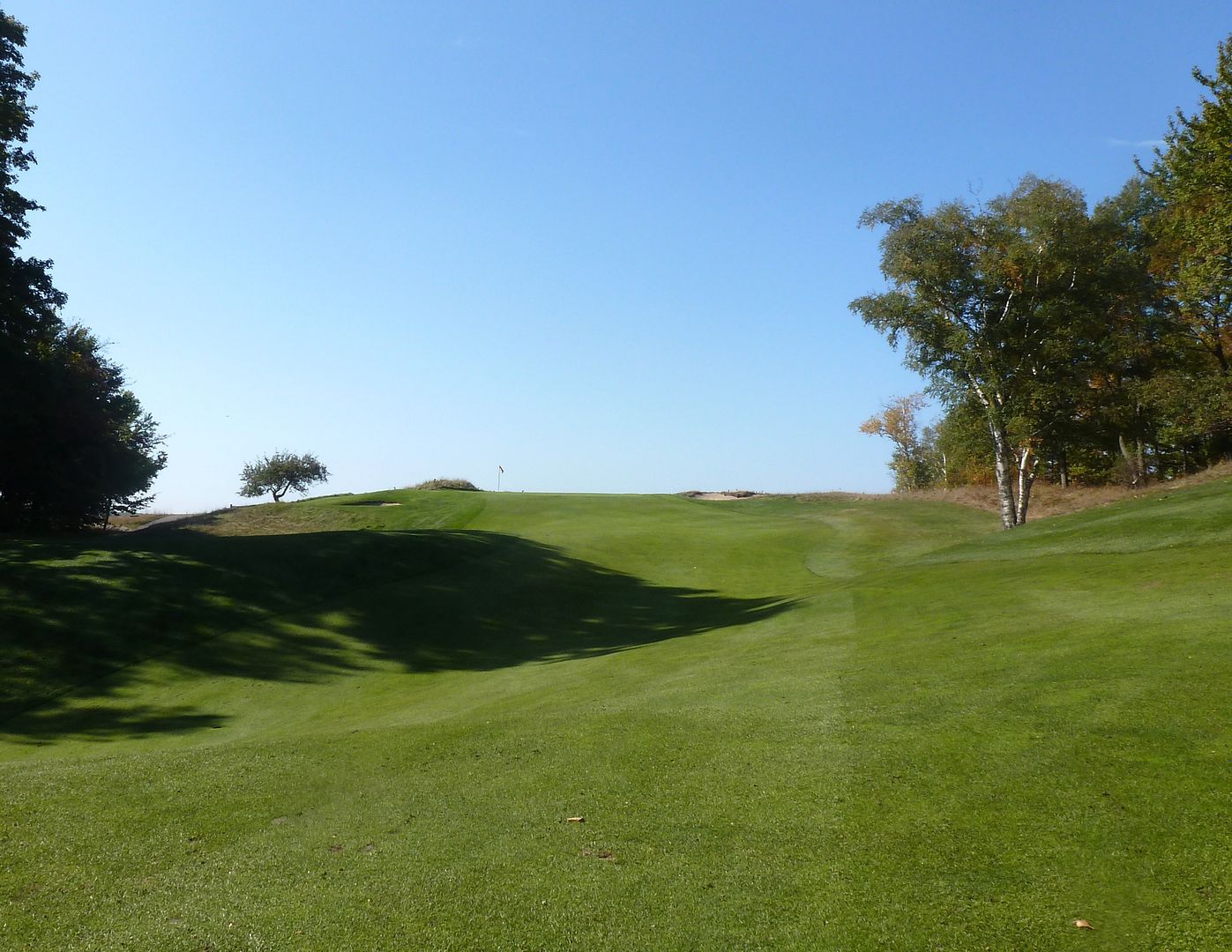
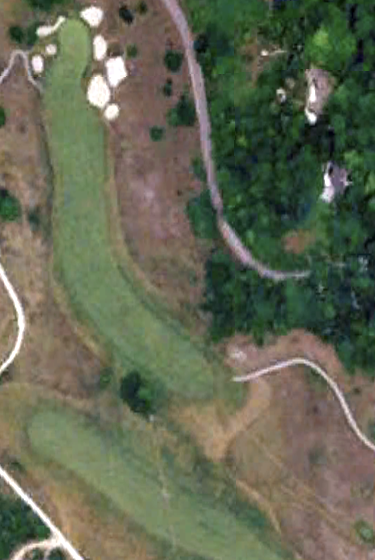

Where are the rest of the holes?
ReplyDeleteAnonymous, if that is your real name :), the rest of the holes are coming -- stay tuned! The stretch of holes from 5-8 at Crystal Downs may be the best four hole stretch in the world.
ReplyDeleteYes, please add the rest! I played there years ago. It is such an amazing track.
ReplyDeleteThanks,
Jeff
Jeff, I agree, Crystal Downs is an amazing place. Hole 6 is now posted, with the rest coming shortly. Enjoy!
DeleteHow does one get onto Crystal Downs? My brother and I are spending 4 days at Boyne and would love to get on the course. I called the pro shop and they told me I had to play with a member (I have no idea how to even contact a member). Any ideas?
ReplyDeleteCome on...
DeleteAwesome!! Thank you!
ReplyDelete